It seems we can’t find what you’re looking for. Perhaps searching can help.
Sign Up for newsletter!
Subscribe to get the latest eBook!
Hotline






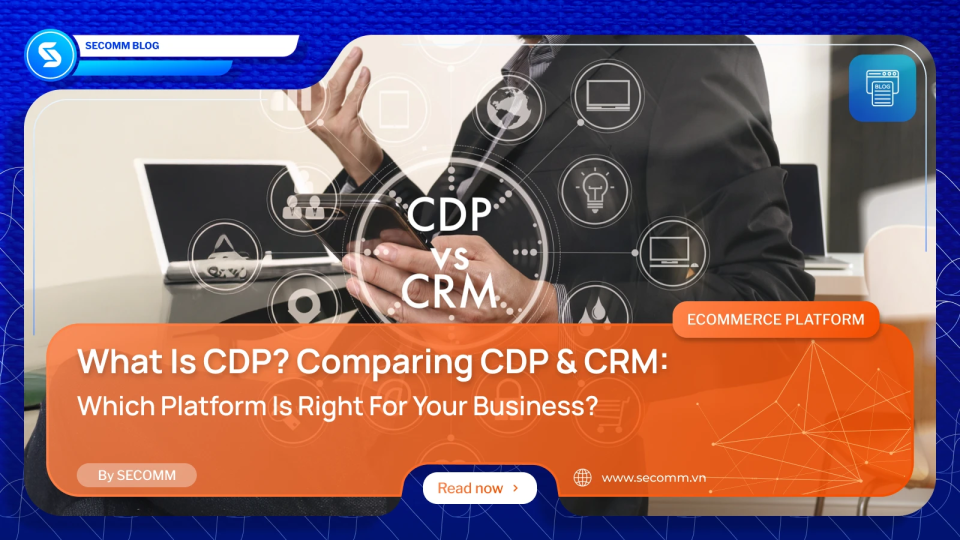
According to research by Harvard Business Review, only 15% of professionals feel they have a comprehensive view of their customer data, making it extremely challenging to create effective online experiences. A common problem is data silos existing between Sales, Marketing, Customer Service, and Product teams. Today, this issue can be resolved with a CDP. So, what is a CDP? How does it differ from CRM, and which platform suits your business best?
A Customer Data Platform (CDP) is a customer data management system that collects, unifies, and analyzes data from various sources such as websites, mobile apps, social media, CRM systems, and point-of-sale (POS) systems. CDPs enable businesses to create a comprehensive 360-degree customer profile, providing a full view of the customer journey and allowing for personalized experiences at every touchpoint.
Unlike isolated storage systems, a CDP automatically gathers, cleanses, and synchronizes first-party data (directly owned by the business) in real-time, creating a solid foundation for data analysis and marketing automation.
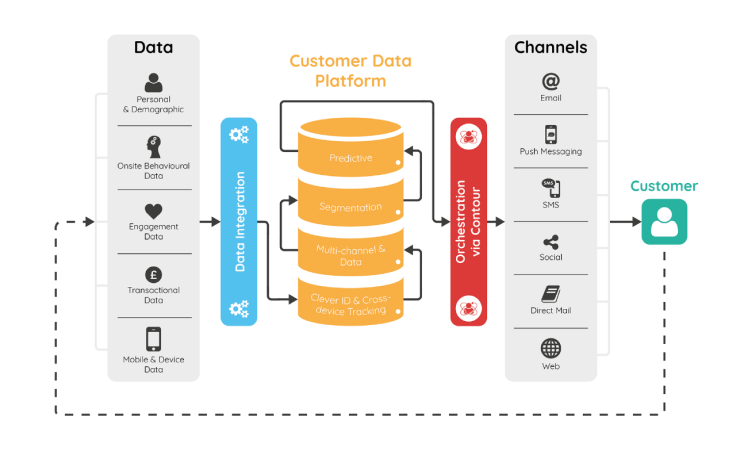
By adopting a CDP, businesses gain numerous advantages:
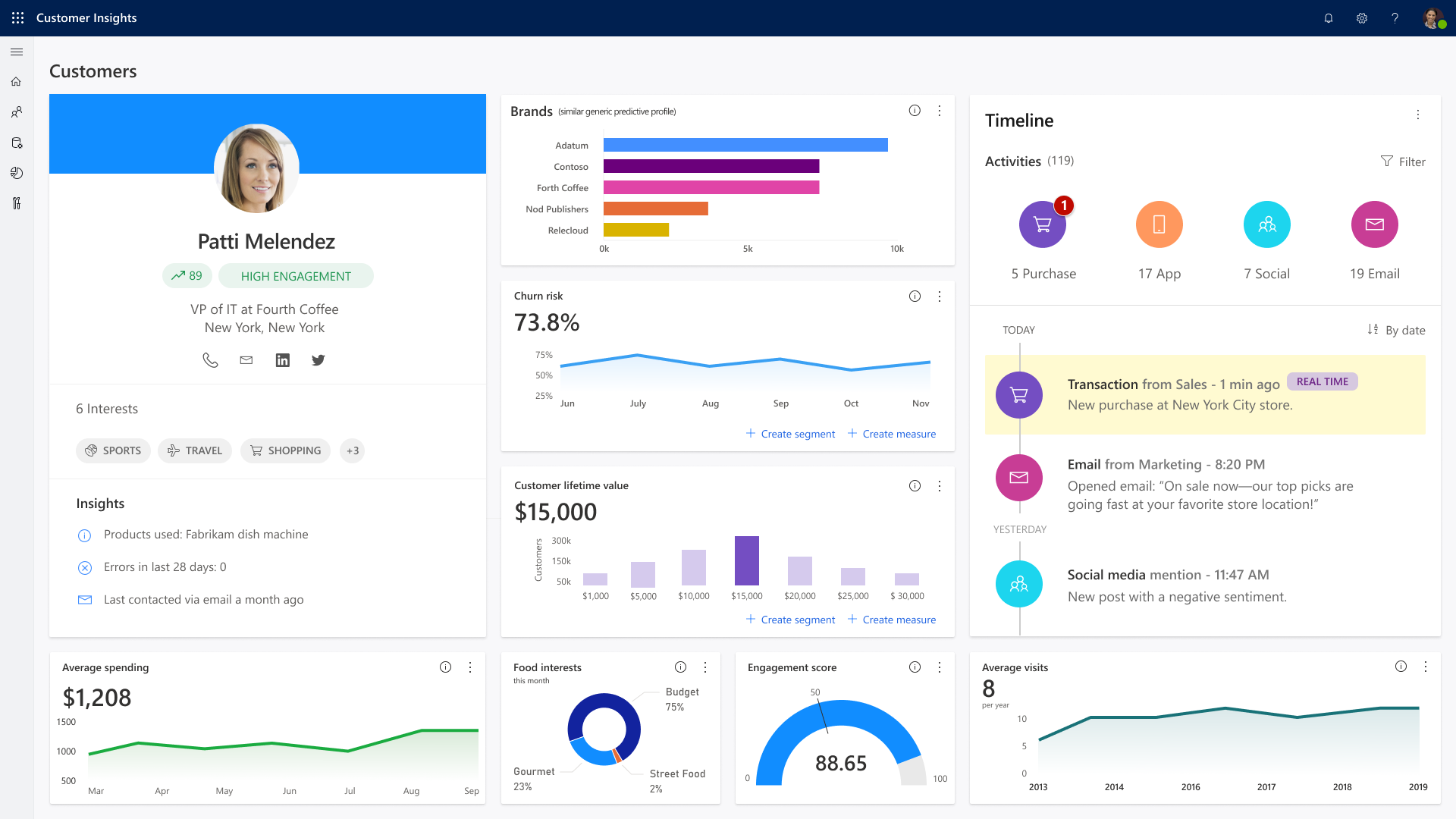
CDPs are ideal for medium to large businesses that pursue customer-centric strategies or are undergoing digital transformation.
Specifically:
Personalized Multichannel Marketing Campaigns
An eCommerce company uses a CDP to gather customer behavior data from its website, social media, email, and mobile app. When a customer frequently searches for sports products, the CDP automatically segments them and sends personalized email recommendations and timely promotions, delivers relevant content on Facebook, and displays personalized banners during website visits. This leads to significantly higher conversion rates and sales across marketing channels.
Optimizing Sales Processes and Upselling
Sales teams access consolidated CDP data: purchase history, interaction frequency, product search behavior to identify prospects likely to buy during weekends. The system can send short-term offers or related product promotions, increasing upsell and cross-sell opportunities.
Customer Journey Coordination and Performance Measurement
CDPs help marketers design seamless customer journeys from discovery to purchase and post-sale care. Businesses can identify and act on customers’ “golden moments” (e.g., purchase decisions triggered by free shipping vouchers). Detailed reports on conversion rates, average order value (AOV), customer acquisition cost (CAC), and effective customer segments optimize marketing strategy and budget.
Customer Relationship Management (CRM) software or solutions help businesses store, organize, and manage contact information and interaction histories with customers, potential clients, and current clients. CRMs track calls, emails, appointments, transactions, and service feedback and automate many sales and customer service processes. This supports improving customer experience, increasing revenue, and better customer retention.
Read more: https://secomm.vn/what-is-crm-top-5-benefits-of-using-crm-software/
| Criteria | CDP | CRM |
| Primary Purpose | Unified, analytical, and personalized multi-channel data | Manage relationships, communication history, and customer care |
| Data Type | Multi-source first-party data (behavior, transactions, journey, profiles) | Communication, existing transaction data with identified customers |
| 360° Customer Profile | Yes | Incomplete |
| Data Update Frequency | Automatic, real-time | Mainly manual or semi-automated |
| Main Use Cases | Customer insight, experience personalization, marketing optimization | Sales management, customer support, pipeline tracking |
| Primary Users | Marketing, data analysis, customer development strategy | Sales, customer service, relationship management |
In today’s competitive market, delivering a personalized customer experience is no longer optional; it’s a key driver for optimizing marketing efforts and accelerating business growth. Whether you choose a CDP or a CRM platform, selecting the right solution for your specific business needs is essential to improving operational efficiency and customer engagement.
If you’re looking for a trusted partner to help you implement, operate, and optimize your eCommerce ecosystem, don’t hesitate to reach out to SECOMM. We’re here to support you with expert guidance and tailored solutions to power your long-term growth.
 What is a CDP and how does it work?
What is a CDP and how does it work? What’s the main difference between CDP and CRM?
What’s the main difference between CDP and CRM? Which businesses should use a CDP?
Which businesses should use a CDP? Is CDP implementation complex and what is needed?
Is CDP implementation complex and what is needed? Does CDP guarantee increased leads or revenue?
Does CDP guarantee increased leads or revenue? Is the data stored on a CDP secure?
Is the data stored on a CDP secure? 57
57
 5,887
5,887
 1
1
 32
32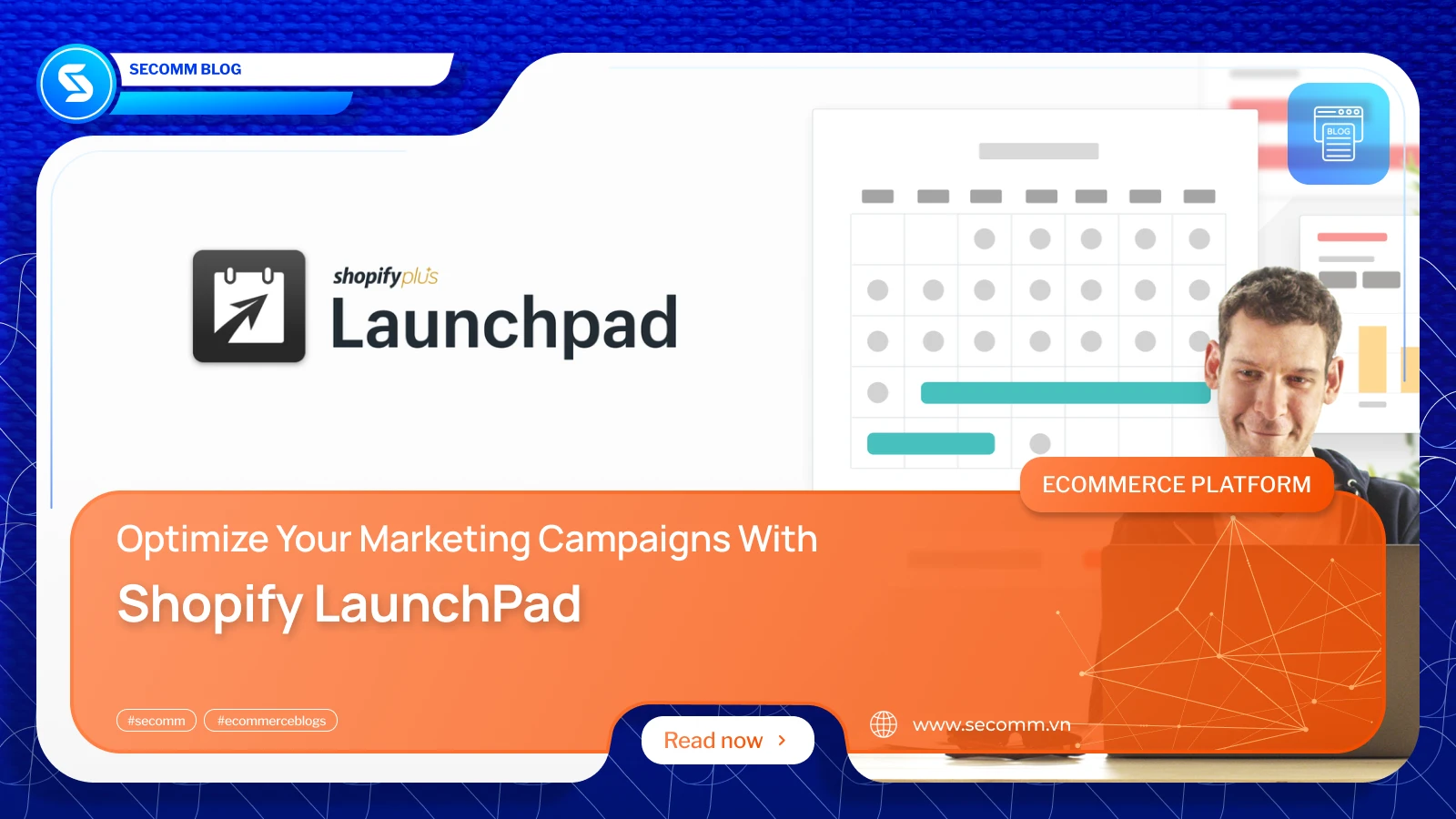
In today’s eCommerce world, staying ahead of the competition requires not only a great product but also effective tools to manage and optimize your store’s operations. Shopify, one of the leading eCommerce platforms, offers a variety of features designed to help businesses thrive. Among these is Shopify LaunchPad, a powerful tool aimed at automating and streamlining promotional events.
In this blog post, we’ll dive into what Shopify LaunchPad is, how it works, and the key features that make it a valuable asset for online store owners. We’ll also explore the benefits and drawbacks of using this tool, helping you decide if it’s the right fit for your business needs. Whether you’re planning a major sale, a product launch, or a special campaign, understanding the capabilities of Shopify LaunchPad can help you execute your strategies more efficiently and effectively.
Shopify LaunchPad is a specialized feature within the Shopify platform designed to facilitate the management and execution of promotional events for e-commerce businesses. It serves as a comprehensive toolset that allows store owners to automate the setup, scheduling, and execution of events such as product launches, flash sales, and holiday promotions.
Essentially, Shopify LaunchPad enables businesses to plan and implement their marketing strategies more efficiently by automating repetitive tasks and ensuring timely execution of events, thereby enhancing overall store management and customer engagement.
There are two common ways to utilize Shopify LaunchPad. One is creating new events, another is modifying the existing events. Let’s break it down:
To create a new LaunchPad event, you’ll follow these steps:
To modifying the existing LaunchPad events, you’ll need to:
Navigate to the LaunchPad events section in your Shopify dashboard.
Shopify LaunchPad offers a comprehensive suite of features designed to enhance the management and execution of promotional events for eCommerce businesses.
Automated Event Scheduling: LaunchPad automates the activation and deactivation of events based on preset start and end dates, eliminating the need for manual intervention and ensuring timely execution of promotional campaigns.
Event Customization: Businesses can extensively customize their promotional events within LaunchPad. This includes defining event types such as sales, product launches, or holiday promotions, setting specific start and end dates (including time zones for global campaigns), configuring discounts (whether percentage-based or fixed amounts), excluding certain products or collections, and customizing promotional messaging and banners to align with branding strategies.
Integration Capabilities: Shopify LaunchPad seamlessly integrates with other Shopify features and third-party apps. It syncs with Shopify’s inventory management to ensure accurate stock availability during promotions, integrates with email marketing tools for targeted promotional campaigns, and connects with analytics platforms to track campaign performance and customer behavior.
Performance Analytics: The platform provides robust analytics and reporting capabilities, offering insights into event performance metrics such as total revenue generated, units sold, average order value, click-through rates, conversion rates, customer acquisition cost, top-performing products, best-selling categories, and geographic sales distribution. This data empowers businesses to make data-driven decisions to optimize future promotions and marketing strategies.
Using Shopify LaunchPad offers several key benefits for eCommerce businesses:
Time-saving through automation: Shopify LaunchPad automates the entire process of setting up and managing promotional events. This includes scheduling events to start and end at specific times, activating discounts or special offers automatically, and deactivating them once the event concludes. By automating these tasks, businesses can save significant time that would otherwise be spent manually coordinating promotions.
Improved sales management: By automating event activation and deactivation, LaunchPad ensures precise control over sales periods, product launches, and promotional campaigns. Businesses can schedule events in advance, allowing for strategic planning and coordination across different channels. This capability not only improves the efficiency of sales management but also enhances the effectiveness of promotional efforts by ensuring timely execution and optimized sales strategies.
Enhanced customer experience: Streamlined and well-managed promotional events contribute directly to a better shopping experience for customers. With LaunchPad, businesses can communicate promotions clearly and effectively to their audience, reducing confusion and improving transparency. Timely execution of promotions also enhances customer satisfaction by delivering on expectations and providing a seamless shopping experience.
Reach new potential customers: Shopify LaunchPad is instrumental in helping businesses reach new audiences and expand their customer base. Whether through targeted promotions, cross-channel campaigns, or innovative marketing strategies, LaunchPad enables businesses to attract and engage with new potential customers effectively.
While Shopify LaunchPad offers significant benefits, it also has certain limitations that businesses should consider:
Dependence on Proper Setup: The effectiveness of LaunchPad heavily relies on the accurate setup of events, including dates, discounts, and promotional content. Improper configuration or oversight in setup can lead to inconsistencies in promotions or missed opportunities to maximize sales.
Analytics and Reporting Depth: While LaunchPad provides basic analytics and reporting on event performance, businesses looking for advanced analytics capabilities or deeper insights may find the built-in features somewhat limited. Integrating with external analytics tools may be necessary for more comprehensive data analysis.

Cheak, an innovative sportswear brand, leveraged Shopify LaunchPad to streamline its product launches and manage seasonal sales effectively. By scheduling product releases and flash sales in advance, Cheak was able to create buzz and anticipation among its customer base. The automation provided by LaunchPad ensured that promotions started and ended precisely as planned, enhancing the overall shopping experience and boosting sales during peak periods. By using Shopify LaunchPad, Cheak increased 20% month-on-month growth in online store traffic, 100% month-on-month rise in Malaysian expansion store visits, and reduced product launch time, from 1 week to 2 days.
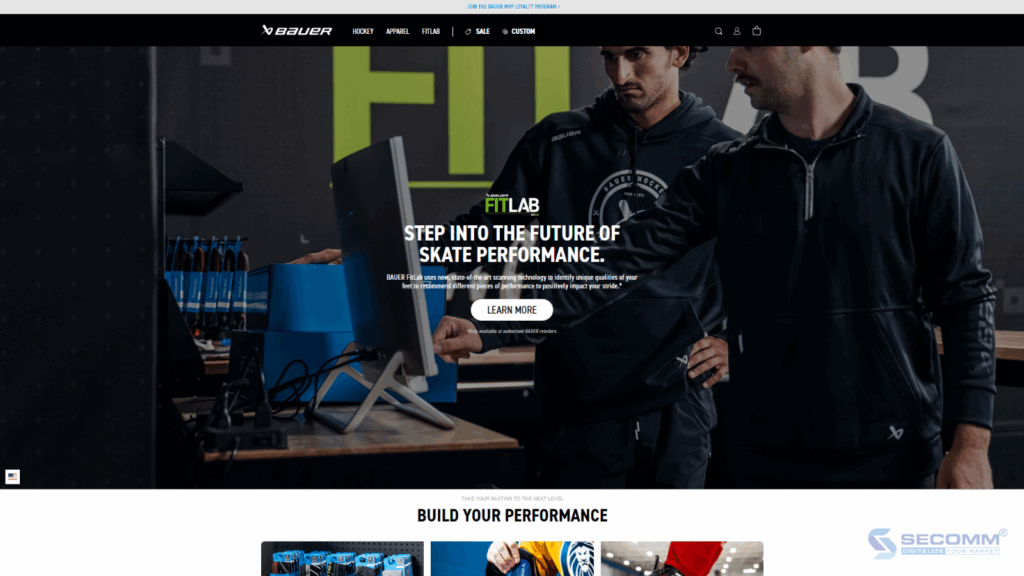
Bauer, a renowned hockey equipment manufacturer, used Shopify LaunchPad after re-platform from Salesforce Commerce Cloud to coordinate large-scale promotional events across multiple regions. By utilizing LaunchPad’s scheduling and automation features, Bauer was able to synchronize discounts and special offers for major events like Black Friday and Cyber Monday. This approach not only simplified the management of these complex campaigns but also maximized their impact, resulting in significant increases in both online traffic and sales.
Shopify Plus and the LaunchPad feature has helped Bauer with 60% revenue increase, 30% order increase, 20% cost savings, 18% conversion rate increase since moving to Shopify, within 6 months year-over-year.
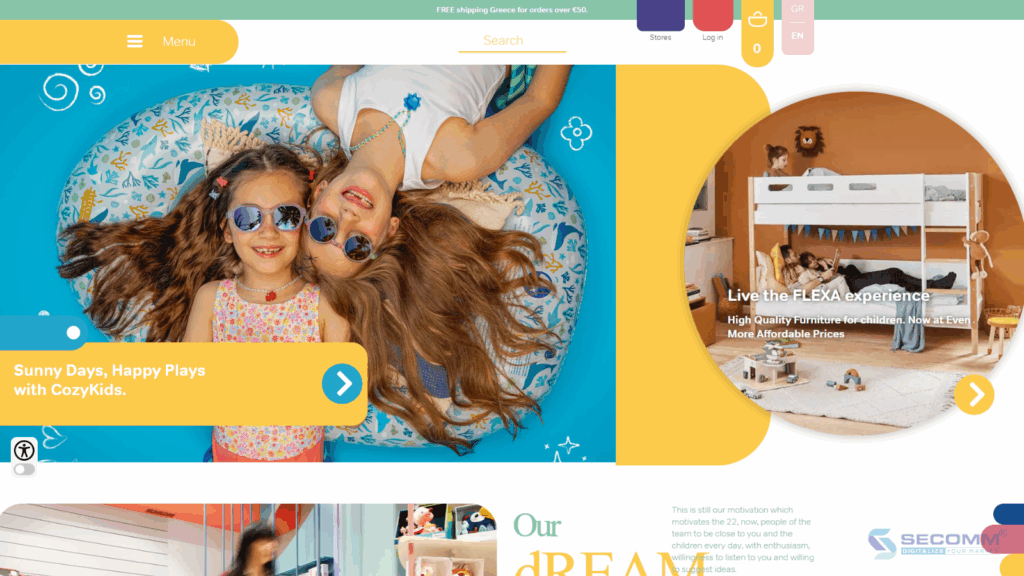
Cozykids, a popular children’s clothing retailer, implemented Shopify LaunchPad to manage its frequent sales and special promotions. The brand utilized LaunchPad to automate discount application and promotional messaging, ensuring a seamless and consistent customer experience. With LaunchPad, Cozykids could easily modify ongoing events and respond quickly to market trends, leading to improved customer engagement and satisfaction. By using LaunchPad, Cozykids has seen: 40% site traffic increased, 82% revenue increased, human error reduced and stock management efficiency increased.
Shopify LaunchPad is a powerful tool that can transform the way eCommerce businesses manage and execute promotional events. By automating event scheduling, enhancing sales management, and improving customer experiences, LaunchPad offers significant benefits. However, it also has limitations that businesses need to consider. Real-world examples like Cheak, Bauer, and Cozykids showcase its potential to drive sales and engagement effectively. Overall, Shopify LaunchPad is a valuable asset for any eCommerce store looking to streamline its promotional strategies and achieve better results.
Want to implement Shopify LaunchPad right now? Contact SECOMM for free consultation!
 113
113
 5,927
5,927
 1
1
 40
40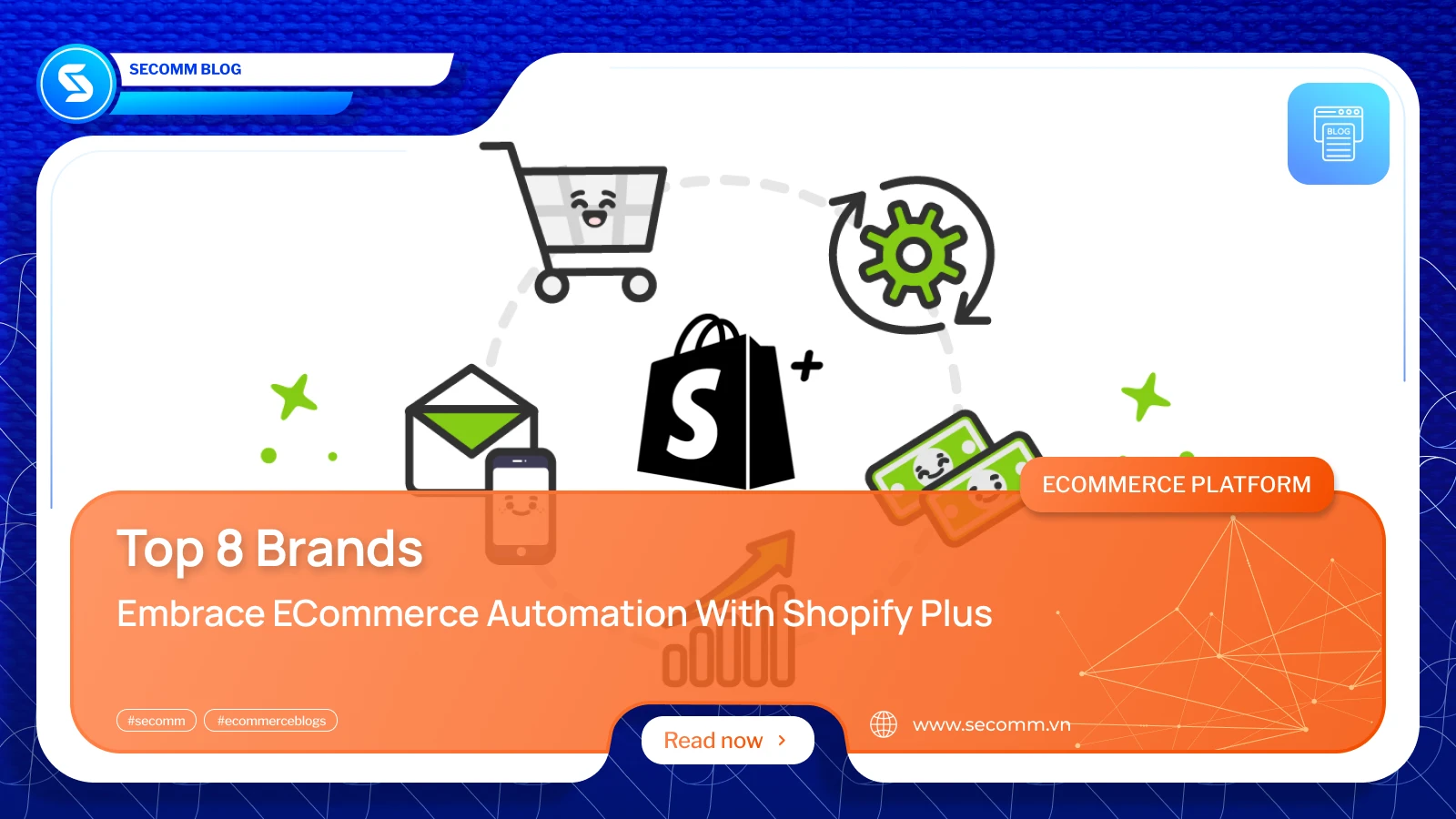
In today’s digital age, eCommerce automation not only helps businesses optimize their sales processes but also creates a seamless shopping experience for customers. Shopify Plus has become one of the most popular SaaS eCommerce platforms, helping both large and small brands automate and enhance their business efficiency. Below is a list of leading brands that have successfully automated their eCommerce with Shopify Plus.

Good American, the renowned fashion brand co-founded by Khloé Kardashian, achieved $1 million in sales on the first day of operating its sales system on the Shopify Plus platform. Building on this success, the brand established multiple automated processes to eliminate manual tasks, allowing its team to focus on providing customers with a rich shopping experience and excellent support services.
Good American utilized Shopify Flow to automatically tag products as “Out of Stock” on their website for items that are sold out and “Low Stock” for items that have reached a certain inventory threshold. This not only improved inventory management but also encouraged customers to purchase items that were running low. Additionally, for out-of-stock products, customers could sign up to be notified when the items were back in stock, helping Good American reclaim potential lost sales.
With Shopify Flow, Good American was able to create nine automated processes in less than a day, significantly contributing to the overall efficiency of their eCommerce operations.

Boody is an Australian brand specializing in eco-friendly clothing, founded in 2012. After operating on the complex Magento platform for several years, the brand decided to switch to Shopify Plus for its specialized solutions and user-friendly interface. This transition allowed Boody to easily customize and provide their customers with a more engaging and seamless online shopping experience while expanding into international markets.
After switching platforms, Boody leveraged Shopify Flow to automate several key eCommerce processes, including order processing, email marketing, payments, and inventory management. This automation enabled Boody’s team to focus more on business strategies and market expansion. As a result, Boody has expanded to 10 different international stores and increased its online revenue share from 0% to 70%.
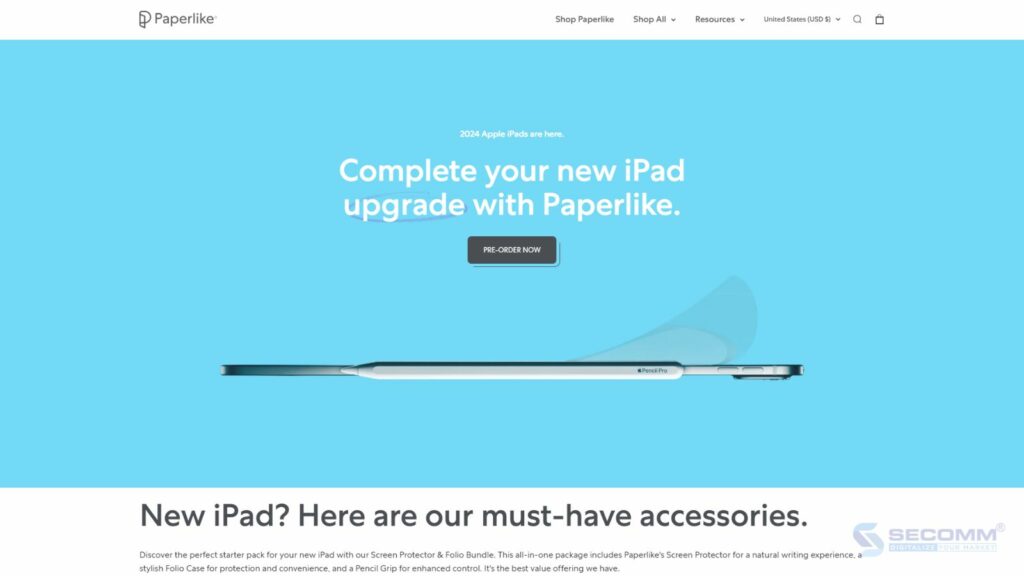
Paperlike is known for producing and supplying accessories for iPads. Given the small team and limited technological resources at Paperlike, operational efficiency is a top priority for their eCommerce activities. After running their eCommerce website on the standard Shopify platform for a long time, Paperlike switched to Shopify Plus to find solutions to handle their increasing sales volume.
Despite having a small team, Paperlike successfully operates their Shopify Plus store thanks to unique automation tools such as Flow, LaunchPad, and Script.

Since its establishment in 1971, Mandaue Foam has become an indispensable name in the furniture industry in the Philippines. After four years of using the standard version of Shopify, Mandaue Foam upgraded to Shopify Plus to seek solutions for expansion and customization.
The brand utilized LaunchPad—a feature exclusive to Shopify Plus—to schedule marketing campaigns and automate product price updates and discounts. Since LaunchPad allows real-time tracking of each campaign’s performance, the Mandaue Foam team could understand customer behavior and adjust their campaigns accordingly.
Additionally, using Shopify Flow, Mandaue Foam automated their order management process. They created a workflow where, once an order is placed, one of their 28 physical locations with inventory for that product is notified to process the order. This ensured swift order fulfillment while eliminating the need for manual order tracking.
The platform switch and the implementation of eCommerce automation helped Mandaue Foam achieve a 200% increase in order volume, a 151% year-over-year increase in total sales, and a 16% increase in customer return rate.
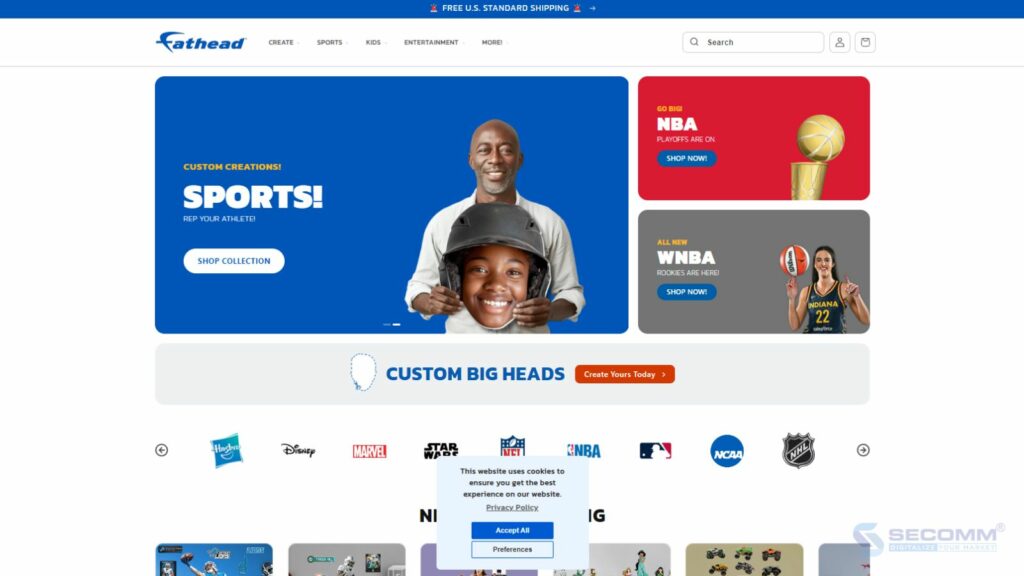
Fathead is a provider of decorative products and decals featuring famous cartoon characters, superstars, and top athletes. The eCommerce system at Fathead encountered numerous issues over time, including frequent errors, poor performance, and time-consuming manual processes.
To address these challenges, Fathead decided to migrate to Shopify Plus for its easy and flexible customization options on a user-friendly interface. Fathead leveraged Shop Pay to simplify the checkout process, providing a streamlined shopping experience and boosting conversion rates. The brand also utilized Shopify Flow to set up multiple automated processes, including optimizing order processing. As a result, Fathead increased average order value by 46%, conversion rates by 10%, and overall revenue by 50%.
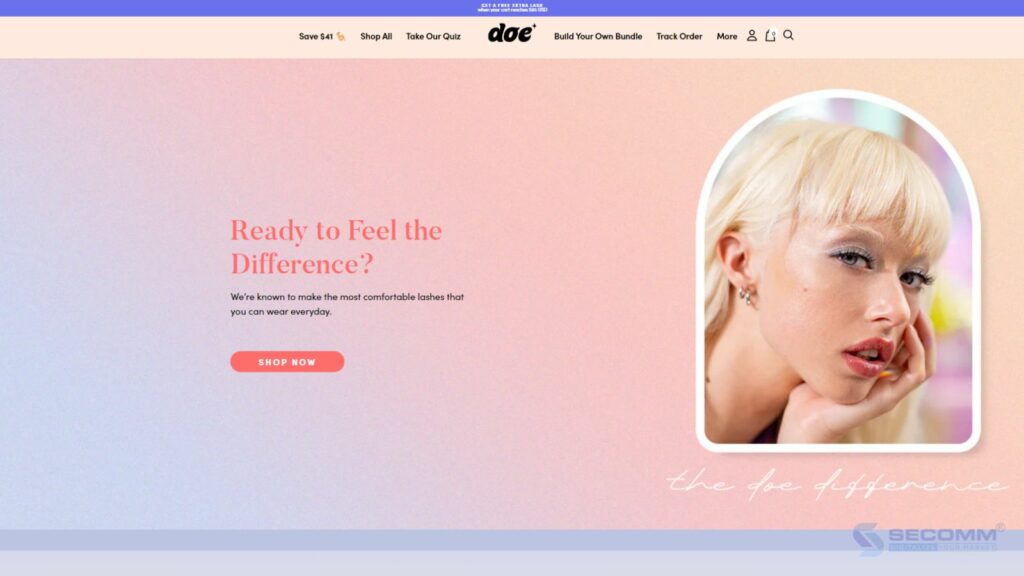
Doe Beauty is a beloved Korean cosmetics brand across Asia. From the early days of eCommerce, Doe Beauty built its website on the Shopify platform. Later, witnessing rapid growth and the need for system expansion, Doe Beauty decided to switch to Shopify Plus. Since then, 80% of the operations on their Shopify Plus store have been automated.
Thanks to Shopify Flow, Doe Beauty’s team can focus on creative and strategic business aspects. The order processing and inventory management are optimized and automatically monitored, enabling faster delivery. As a result, Doe Beauty provides customers with a smooth and convenient shopping experience. E-commerce automation with Shopify Plus has helped the Doe Beauty team save an average of 4 hours and increase the average order value by 5%.

For over 60 years, Jack Rogers’ sandals and shoes have been loved by generations of consumers across the United States. Dissatisfied with their existing eCommerce system, Jack Rogers switched to Shopify Plus. This move provided access to a comprehensive infrastructure and outstanding solutions, optimizing inventory management—a persistent issue for Jack Rogers over the years.
After transitioning to the Shopify Plus store, the brand leveraged Shopify Flow to automate several operational processes, freeing their team from time-consuming manual tasks. The intuitive and user-friendly interface of Shopify Plus allowed the Jack Rogers team to easily add and edit products and categories, set up sales campaigns, and run advertisements. This led to remarkable growth in a short time, with website traffic increasing by over 60% and conversion rates by more than 30%.

Cozykids is a popular destination for children’s products in Greece. The old WordPress-based system at Cozykids faced numerous issues due to manual operations and inadequate performance. As a result, Cozykids switched to Shopify Plus in search of a solution for performance and automation problems.
By using Shopify Flow, Cozykids automated inventory management for out-of-stock and low-stock products, eliminating the need for staff to manually monitor inventory levels. Additionally, Cozykids used Flow to automate customer interactions with out-of-stock products, allowing customers to pre-order at a discounted price and sign up for notifications when the products were back in stock. This automation was particularly important for the marketing team, as it helped them know when to stop promoting low-stock items and focus on other products.
For launching and promoting new products, Cozykids used Shopify LaunchPad to automate these processes. With both Flow and LaunchPad, Cozykids increased eCommerce website traffic by 40% and revenue by 80%. Additionally, the automated processes significantly reduced the time staff spent monitoring inventory levels, decreased errors from manual operations, and enhanced operational efficiency.
eCommerce automation not only helps brands optimize their operational processes but also creates a better shopping experience for customers. The aforementioned brands have successfully used Shopify to enhance business efficiency and build customer trust. Shopify has proven to be a powerful and flexible tool, supporting businesses of all sizes and across various industries.
Need advice on implementing eCommerce automation with Shopify Plus? Contact SECOMM today!
 57
57
 5,932
5,932
 0
0
 32
32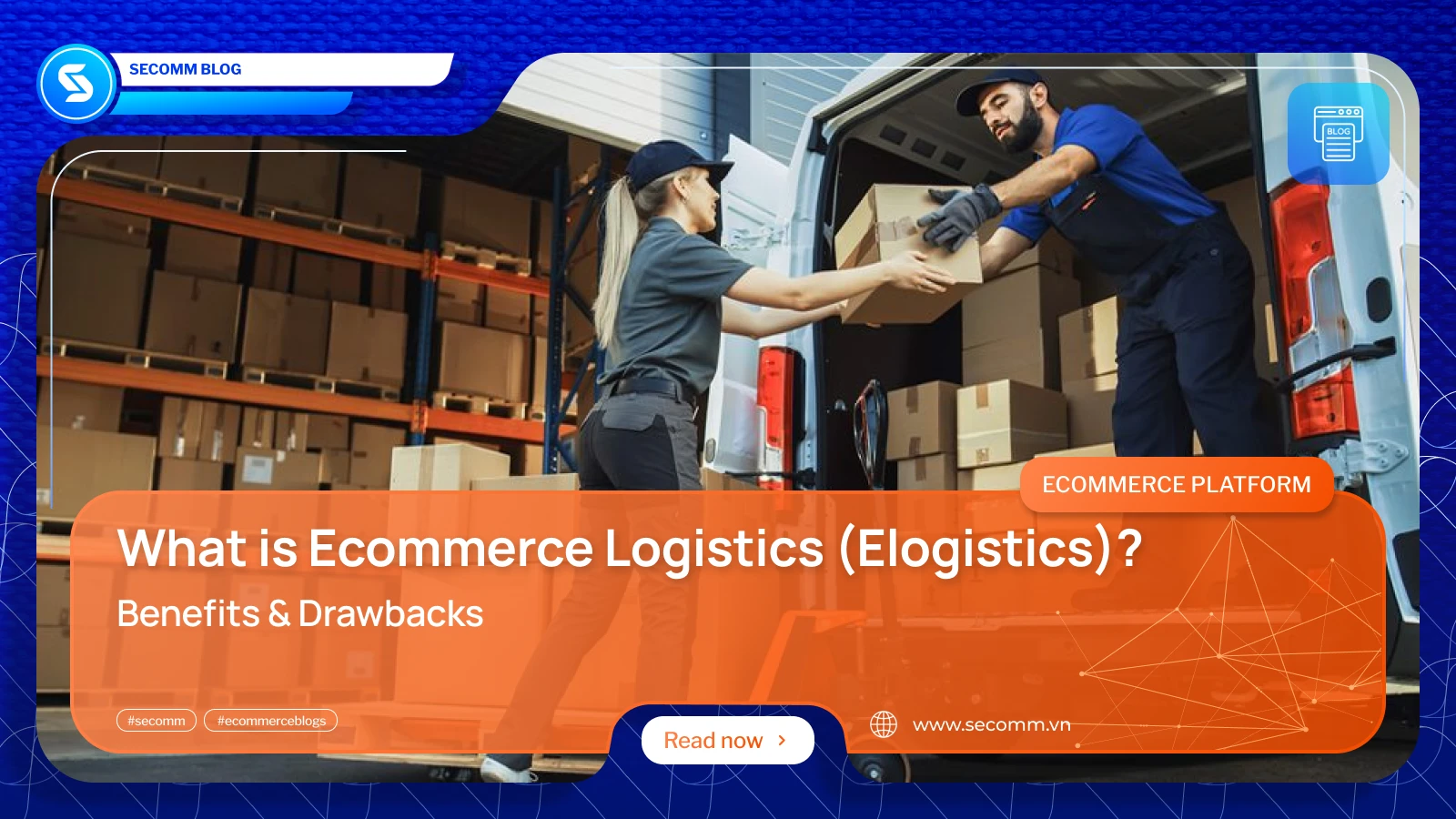
In today’s rapidly evolving digital landscape, eCommerce logistics, or eLogistics, plays a pivotal role in the seamless operation of online retail. It encompasses the intricate processes of managing and delivering goods from suppliers to customers efficiently and effectively. As businesses worldwide increasingly embrace digital platforms for sales, understanding the fundamentals of eCommerce logistics becomes indispensable for optimizing operations and staying competitive in the dynamic marketplace.
ECommerce logistics, often referred to as eLogistics, is the specialized process of managing and fulfilling online orders from the point of sale to delivery to the customer’s doorstep. Unlike traditional logistics, which primarily focuses on moving goods through physical stores or distribution centers, eCommerce logistics is tailored to the unique challenges and opportunities of the online retail environment. It encompasses a range of activities including order processing, inventory management, warehousing, packaging, and transportation logistics. The goal of eCommerce logistics is to ensure that products are delivered to customers swiftly, accurately, and cost-effectively, thereby enhancing customer satisfaction and optimizing operational efficiency for online merchants.
The eLogistics process includes some critical components. They work together to ensure that eCommerce businesses can fulfill orders accurately, efficiently, and on time, thereby meeting customer expectations and enhancing overall operational performance.
Order Processing:
This involves receiving and confirming orders placed on the eCommerce platform. It includes order verification, payment processing, and order entry into the system.
Inventory Management:
Efficient inventory management is crucial to eCommerce logistics. It involves tracking stock levels, monitoring inventory movements, and ensuring accurate stock counts to prevent stockouts or overstock situations.
Warehousing:
eCommerce logistics often utilizes warehouses or fulfillment centers strategically located to facilitate quick order processing and shipping. Warehouses are organized to efficiently store and pick items for orders.
Packaging:
Packaging in eCommerce logistics involves selecting appropriate packaging materials, ensuring products are securely packed to prevent damage during transit, and sometimes includes branding for a positive customer experience.
Shipping and Transportation:
This component includes selecting the optimal shipping method (e.g., ground, air) based on factors like delivery speed and cost-efficiency. It also involves managing logistics partners or carriers for timely delivery.
Returns Management:
Handling returns is a critical aspect of eCommerce logistics. It includes processing returned items, assessing their condition, restocking inventory, and issuing refunds or exchanges as per the company’s policies.
Technology and Integration:
eCommerce logistics relies heavily on technology for automation and integration. This includes using inventory management systems, order management systems, and transportation management systems (TMS) to streamline operations and enhance efficiency.
Customer Service:
While not always considered a logistics component, customer service plays a vital role in eCommerce logistics by managing inquiries related to orders, tracking shipments, and resolving any issues that may arise during the fulfillment process.
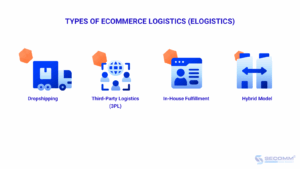
There are 4 common types of eLogistics. Each type of eCommerce logistics has its own advantages and challenges, and the choice depends on factors such as business size, product characteristics, target market, and strategic goals. Selecting the right logistics strategy is crucial for optimizing operational efficiency, enhancing customer satisfaction, and supporting business growth in the competitive eCommerce landscape.
3.1 Dropshipping
Dropshipping is a fulfillment method where the online retailer (the dropshipper) does not keep products in stock. Instead, when a customer places an order, the retailer forwards the order details and shipment instructions to a third-party supplier or manufacturer. The supplier then ships the product directly to the customer.
Dropshipping is advantageous because it eliminates the need for inventory storage and management, reducing upfront costs and risks for the retailer. However, it also means the retailer has less control over fulfillment and may face challenges in maintaining consistent product availability and quality.
3.2 Third-Party Logistics (3PL)
3PL providers offer outsourced logistics and supply chain management services to eCommerce businesses. These providers specialize in warehousing, order fulfillment, inventory management, shipping, and often additional services like reverse logistics (handling returns).
eCommerce businesses can benefit from partnering with a 3PL provider by leveraging their expertise, infrastructure, and established carrier relationships. This can lead to cost savings, improved efficiency in order fulfillment, and scalability as 3PL providers can handle fluctuations in order volume and seasonal peaks. However, businesses must carefully select a 3PL partner that aligns with their specific needs and standards for service quality.
3.3 In-House Fulfillment
In-house fulfillment involves eCommerce businesses managing their own logistics operations internally. This includes setting up and managing warehouses or fulfillment centers, hiring staff for picking, packing, and shipping orders, and overseeing the entire fulfillment process.
In-house fulfillment gives businesses greater control over the entire logistics chain, allowing for customization of processes and direct management of customer interactions. However, it requires significant upfront investment in infrastructure, technology, and manpower, as well as ongoing operational costs. Businesses opting for in-house fulfillment must also ensure they have the capability to handle fluctuations in demand and maintain service levels during peak periods.
3.4 Hybrid Model
Some businesses opt for hybrid logistics models that combine elements of dropshipping, 3PL services, and in-house fulfillment. For example, a business may use dropshipping for certain products or suppliers while managing warehousing and fulfillment for core or high-demand items.
Hybrid models offer flexibility and the ability to tailor logistics strategies to specific product lines or market conditions. However, managing multiple logistics models requires careful coordination and integration to ensure seamless operations and consistent customer experience.
Implementing eLogistics brings your business many benefits. By leveraging these benefits, you optimize the logistics operations to support growth, improve customer experiences, and maintain a competitive position in the online retail market.
Cost Efficiency:
By optimizing processes such as warehousing, inventory management, and shipping, eCommerce logistics helps reduce operational costs. This includes minimizing storage expenses, improving inventory turnover, and leveraging bulk shipping discounts.
Faster Delivery Times:
Efficient eCommerce logistics enable quicker fulfillment and shipping of orders. This not only enhances customer satisfaction but also meets the expectations for fast delivery set by major eCommerce platforms.
Improved Customer Satisfaction:
Timely and accurate order fulfillment contributes to higher customer satisfaction. eCommerce logistics ensure that orders are processed promptly, shipments are tracked effectively, and customers receive their purchases in good condition.
Operational Transparency:
Modern eCommerce logistics systems often include real-time tracking and reporting capabilities. This transparency allows businesses to monitor inventory levels, track shipments, and analyze performance metrics to optimize operations continually.
Integration with Technology:
eCommerce logistics systems integrate with advanced technologies such as automation, AI-driven analytics, and cloud-based platforms. These technologies streamline processes, reduce errors, and enhance overall operational efficiency.
Enhanced Flexibility:
eCommerce logistics provide flexibility in adapting to changing market demands and seasonal fluctuations. Businesses can adjust inventory levels, shipping methods, and distribution strategies dynamically to meet customer needs and market conditions.
Beyond the benefits that eCommerce logistics system can offer, there are some drawbacks to consider before applying logistics to eCommerce
Initial Setup Costs:
Setting up an effective eCommerce logistics system requires significant initial investment in infrastructure, technology, and personnel. This includes costs for warehouses or fulfillment centers, inventory management systems, transportation logistics, and training staff.
Complexity and Integration Challenges:
Integrating various components of eCommerce logistics, such as inventory management, order processing, and shipping systems, can be complex. Ensuring seamless integration often requires technical expertise and may involve compatibility issues with existing systems.
Dependency on Third-Party Providers:
Many eCommerce businesses rely on third-party logistics (3PL) providers for warehousing, fulfillment, and shipping. While this outsourcing can reduce operational burdens, it also introduces dependencies on external partners. Issues like service disruptions, communication gaps, and quality control concerns can arise, affecting overall service reliability.
Logistical Errors and Delays:
Despite technological advancements, logistical errors such as inventory discrepancies, shipping delays, and order inaccuracies can occur. These errors may lead to customer dissatisfaction, increased costs for returns and replacements, and potential damage to brand reputation.
Risk of Data Breaches:
eCommerce logistics involves handling sensitive customer data, including payment information and personal details. Protecting this data from cyber threats and data breaches is crucial but requires robust cybersecurity measures and compliance with data protection regulations.
Environmental Impact: The logistics and transportation involved in eCommerce can have a significant environmental impact, including carbon emissions from shipping vehicles and packaging waste. Implementing sustainable practices, such as optimizing delivery routes and using eco-friendly packaging, can mitigate these effects but may add to operational costs.
Understand Your Requirements:
Begin by assessing your business needs, including order volume, product characteristics, target market locations, and seasonal demand fluctuations. This understanding will guide your logistics strategy and help you choose the most suitable fulfillment model.
Choose the Right Logistics Partners:
Select reliable logistics partners or 3PL providers based on their expertise, track record, scalability, and ability to meet your specific requirements. Conduct thorough due diligence and consider visiting their facilities to ensure they align with your standards.
Invest in Technology:
Implement robust eCommerce and logistics management software that integrates order processing, inventory management, and shipping operations. Automation tools can streamline processes, reduce errors, and improve efficiency in fulfillment and customer service.
Automate Repetitive Tasks:
Implement automation for repetitive tasks such as order processing, inventory updates, and shipment tracking. Use robotic process automation (RPA) or software integrations to streamline workflows and reduce manual errors. Automation not only improves efficiency but also frees up resources to focus on strategic initiatives and customer-centric activities. Regularly review processes to identify opportunities for further automation and integration with your eCommerce platform and logistics systems.
In the rapidly expanding world of eCommerce logistics, several key players stand out for their comprehensive services and innovative approaches. Companies like Amazon Logistics, FedEx Supply Chain, and UPS have reshaped the landscape with their extensive networks and advanced technologies.
Amazon Logistics
Known for its robust fulfillment network, Amazon Logistics leverages cutting-edge technology to offer fast and reliable shipping services to customers worldwide. Amazon’s fulfillment centers are strategically located, facilitating quick delivery times and efficient order processing. Their integration with Amazon Prime ensures premium shipping options and customer loyalty benefits, setting them apart in the eCommerce logistics sphere.
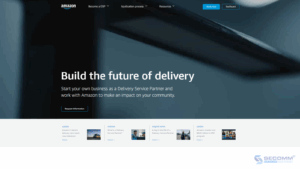
FedEx Supply Chain
FedEx Supply Chain specializes in providing end-to-end supply chain solutions tailored to eCommerce businesses. They offer warehousing, fulfillment, transportation, and reverse logistics services, supported by advanced analytics and technology-driven solutions. FedEx’s global network and commitment to innovation make them a preferred partner for businesses seeking scalable logistics solutions.
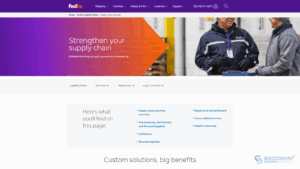
UPS
UPS is renowned for its extensive transportation and logistics capabilities, including parcel delivery, freight forwarding, and supply chain management services. UPS offers customizable logistics solutions designed to optimize efficiency and meet specific business needs. Their focus on sustainability and technological innovation, such as UPS My Choice and advanced tracking systems, enhances transparency and reliability in eCommerce logistics.
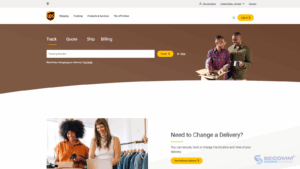
Ecommerce Logistics contributes to the success of online businesses by ensuring efficient order fulfillment, timely delivery, and enhanced customer satisfaction. From managing inventory and processing orders to optimizing shipping routes and leveraging technology, every aspect of eLogistics contributes to operational excellence in the digital marketplace.
A key takeaway from this article is the critical importance of selecting the right logistics partner. By partnering with a logistics provider that aligns with your specific business needs, you can streamline operations, mitigate logistical challenges, and position your eCommerce venture for sustained success.
SECOMM team has extensive experience of eCommerce in many APAC markets like Vietnam, Australia, NewZealand, HongKong and Singapore. We can help you apply logistics to eCommerce, optimize your customer shopping experience, streamline checkout, and more to make your eCommerce empire shine!
Contact us today for free consultation!
 40
40
 5,865
5,865
 0
0
 24
24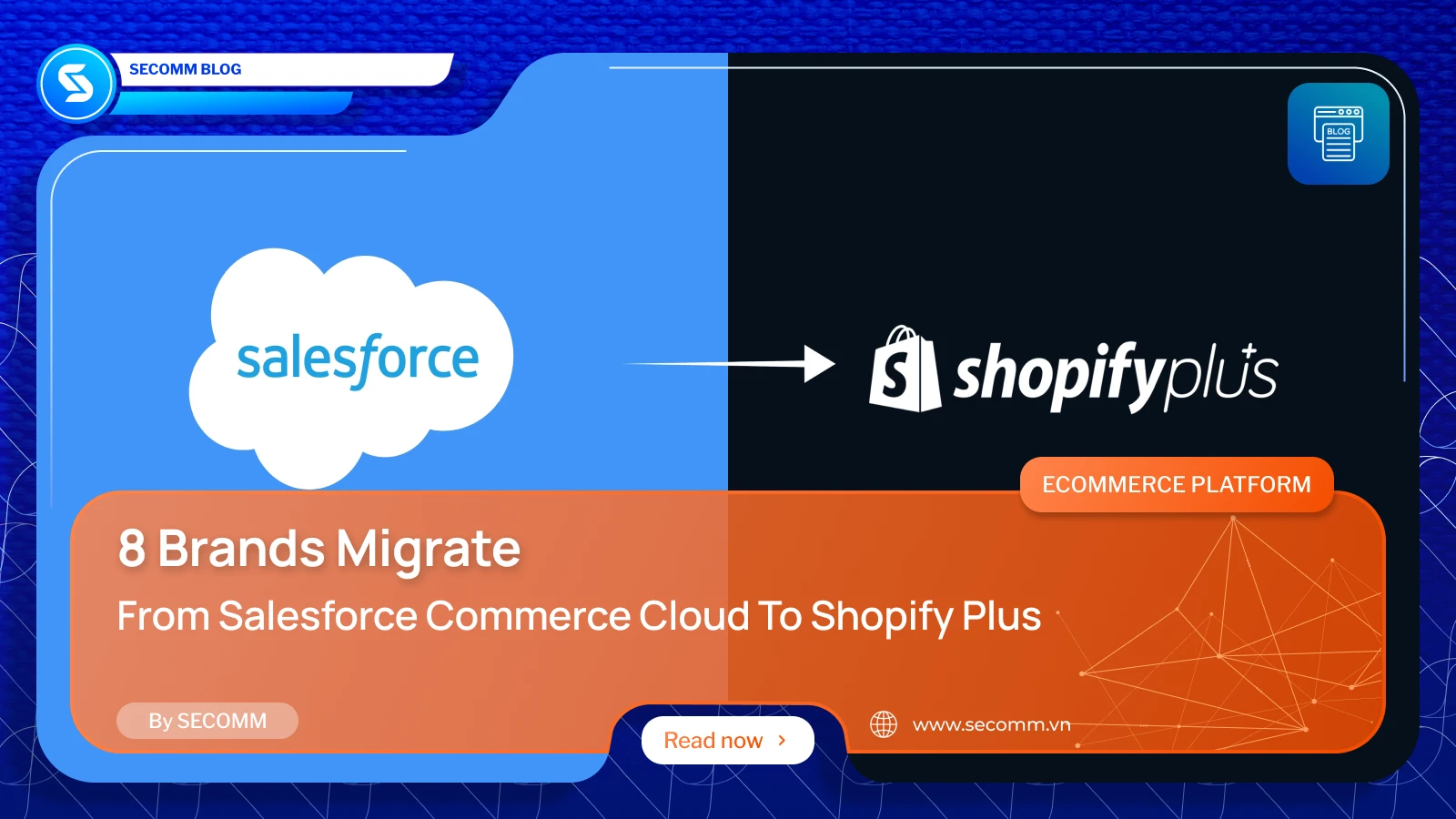
Replatforming is not only a business decision but also creates a leap to help businesses optimize operations and create a competitive advantage in the market. In this article, let’s dive into the journey of 8 iconic brands that have switched platforms from Salesforce Commerce Cloud to Shopify Plus. Not only that, the platform transformation has impacted the development and growth of these brands in the ever-changing eCommerce market.

Established in 1989, famous Italian fashion brand Slam Jam has served many fashionistas around the world. Slam Jam has implemented Omnichannel very successfully on the Shopify Plus platform. However, previously on the Salesforce Commerce Cloud platform, trying to reach an omnichannel approach caused Slam Jam to incur a lot of costs and technical difficulties.
After about a year after transitioning to the Shopify Plus platform, Slam Jam decided to use Shopify POS to increase omnichannel efficiency and build a longer-term omnichannel strategy. This has helped this fashion brand increase its average daily orders by 15%, reducing setup and operating costs by 50%.
Website: https://slamjam.com/
Industry: Fashion
Traffic: 2.3M/month
Rank: #40,182 (USA) & #54,510 (Global)

NYDJ, the fashion brand known for its premium denim and womenswear products, decided to make a big pivot in its eCommerce strategy by migrating from Salesforce Commerce Cloud to Shopify Plus. This decision comes from the desire to optimize the online shopping experience and better meet customer needs.
Migrating to Shopify Plus gave NYDJ access to many unique features and a robust and mature infrastructure for eCommerce growth. This helps NYDJ quickly respond to market changes and expand its business without encountering technical limitations. Thanks to that, NYDJ has enhanced the shopping experience, increased customer satisfaction and promoted sustainable sales growth.
Website: https://nydj.com/
Industry: Fashion
Traffic: 1.5M/month
Rank: #15,226 (USA) & #64,453 (Global)

MZ Wallace is a brand famous for its high-end handbags and accessories. After a period of operating the eCommerce system, this brand found that Salesforce Commerce Cloud (SFCC) was difficult to manage as well as development and maintenance costs were quite high, and customizing new features was also difficult. .
After considering many platforms, MZ Wallace decided to switch to Shopify Plus because this solution helps save a lot of development and maintenance costs. As a result, when operating on Shopify Plus, MZ Wallace can customize many new powerful features and functions to optimize operational efficiency. Moving to Shopify Plus freed up time and resources, allowing MZ Wallace to grow quickly and proactively focus on attracting, converting, and retaining customers, rather than overcoming growth and development barriers. budget constraints.
Website: https://www.mzwallace.com/en-vn
Industry: Fashion
Traffic: 1M/month
Rank: #18,292 (USA) & #108,437 (Global)
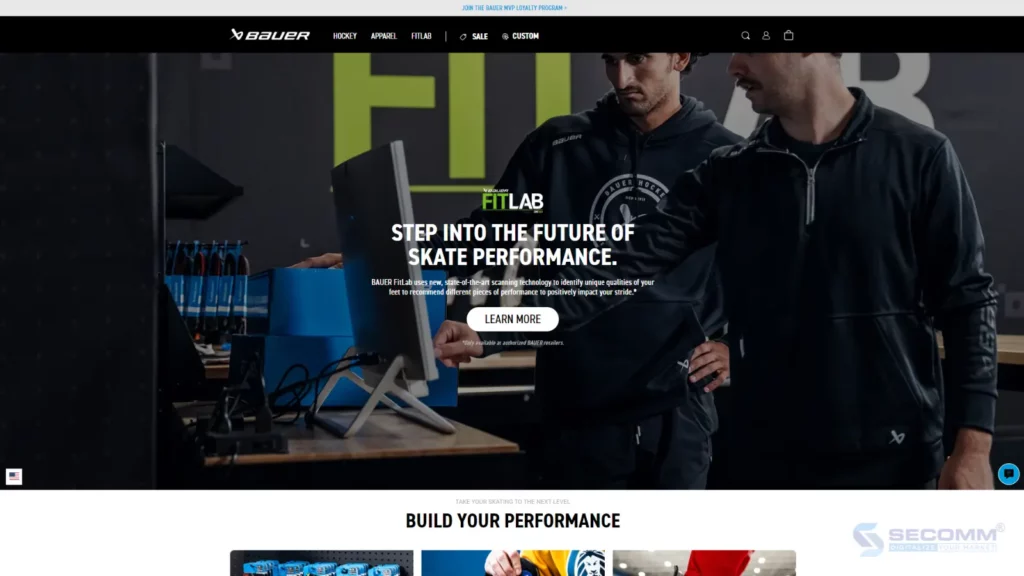
Since its founding in 1927, Bauer has gradually become a tycoon in manufacturing and selling products for the sport of hockey. After operating an eCommerce system on the Salesforce Commerce Cloud platform, Bauer realized they needed more than what their current platform could give them to expand and customize.
With many growth goals such as expanding international markets, customizing hockey warranties, and implementing a loyalty program, Bauer converted to Shopify Plus to find the best solution for its needs. Since moving to Shopify, Bauer has been able to save on technology costs and redirect those dollars toward improvements that drive results for the business. They can also bring new features to market faster than before. Shopify’s checkout feature was also strong for Bauer, especially on mobile, contributing to an 18% increase in conversion rate and 30% increase in orders.
Website: https://www.bauer.com/
Industry: Sport
Traffic: 765,322/month
Rank: #44,392 (USA) & #134,184 (Global)
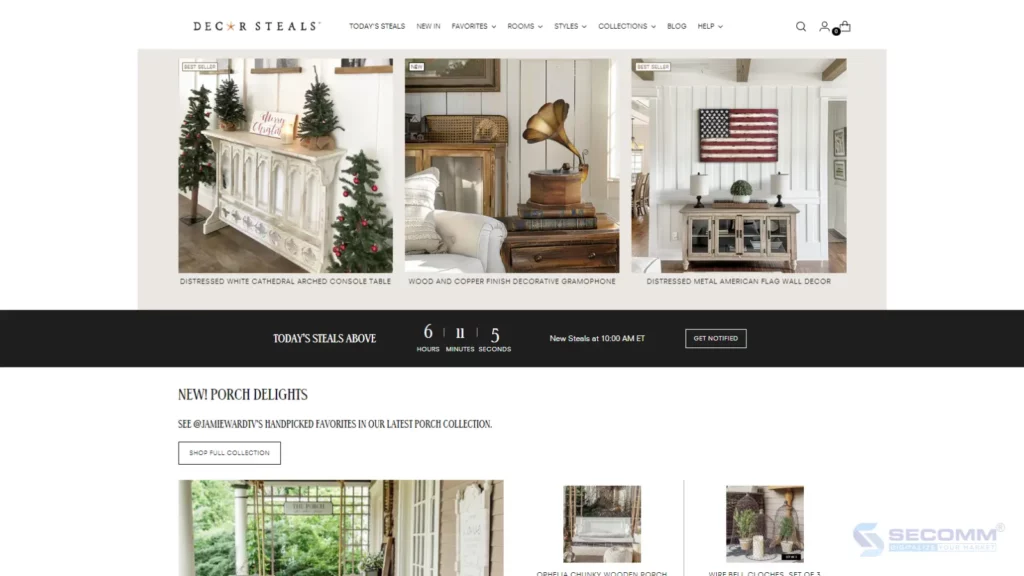
Decor Steals is an online store based in the US specializing in selling home decoration products with a variety of designs, beautiful and on-trend. At 10 am every day, Decor Steals will introduce on the website 3 carefully selected products at affordable prices and will be sold within 24 hours until sold out.
This strategy helps keep inventory flowing and creates an engaging experience for customers looking for decorative items at more accessible prices. At the same time, this helped Decor Steals’ online sales skyrocket and it was time for them to customize more in-depth features and integrate more sales channels, but the current SFCC system did not meet their needs. this bridge. As a result, Decor Steals converted to the Shopify Plus platform and launched the website in less than 6 months.
The brand only has a lean team for operations consisting of an internal manager and several external contractors, which helps them save more than $300,000 in implementation costs compared to operating with Salesforce Commerce Cloud.
Website: https://www.decorsteals.com/
Industry: Home Decor
Traffic: 745,010/month
Rank: #40,759 (USA) & #218,245 (Global)
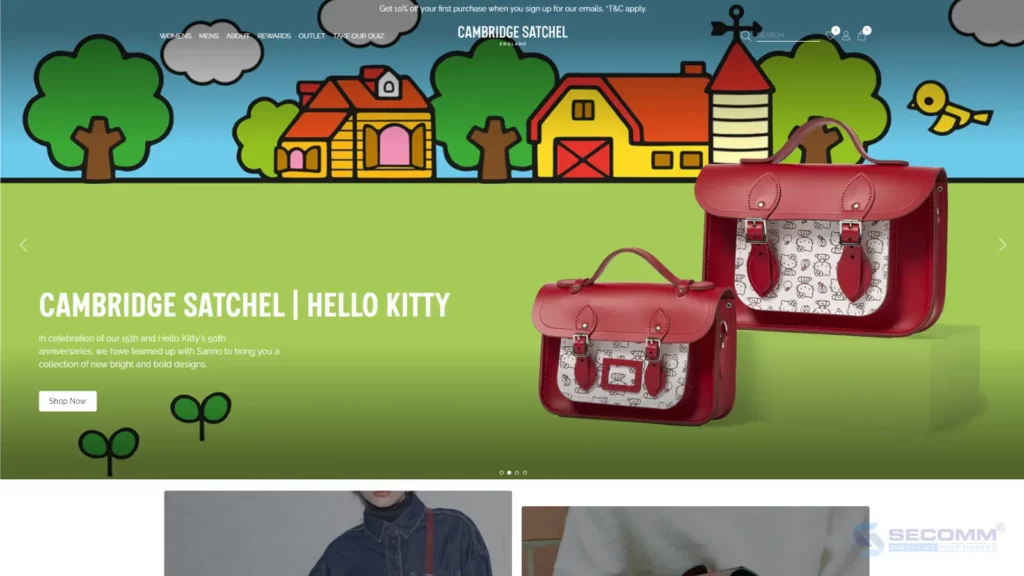
The Cambridge Satchel Company, the prestigious British brand known for its exquisitely crafted leather briefcases, has decided to make a major move by migrating from Salesforce Commerce Cloud to Shopify Plus. The reason is because the company finds that the investment to reach new customers is more than the revenue each new customer brings. As a business that always places its value on product quality and business ethics, The Cambridge Satchel Company fell into a cycle of burning more money on the technology than on the product itself.
Not long after switching to Shopify Plus, technology investment costs were significantly reduced and Satchel’s specialized team could operate well with very little development support from third parties. The Cambridge Satchel Company also uses Shopify to provide AR experiences to customers with the “Try On” feature via smartphones.
Website: https://www.cambridgesatchel.com/
Industry: Fashion
Traffic: 411,724/month
Rank: #143,743 (USA) & #329,411 (Global)
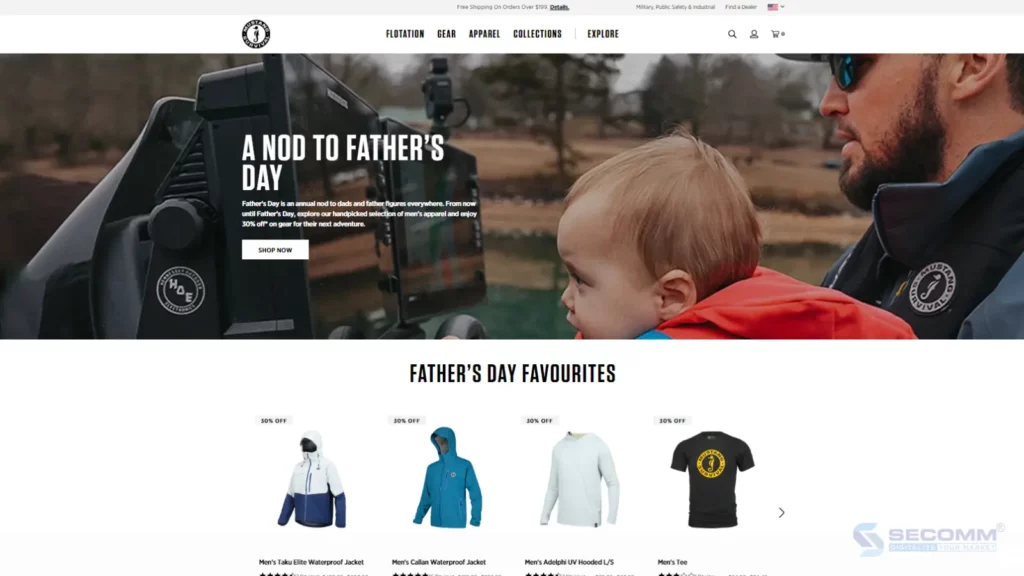
Established in Canada for more than 50 years, Mustang Survival specializes in designing, manufacturing and supplying products for water rescue professionals, military personnel, and water recreation enthusiasts.
As eCommerce websites become the dominant sales channel, gradually replacing the remaining sales channels in their business strategy, Mustang Survival needs a platform that provides a higher level of customization and expansion. As a result, Mustang Survival moved its entire operations from Salesforce Commerce Cloud to Shopify Plus.
The brand quickly took advantage of the platform’s two most cutting-edge automation solutions, Flow and LaunchPad, to save time and costs and increase accuracy and efficiency. This helped Mustang Survival increase conversion rates by 172% and reduce average page load time by 50% in just under 3 months of switching to Shopify Plus.
Website: https://mustangsurvival.com/
Industry: Sport
Traffic: 157,988/month
Rank: #144,575 (Canada) & #626,414 (Global)
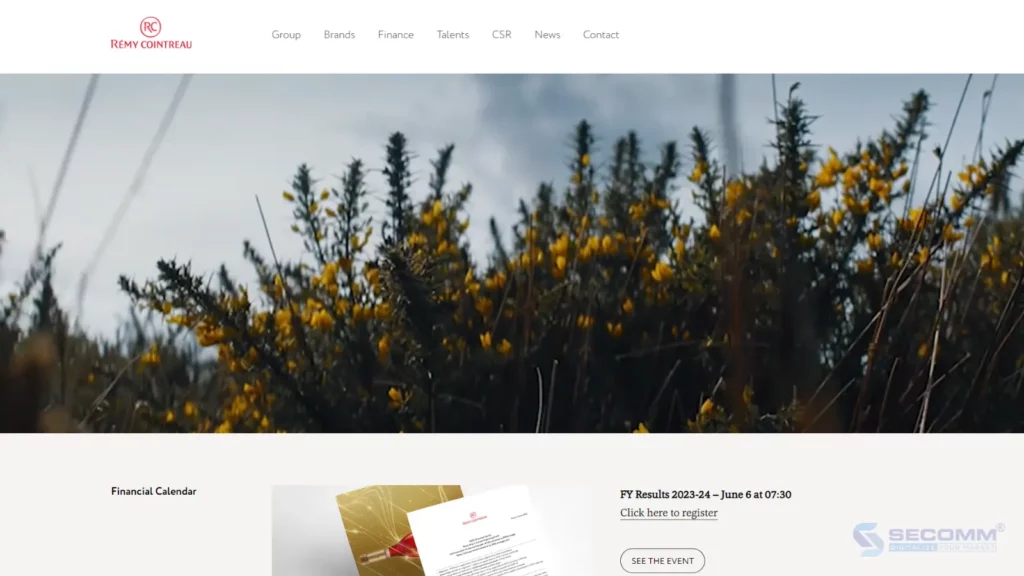
Rémy Cointreau is a famous French luxury spirits group, owning more than 14 different brands. But as shopping moved online during the pandemic, traditional in-store and on-premise purchases stagnated – while online deliveries soared. Rémy Cointreau recognized the urgent need to rapidly expand its eCommerce capabilities and continue serving customers online across multiple channels over the long term.
This brand has converted to Shopify Plus and uses the Shopify POS solution, allowing the implementation of an effective sales process on many different channels such as eCommerce websites, traditional stores and direct sales through personal sales managers. This seamless omnichannel approach gives Rémy Cointreau unprecedented flexibility. The platform transformation has helped this giant grow incredibly, and eCommerce operations have become a pillar of Rémy Cointreau’s sales strategy.
Website: https://www.remy-cointreau.com/en/
Industry: Wine & Spirits
Traffic: 50,768/month
Rank: #88,991 (France) & #1,704,449 (Global)
Final Words
The transition from Salesforce Commerce Cloud to Shopify Plus is not only a technological change, but also an important strategy that helps brands like Bauer, Slam Jam, Rémy Cointreau, NYDJ, MZ Wallace, Mustang Survival, Decor Steals and The Cambridge Satchel Company enhance customer experience and optimize business operations. The right choice of foundation not only brings immediate results but also lays a solid foundation for sustainable development and prosperity in the future.
Need advice on switching platforms from Salesforce Commerce Cloud to Shopify Plus? Contact SECOMM now!
 2
2
 5,786
5,786
 1
1
 1
1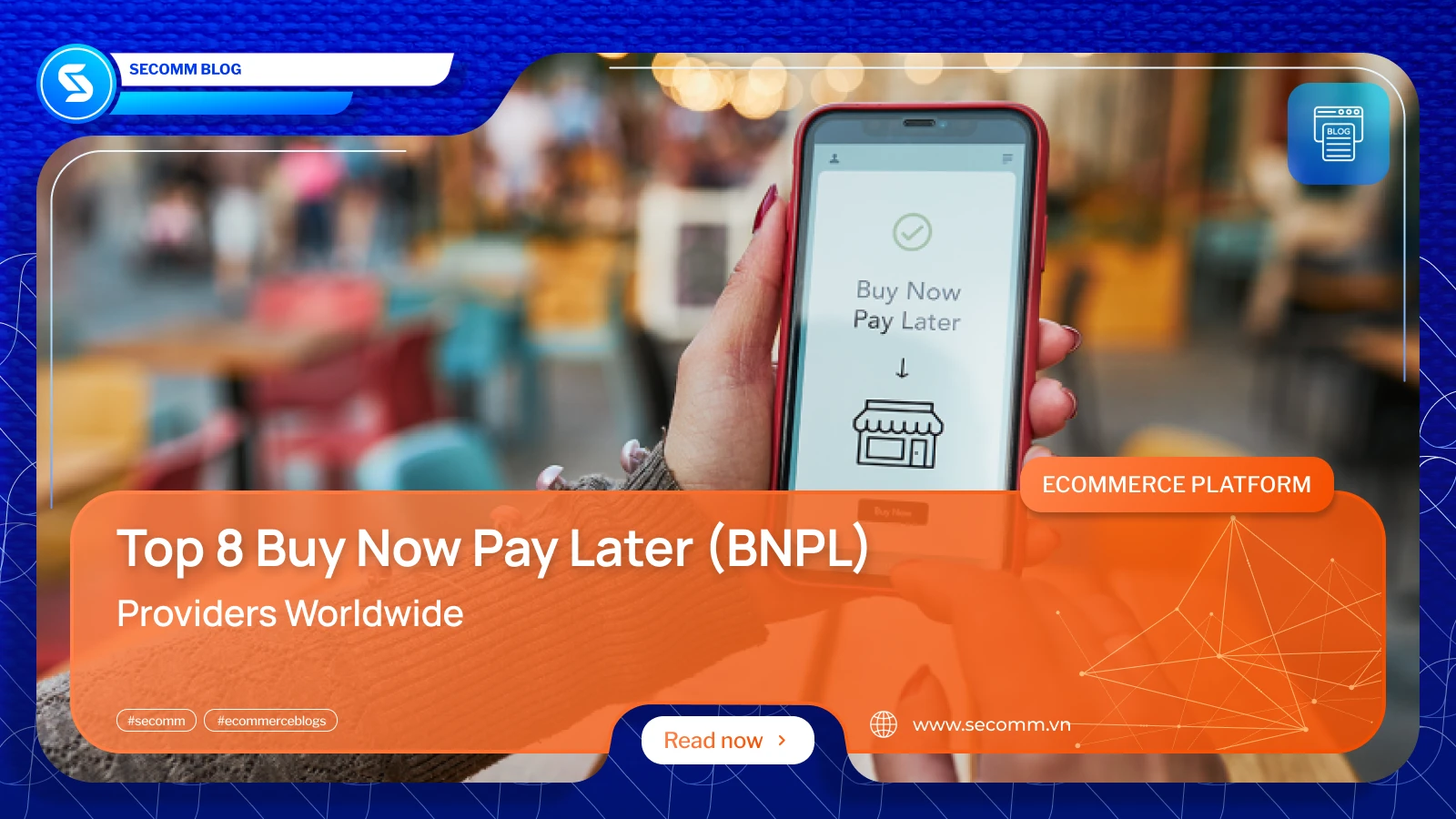
Buy Now Pay Later (BNPL) payment methods have become a global trend, making it easier for consumers to shop without paying the full amount upfront. Below are some of the most famous BNPL providers worldwide.
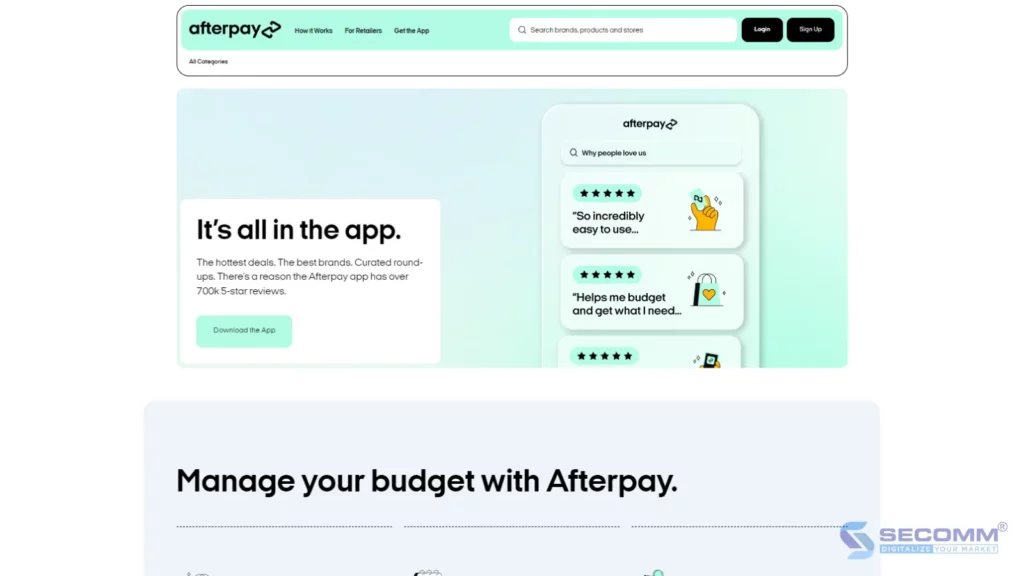
Afterpay is one of the most popular BNPL services globally, especially in Australia, the US, and the UK. Founded in 2014 in Australia, Afterpay quickly expanded to many other markets and became a well-known name in the BNPL industry.
How it works: Afterpay allows consumers to split their payments into four interest-free installments over two weeks. No credit checks are required, and it is easily integrated into many eCommerce websites.
Benefits:
Drawbacks:
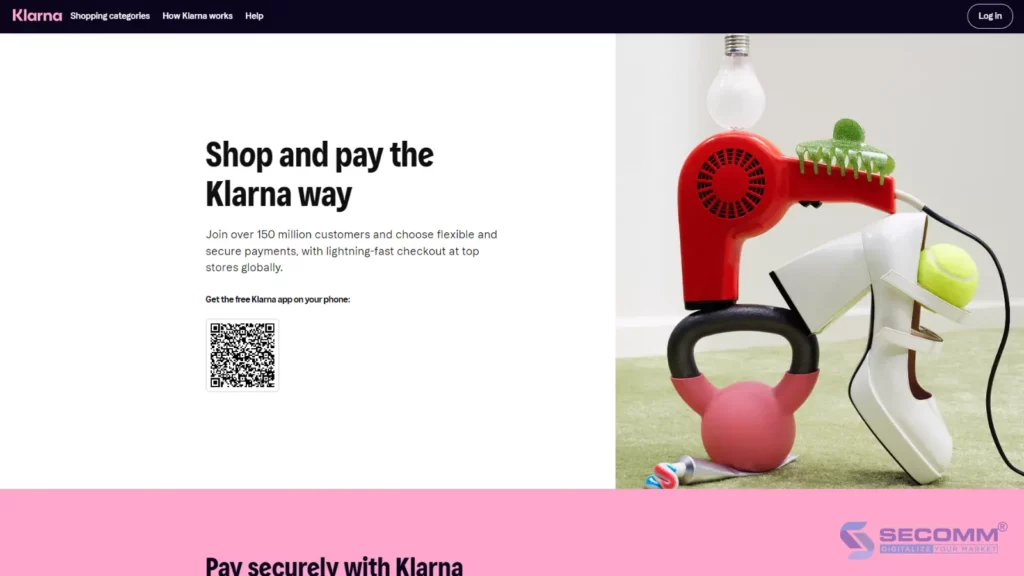
Klarna is a Swedish fintech company providing BNPL services in many European countries and the US. With over 90 million users worldwide, Klarna is one of the largest BNPL providers.
How it works: Klarna offers various payment options, including paying in 30 days, splitting payments into four interest-free installments, or long-term financing with interest.
Benefits:
Drawbacks:
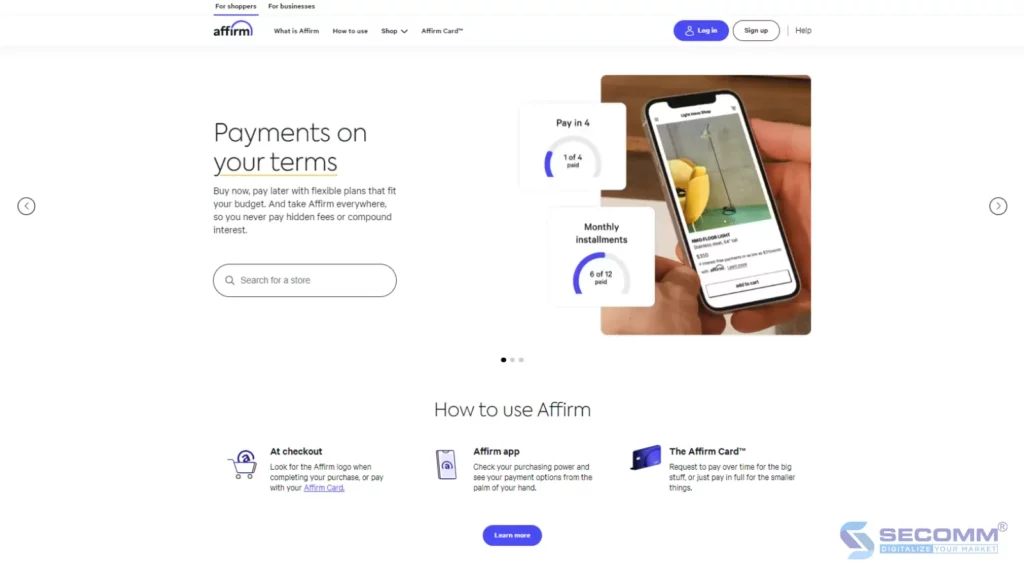
Affirm is a BNPL service from the US, founded by Max Levchin, one of the co-founders of PayPal. Affirm allows consumers in the US and Canada to shop and pay in flexible installments.
How it works: Affirm offers loans with payment terms from 3 to 36 months with clear interest rates from 0% to 30%, depending on the consumer’s credit.
Benefits:
Drawbacks:
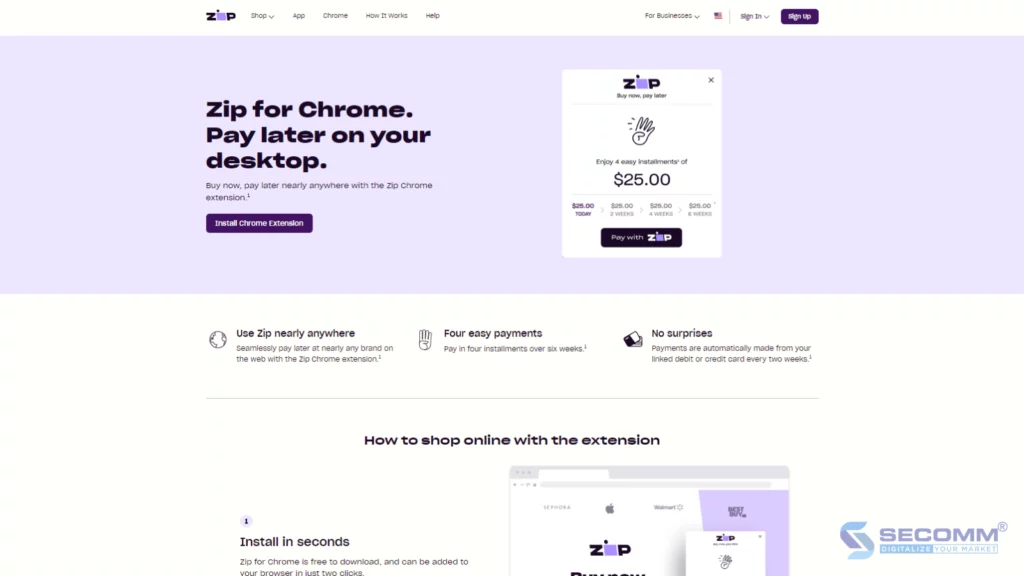
Zip is a BNPL service based in Australia, operating in several countries including the US, the UK, and New Zealand. Zip offers flexible payment solutions for consumers.
How it works: Zip allows consumers to split payments into four interest-free installments every two weeks or choose longer-term financing with interest.
Benefits:
Drawbacks:
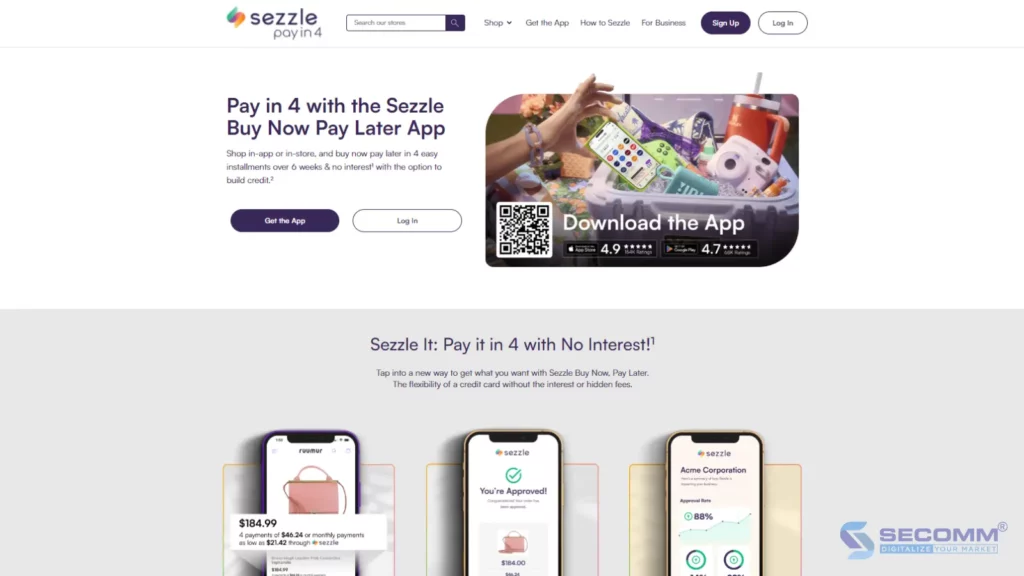
Sezzle is a BNPL service from the US, primarily operating in North America. Sezzle focuses on providing flexible payment solutions for young consumers.
How it works: Sezzle allows consumers to split payments into four interest-free installments over six weeks. No credit checks are required during registration.
Benefits:
Drawbacks:
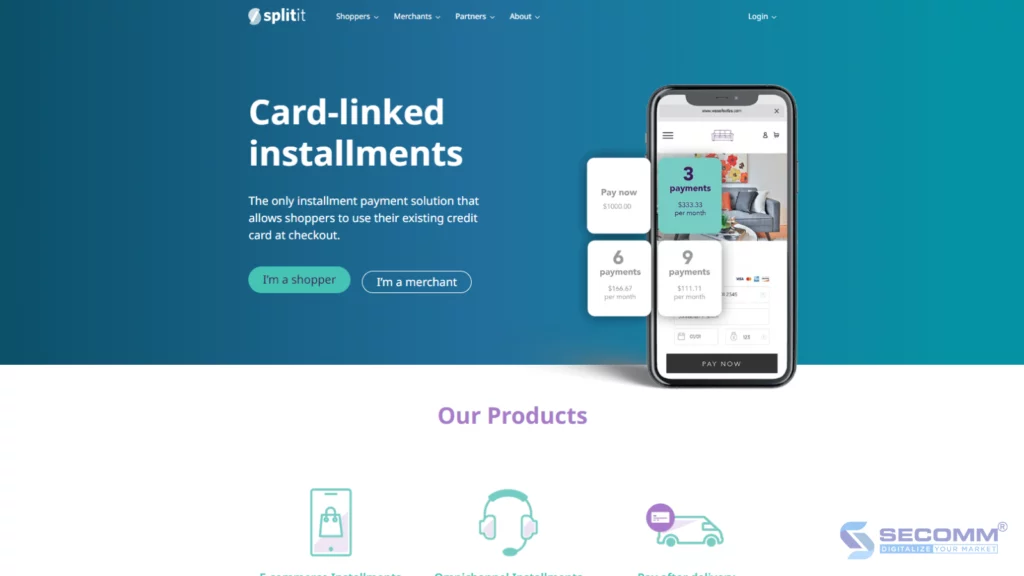
Splitit is another BNPL service from the US, with a different approach compared to traditional services. Splitit uses the available credit limit on consumers’ credit cards to split payments.
How it works: Splitit allows consumers to split payments into interest-free installments by holding the credit limit on their credit cards.
Benefits:
Drawbacks:
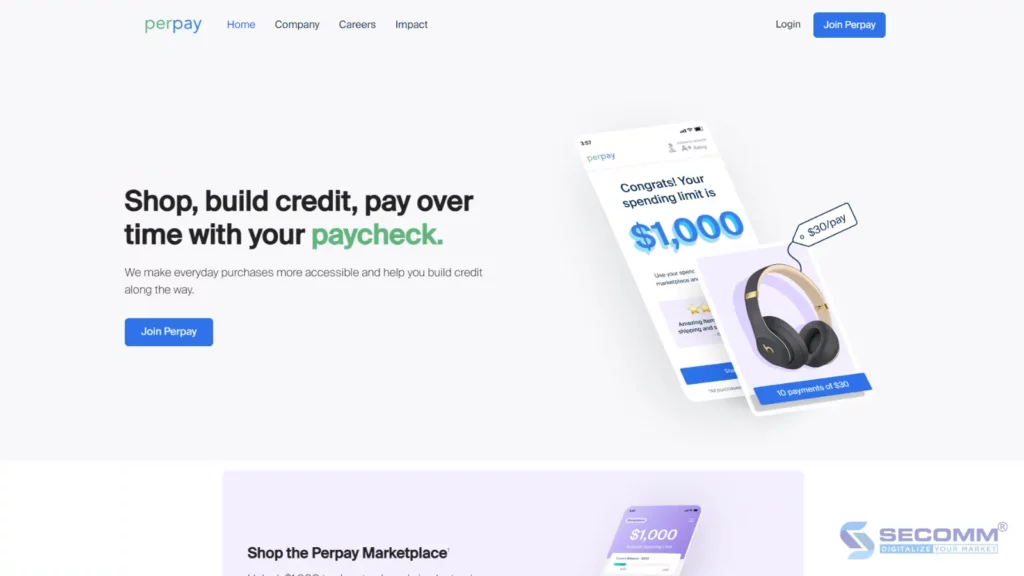
Perpay is a BNPL service from the US, focusing on helping consumers purchase everyday products and pay in installments through direct payroll deductions.
How it works: Consumers can shop on the Perpay platform and pay monthly installments through direct payroll deductions.
Benefits:
Drawbacks:
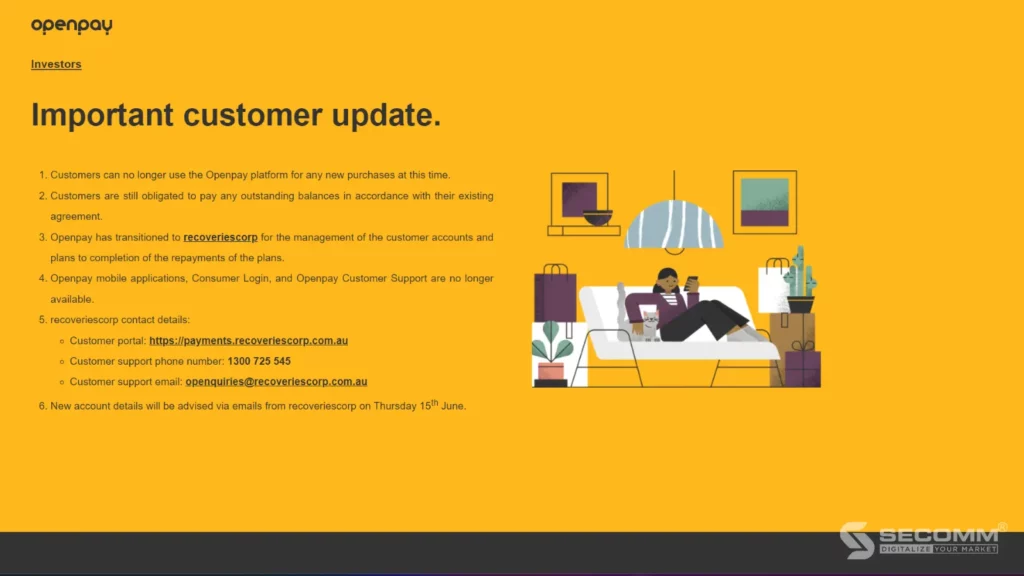
Openpay is a BNPL service from Australia, offering flexible payment plans for consumers and businesses in Australia, New Zealand, and the UK.
How it works: Openpay allows consumers to split payments into flexible installments ranging from 2 to 24 months.
Benefits:
Drawbacks:
FINAL WORDS
The Buy Now Pay Later (BNPL) services have revolutionized how consumers shop globally, providing significant flexibility and convenience. Providers such as Afterpay, Klarna, Affirm, Zip, Sezzle, Splitit, Perpay, and Openpay have developed diverse financial solutions, meeting the needs of both consumers and businesses. Each service has its own advantages; however, using BNPL also comes with challenges such as late fees, the risk of overspending, and the impact on credit scores if not managed well.
To maximize the benefits of BNPL, consumers need to manage their finances carefully and choose the service that fits their needs and capabilities. Meanwhile, businesses should continue to work closely with BNPL providers to offer the best shopping experience for customers while fully exploiting the potential of this payment method.
 2
2
 5,252
5,252
 0
0
 1
1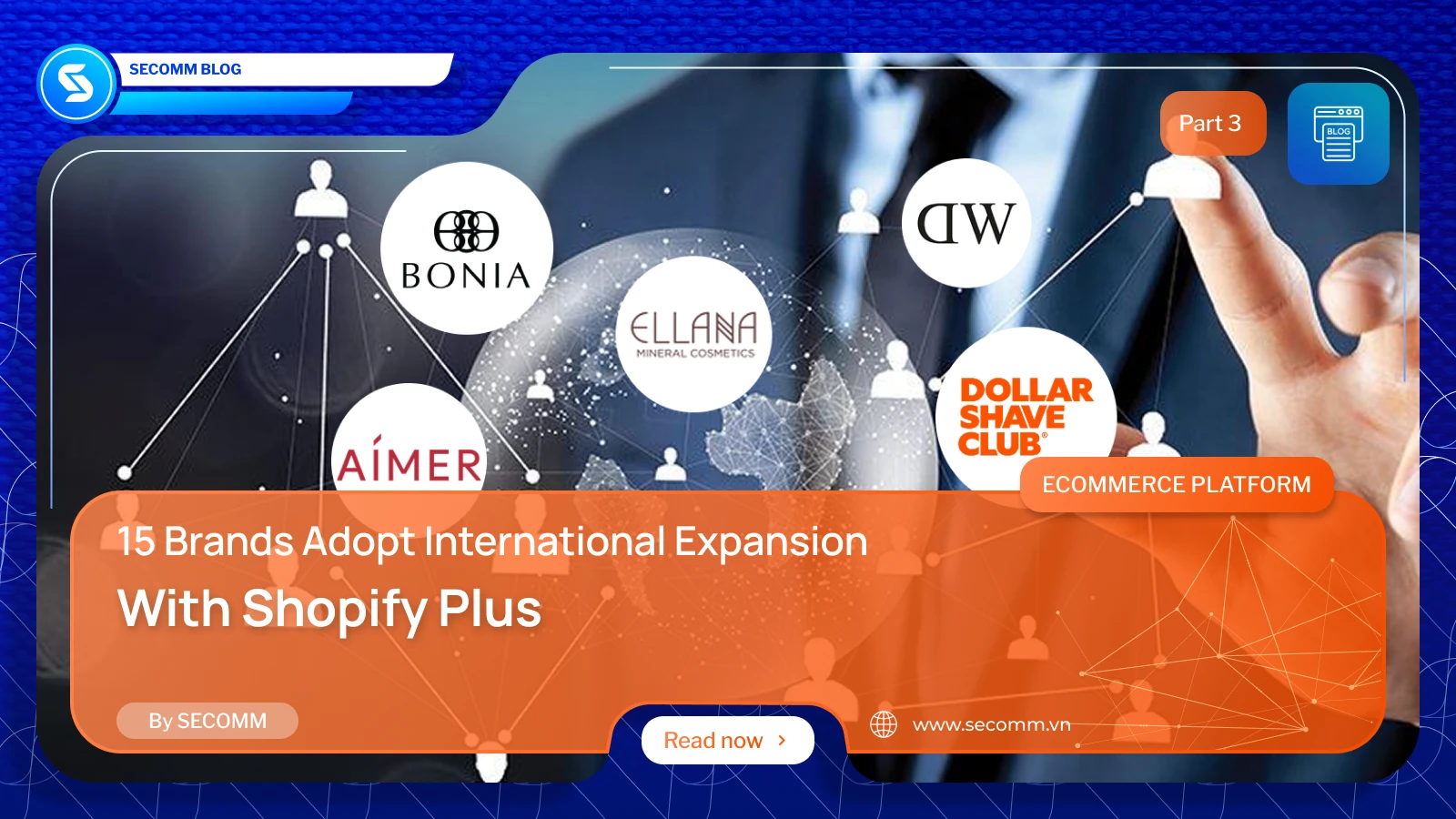
Welcome to the final installment of our three-part series on brands that have successfully embraced international expansion with Shopify Plus. In the previous parts, we explored the journeys of ten dynamic brands that leveraged Shopify Plus to navigate the complexities of global growth. In this concluding chapter, we turn our attention to five more outstanding brands: Ellana Cosmetics, Dollar Shave Club, Daniel Wellington, BONIA, and AIMER.
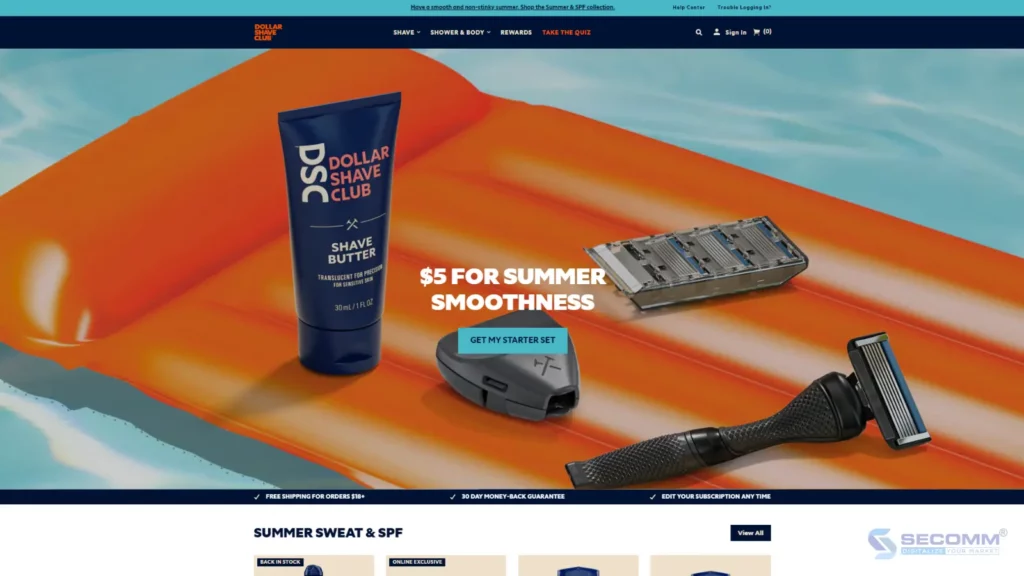
Dollar Shave Club (DSC) is a renowned American company that revolutionized the personal care industry with its subscription model for razors and personal care products.
Initially, DSC built its own custom eCommerce platform, which provided flexibility and high customization. While this allowed DSC to shape its business model in the digital landscape, managing and maintaining it became complex and resource-intensive over time. As technological solutions like Shopify emerged, offering features and tools that DSC could leverage, the company explored available solutions to integrate them into its existing system. After careful consideration, DSC transitioned to Shopify Plus to better support its profit growth and international expansion goals.
Through Shopify Plus, DSC operates and manages its subscription business model more effectively, integrating multiple applications within the Shopify ecosystem to optimize marketing campaigns and customer care. As a result, DSC reduced system maintenance resources by 40%, reached over 100 million global consumers through ShopApp, swiftly converted international stores to Shopify Plus within weeks instead of months, and increased conversion rates using Shopify’s applications.
Website: dollarshaveclub.com
Industry: Men Health
Traffic: 3.148M/month
Rank: #9,907 (USA) & #50,278 (Global)
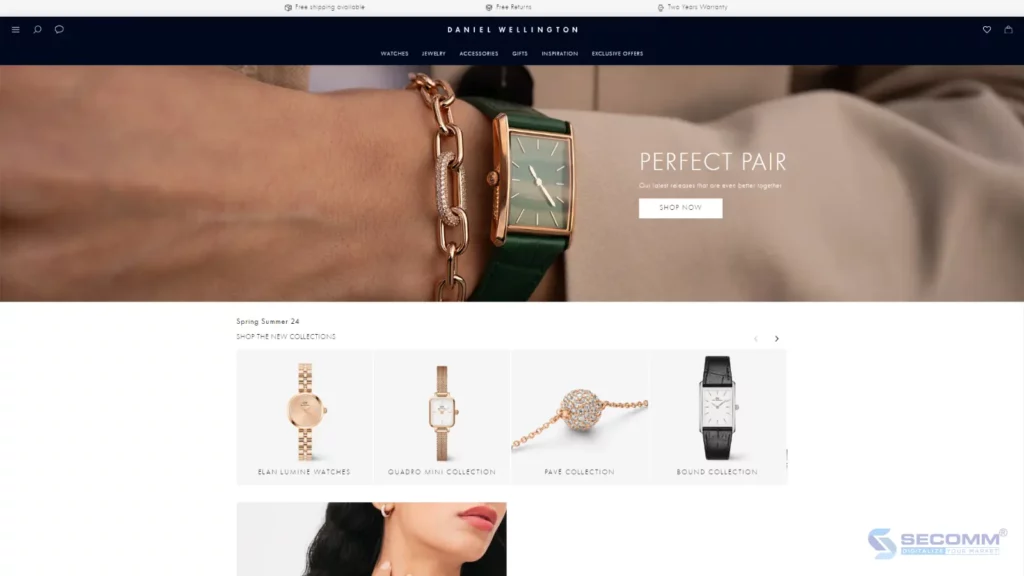
Launched in Sweden in 2011, Daniel Wellington is known for its elegant, minimalist watch designs and superior quality. Before Daniel Wellington adopted Shopify, they faced significant operational challenges, particularly the complexity and cost of their current technology systems, which included an e-commerce platform lacking user interface from CommerceTools and Contentful as their chosen CMS platform. The development and rollout of new features were time-consuming and cumbersome, consuming substantial resources. Additionally, Daniel Wellington used an on-premise ERP system, which increased costs and complexity. With multiple stores and integrated systems, product changes took months or even years to implement, resulting in delayed time-to-market.
Since transitioning to Shopify Plus, all these issues have been thoroughly addressed. Website features that previously took months or even years to develop and launch now take only days or weeks. This practical approach allows for quicker decision-making and agile response based on market dynamics. Other notable outcomes include the rapid launch of 12 expansion stores, a 50% reduction in platform fees, and fewer resource expenditures on maintenance and development compared to before.
Website: https://global.danielwellington.com/
Industry: Fashion
Traffic: 2.773M/month
Rank: #78,900 (USA) & #63,785 (Global)
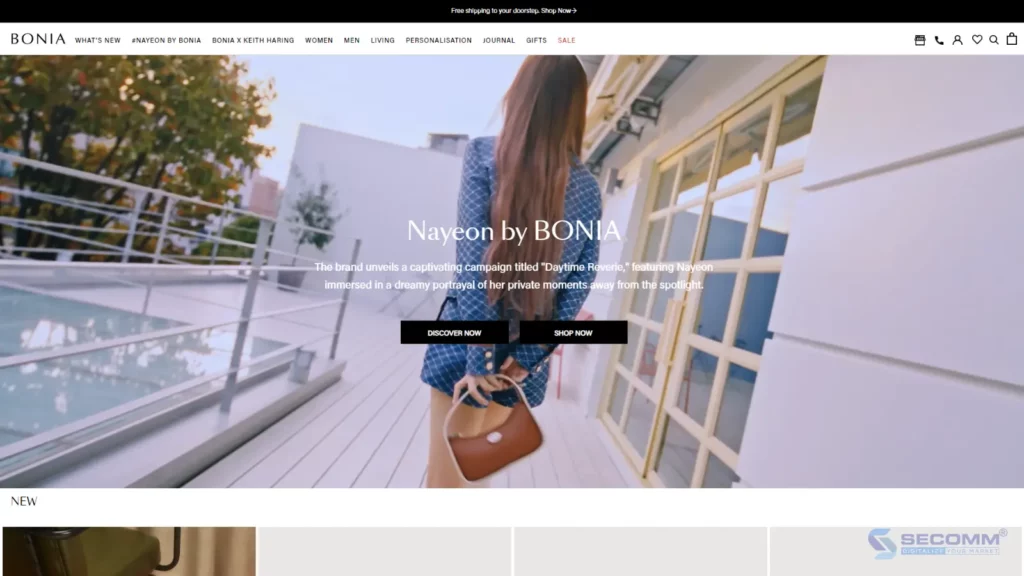
Established in 1974, BONIA has gradually become a prestigious and irreplaceable fashion brand in Southeast Asia. After making the strategic decision to transition from Adobe Commerce to Shopify due to previous challenges with product launch speed and website responsiveness, BONIA aimed to leverage its online presence for international expansion. Recognizing the need to provide personalized experiences for customers while maintaining a consistent brand identity across different markets, BONIA also sought to ensure that managing multiple websites wouldn’t burden its team with excessive time and costs.
Therefore, BONIA upgraded to Shopify Plus. This strategic move enabled BONIA to harness the expansive capabilities of Shopify Plus storefronts, allowing them to establish multiple online storefronts alongside their flagship Malaysian website. Leveraging this capability, BONIA seamlessly integrated themes and layouts from its Malaysian store while ensuring each new store exudes its own distinct charm and is localized to specific locations. This localization was achieved through customized adjustments tailored to each specific region. Shopify Plus’s organizational admin also played a crucial role, providing BONIA with a centralized command center for all its stores.
As a result, BONIA increased its overall revenue by 10% through expansion into Singapore and saw a 25% annual increase in website traffic.
Website: https://bonia.com/
Industry: Fashion
Traffic: 108,842/month
Rank: #27,473 (Malaysia) & #1,510,285 (Global)

In 2007, Ellana Cosmetics was founded with the goal of helping global consumers achieve better skin and improve their skincare knowledge. Recognizing the opportunity to reach more customers online, the brand initially started with a basic HTML website, then moved to Adobe Commerce and later WooCommerce. However, Ellana Cosmetics was dissatisfied with the results these platforms provided. The lack of robust data management tools made it difficult to personalize customer experiences across different markets, resulting in significant online sales losses.
Ellana Cosmetics switched to Shopify when their e-commerce marketing efforts were still in their infancy in the Philippines. This allowed Ellana to strengthen its technological foundation and accelerate growth and efficiency by upgrading to Shopify Plus shortly thereafter. The company leveraged various solutions to optimize managing multiple expanded storefronts, including Shopify Flow. As a result, the average order value increased by 17%, payment failure rates decreased by 40%, and online revenue increased by 50%.
Website: https://www.ellanacosmetics.com/
Industry: Cosmetics
Traffic: 88,075/month
Rank: #61,563 (Philippines) & #2,754,014 (Global)
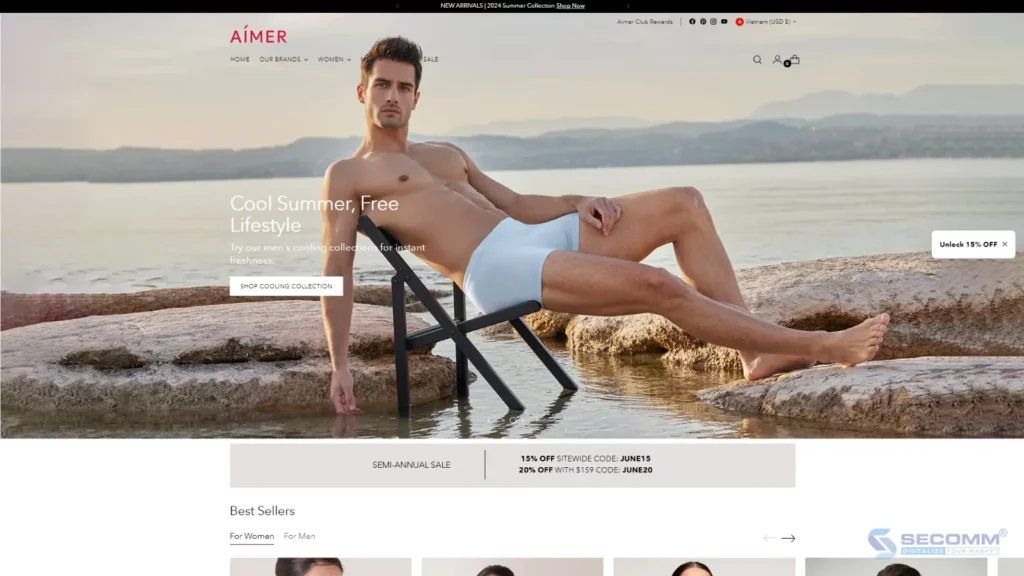
Founded in 1993, AIMER is one of the leading lingerie brands in China. With over 20 years of experience in designing and creating premium and luxurious lingerie, AIMER takes pride in its continuously evolving creative design team, which has developed more than 400 new products under its five main brands: AIMER, imi’s, LA CLOVER, AIMER Men, and Aimer Kids. Supported by these innovative products, AIMER has established an international presence far beyond its homeland, including regions such as North America, Europe, and the Middle East.
International sales are a crucial part of AIMER’s development strategy. However, the brand faced challenges regarding customization, taxation, and compliance with tax rules. AIMER migrated its platform to Shopify Plus, leveraging its customization capabilities to meet the needs of customers in international markets.
Additionally, utilizing Shopify Plus’s Avalara tax automation feature helped AIMER automatically calculate taxes based on the customer’s international address. Instead of manually calculating taxes, Shopify Plus accurately computed taxes for each order based on the latest tax regulations of the target market and automatically added taxes to the final checkout page, ensuring transparency in tax costs for consumers.
As a result, AIMER saw a 105% increase in monthly site visits, a 57% increase in monthly conversion rates, and a 62% increase in monthly page views.
Website: https://aimeronline.com/
Industry: Fashion
Traffic: 32,449/month
Rank: #51,992 (Hong Kong) & #1,948,207 (Global)
Final Words
In this final part of our series, we’ve delved into the inspiring journeys of Ellana Cosmetics, Dollar Shave Club, Daniel Wellington, BONIA, and AIMER. These brands exemplify how leveraging Shopify Plus can transform the challenges of international expansion into opportunities for growth and success.
As we conclude our series, it is evident that the journey to international expansion is complex but highly rewarding with the right tools and strategies. For brands looking to embark on this path, the experiences of 15 success stories will provide valuable insights and inspiration.
Need a deep consultation? Contact SECOMM for free!
 2
2
 3,597
3,597
 0
0
 1
1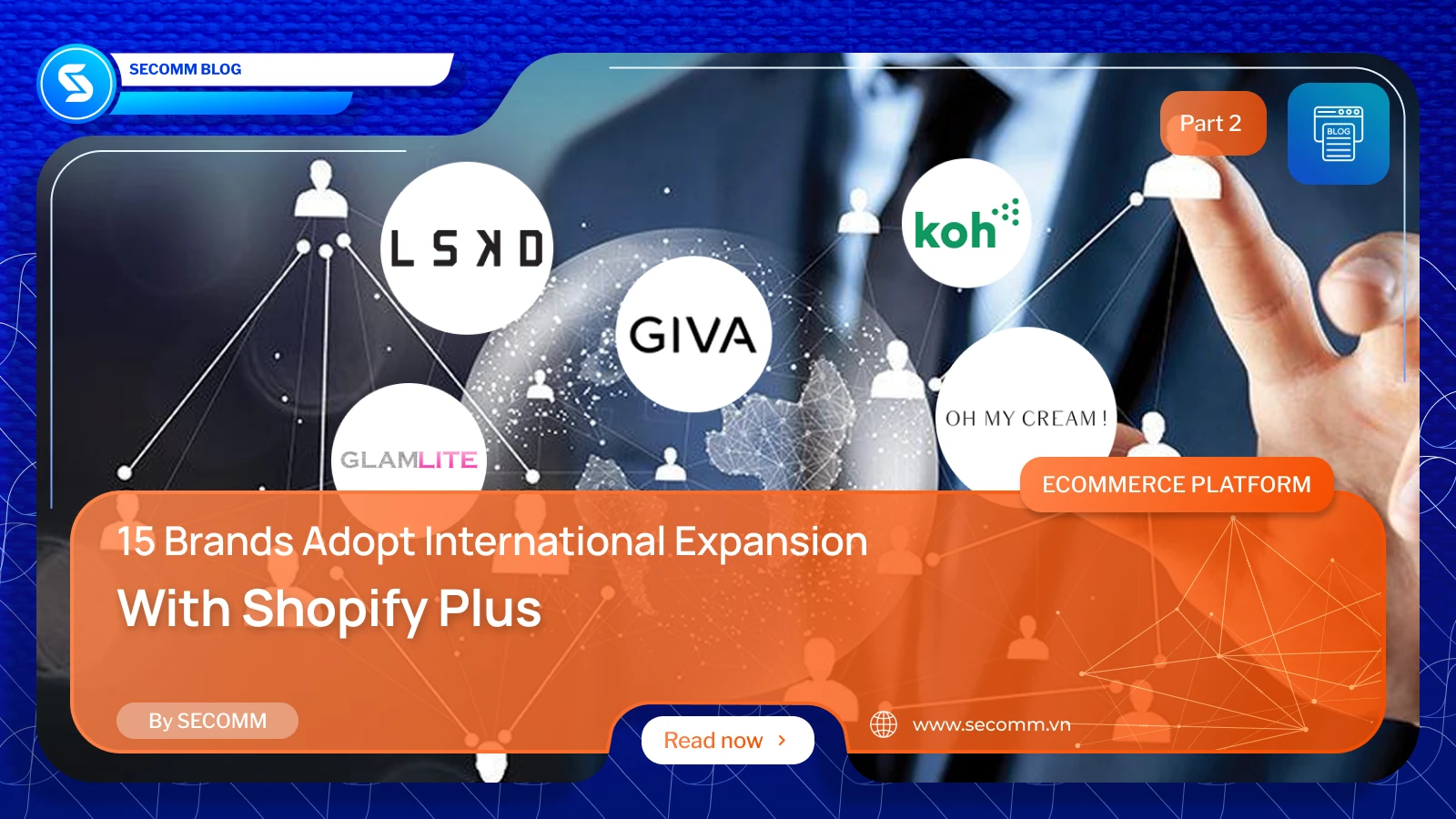
In Part 2 of our series, we delve into the journeys of Oh My Cream, Koh, LSKD, Glamlite, and GIVA. Each of these brands brings unique offerings to the global market, from skincare and household products to activewear and gourmet cosmetics. We explore how these companies have navigated the complexities of international expansion, overcoming challenges and seizing opportunities with the support of Shopify Plus.
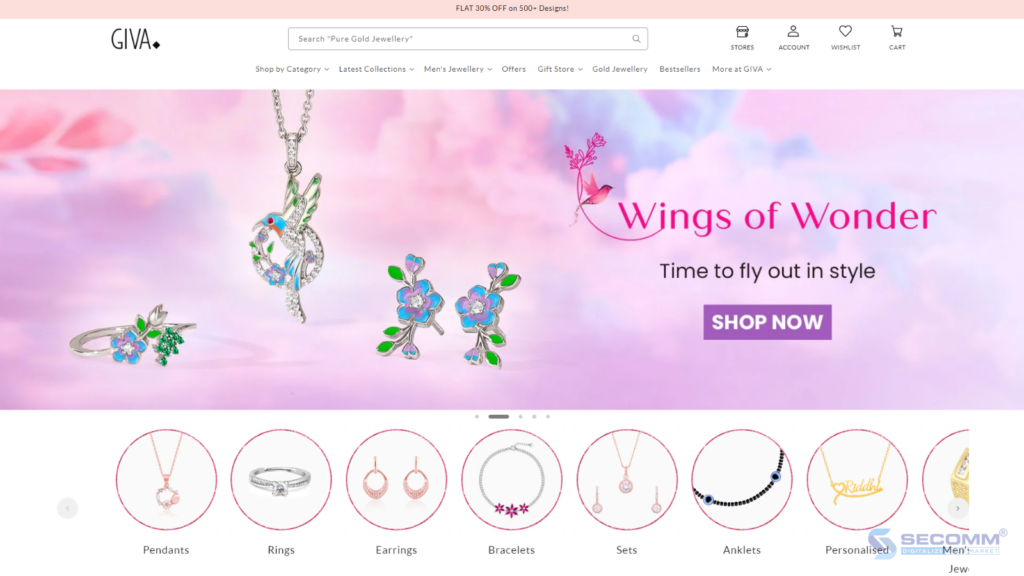
GIVA is India’s leading brand for providing luxurious and elegant gold and silver jewelry at affordable prices. Since its launch in 2019, the brand has been loved by both domestic and international customers. Consequently, within just four years, the company achieved remarkable growth, leading to the need for a more robust eCommerce system.
Initially, GIVA’s D2C system operated on Shopify, but to handle the large and increasing volume of transactions, the company upgraded to Shopify Plus. Through Shopify Plus, GIVA quickly launched additional stores in the USA and Sri Lanka, and also set up an expansion store for its sub-brand, AVNI.
GIVA leveraged the exclusive Shopify Plus feature, organizational admin setting, to seamlessly and efficiently perform actions across multiple stores, rather than managing each store individually. As a result, GIVA experienced a 100% year-over-year revenue increase compared to 2021, a 193% increase in its global customer base from April 2021 to April 2022, and reached customers in three different geographical regions.
Website: https://www.giva.co/
Industry: Jewelry
Traffic: 7.160M/month
Rank: #1,523 (India) & #21,585 (Global)

Founded in 2007, LSKD (short for ‘Loose Kid’) is an Australian-based apparel brand specializing in high-quality athletic wear with a street style and a focus on fitness functionality. Although LSKD began as a wholesaler, it has since reinvented itself as a vibrant consumer-oriented brand with online retail at the core of its operations. The company has also made a name for itself in physical retail, opening several stores both domestically and internationally.
As LSKD planned its international expansion into the United States, the brand aimed to ensure a highly personalized customer experience. Despite having a system capable of serving shoppers in multiple countries, LSKD needed a more flexible and easily manageable system. Consequently, LSKD transitioned to Shopify Plus and used the expansion store feature to quickly and easily create a new store targeting the US market. Using the online store in the US as a springboard, LSKD opened a physical store in San Diego and pop-up shops at sports events nationwide. All these operations were smoothly run on Shopify POS.
Website: https://www.lskd.co/
Industry: Fashion
Traffic: 2.112M/month
Rank: #1,182 (Australia) & #70,075 (Global)
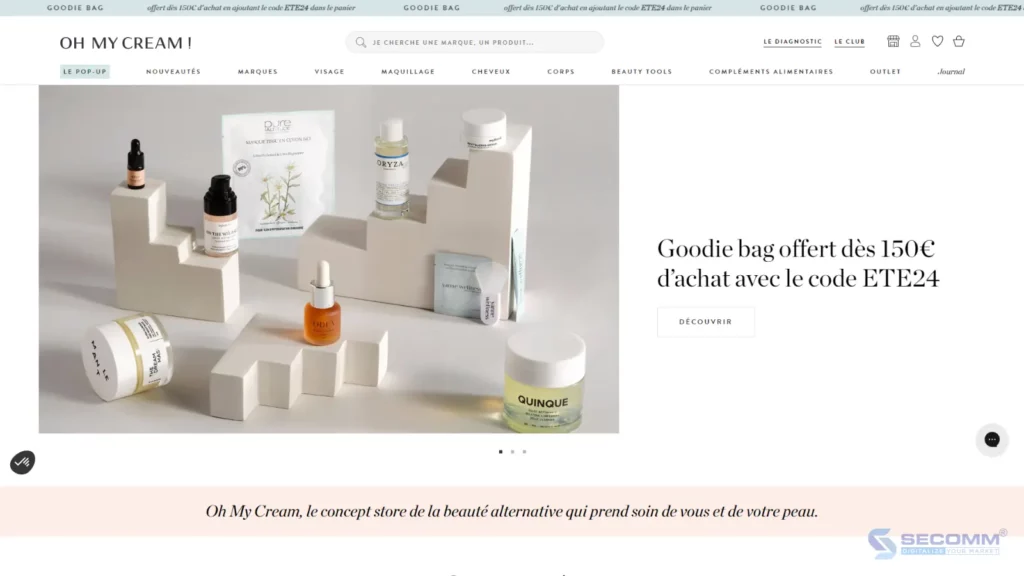
Oh My Cream is a French cosmetics brand founded in 2012, with an omnichannel strategy as its core focus. Oh My Cream currently operates both physical stores and an eCommerce website. As of now, the company has expanded internationally with over 20 retail stores, including two in London, and a bilingual website.
To customize and optimize the omnichannel experience, Oh My Cream implemented Shopify Plus. The unique and superior omnichannel features of Shopify Plus met Oh My Cream’s expectations. Additionally, Oh My Cream transitioned its outdated payment system to Shopify POS to collect more comprehensive customer data. After optimizing the omnichannel experience with Shopify Plus, Oh My Cream increased the average customer lifetime value by 50%, the average basket value by 25%, and enhanced data collection to implement a loyalty program.
Website: https://www.ohmycream.com/
Industry: Cosmetics
Traffic: 602,976/month
Rank: #7,537 (France) & #180,940 (Global)
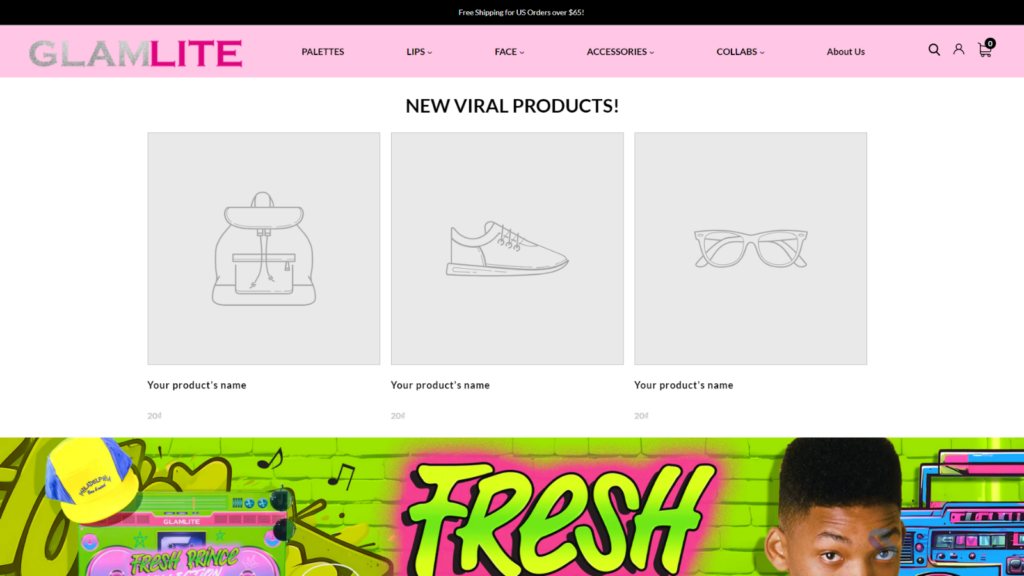
Glamlite, a cosmetics brand founded in 2018 in Los Angeles, is renowned for its colorful lipsticks and eyeshadow palettes. Glamlite launched its e-commerce website using Shopify Plus from the beginning and initially sold products internationally. However, their growth rate was not promising due to high USPS shipping costs, long delivery times, and the inability to track international packages.
The lack of international tracking by USPS left Glamlite and their customers unaware of the whereabouts of shipments, with some customers never receiving their orders. Unsurprisingly, Glamlite’s customer retention rate and international sales were significantly lower than expected. However, after implementing Shopify Market Pro, Glamlite overcame these issues, resulting in:
Website: https://glamlite.com/
Industry: Cosmetics
Traffic: 376,734/month
Rank: #56,604 (USA) & #316,746 (Global)
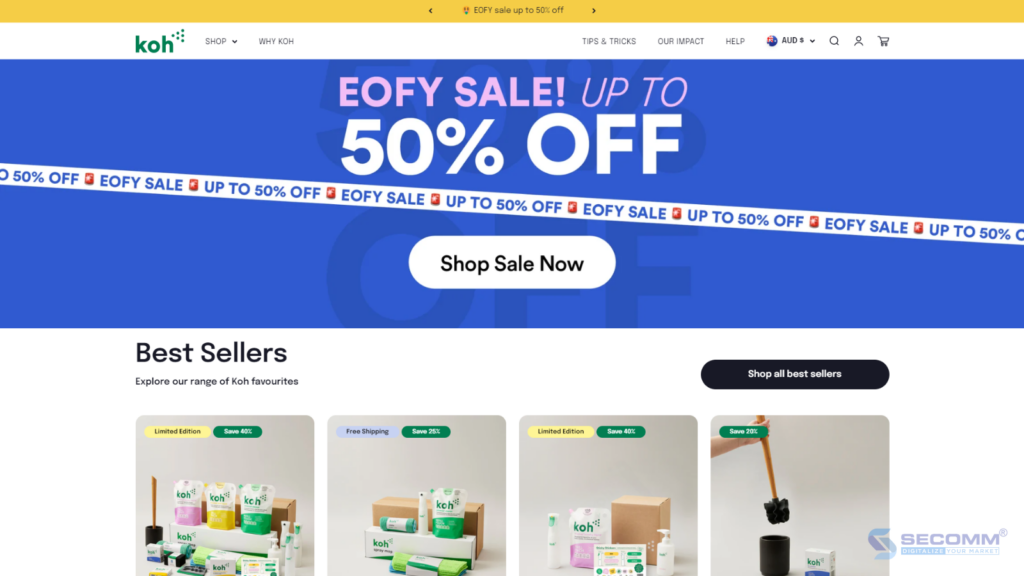
Koh is a brand specializing in producing and supplying chemical-free, eco-friendly cleaning products. Two years after its establishment, Koh achieved $50 million in revenue. The eCommerce website was converting well but started to look outdated. The product line was also expanding, creating opportunities for upselling, cross-selling, and promotions that were not being fully utilized. Global expansion was also on the agenda, and Koh’s founder, Alexander, wanted a solution that would allow Koh to grow without limitations.
After operating on Shopify for some time, Koh decided to upgrade to Shopify Plus. The expansion store feature of Shopify Plus enabled Koh to scale seamlessly into new regions with custom payment tools to improve conversion rates. For example, Koh could customize the checkout process using third-party apps like Rebuy for comprehensive personalization, upselling, and cross-selling with A/B testing, and Klaviyo for better product recommendations. Finally, the Launchpad scheduling tool allowed the team at Koh to quickly set up and schedule promotional and sales events.
Website: https://koh.com/
Industry: Home and Garden
Traffic: 371,270/month
Rank: #5,902 (Australia) & #310,539 (Global)
Final Words
The stories of Oh My Cream, Koh, LSKD, Glamlite, and GIVA showcased in Part 2 of our series exemplify the dynamic possibilities that emerge when innovative brands embrace Shopify Plus for international growth. From pioneering new markets to enhancing customer experiences through tailored eCommerce solutions, these brands have demonstrated resilience, creativity, and strategic foresight in their expansion efforts.
Stay tuned for Part 3 of our series, where we’ll uncover more success stories and strategies as brands continue to thrive with Shopify Plus on their path to global expansion.
 2
2
 3,153
3,153
 0
0
 1
1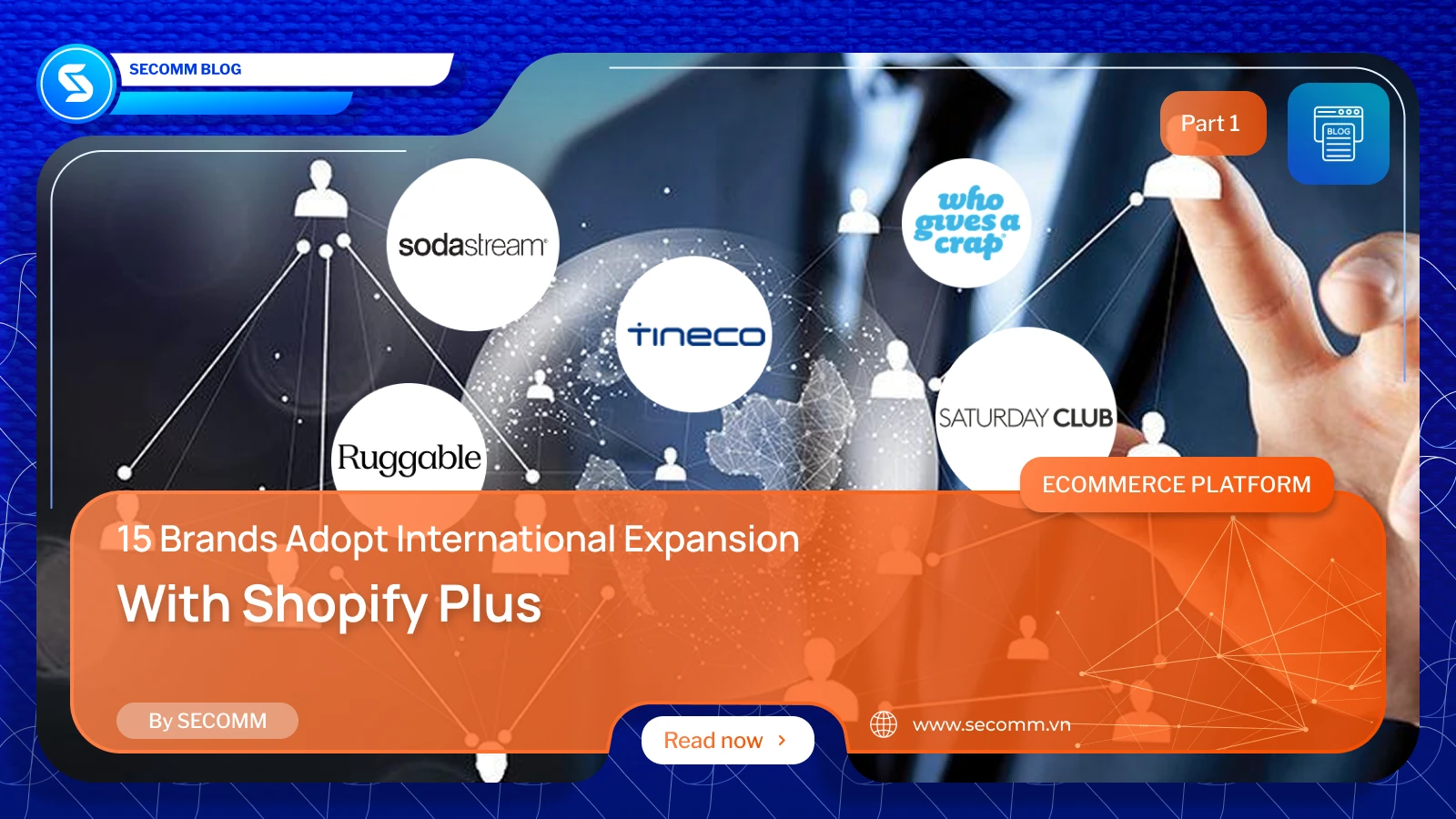
In today’s global economy, international expansion is essential for e-commerce brands seeking revenue growth and global recognition. However, navigating new markets presents challenges such as logistics, regulations, and cultural differences.
Shopify Plus offers a robust platform designed to help high-growth businesses expand seamlessly. With features for localization, multi-currency transactions, and international shipping, it simplifies cross-border commerce.
In this three-part series, we’ll explore how 15 brands have successfully expanded internationally using Shopify Plus. In Part 1, we’ll dive into the success stories of Saturday Club, Who Give a Crap, Tineco, SodaStream, and Ruggable, examining their strategies, challenges, and the results of their global ventures.
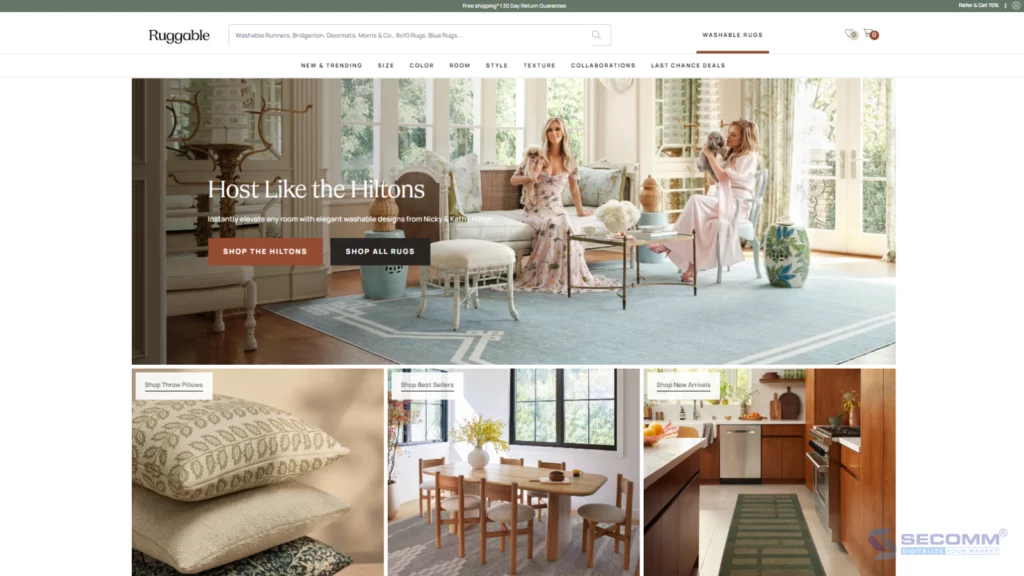
Ruggable is known as a brand that specializes in producing and supplying high-quality rugs with a wide variety of designs, sizes, and materials. During the social distancing period due to Covid-19, the increased demand for home decoration and renovation helped Ruggable achieve remarkable growth, laying the foundation for its goal of expanding into international markets.
With Shopify Plus, Ruggable implemented a Headless store to flexibly customize the interface and features, providing customers with a seamless shopping experience. The Headless implementation also helped Ruggable customize their expanding store. The company has expanded into Canada, the United Kingdom, Germany, Austria, France, the Netherlands, Australia, and the United States. Shopify Markets made it much easier for Ruggable to convert currencies and update product prices when launching in new markets. Ruggable didn’t have to worry about issues like manual pricing or tracking currency conversions over time. Shopify Plus handled everything for Ruggable.
Website: https://ruggable.com/
Industry: Home and Garden
Traffic: 15.49M/month
Rank: #2,252 (USA) & #11,656 (Global)
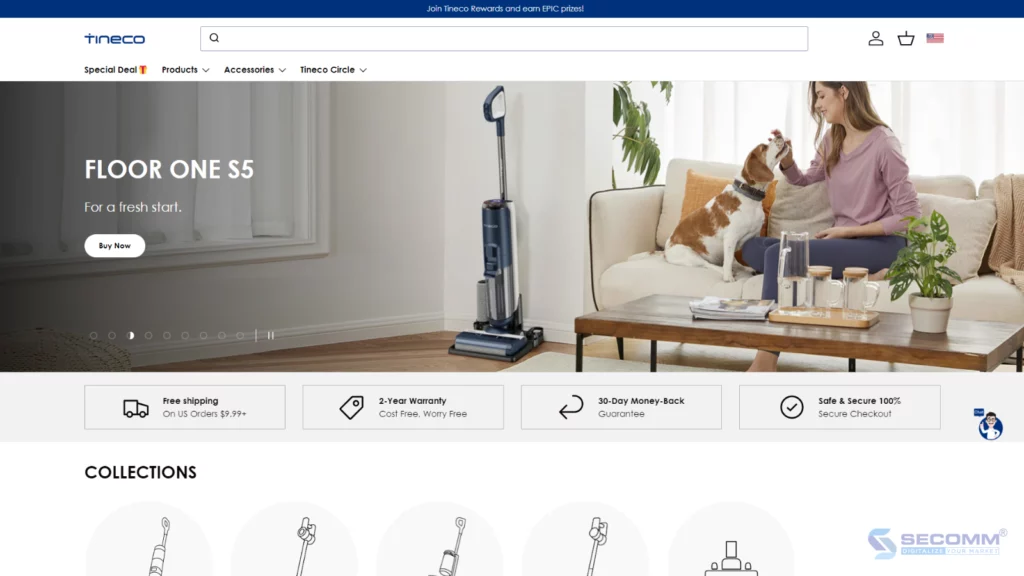
Since its establishment in 2002, Tineco has continuously researched and improved to provide customers with high-end vacuum cleaners and mops, enhancing the quality of life and saving time. Believing that offering customers an experience beyond expectations is the key to success, Tineco aims to target international markets. Initially, Tineco used Shopify to quickly build a functional eCommerce website as an independent sales channel. However, Tineco wanted to drive overseas growth by creating highly customizable stores without adding operational burdens like switching between different pages of the website.
Tineco upgraded to Shopify Plus to accelerate its international expansion. With the growth of the European market, Tineco utilized Shopify Plus’s expansion store feature to create additional stores across the continent. Tineco also used checkout extensibility to customize checkout pages, integrating apps like Smile: Loyalty & Rewards to add point reminders, encouraging repeat business, and offering buy-now-pay-later options to support conversions of high-order-value products.
Website: https://store.tineco.com/
Industry: Consumer Electronics
Traffic: 2.688M/month
Rank: #33,866 (USA) & #62,833 (Global)
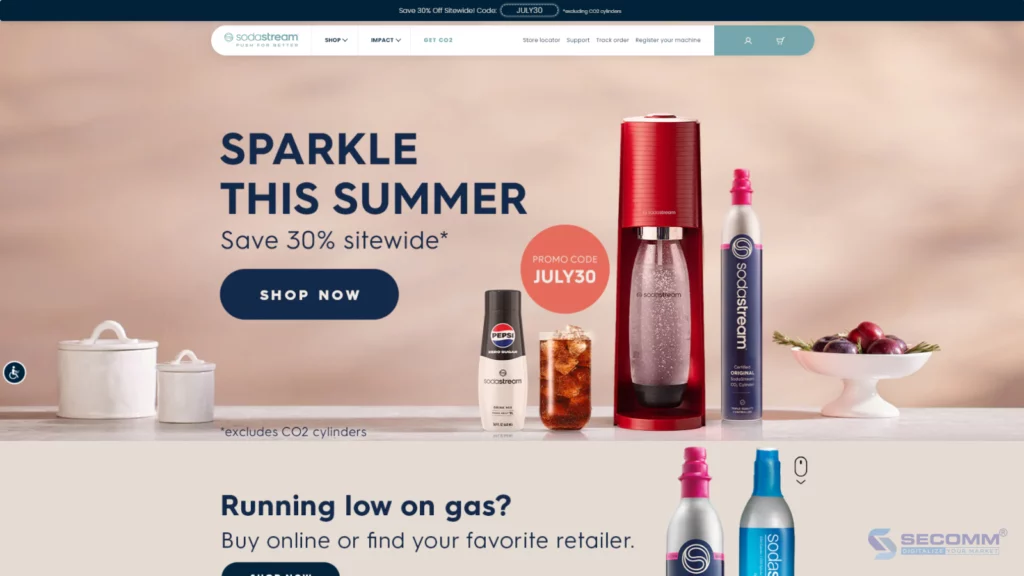
Founded in 1903, SodaStream is an environmentally friendly brand that transforms tap water into carbonated beverages for consumers. Initially, some solutions and features of SodaStream’s website were based on Adobe Commerce, while others relied on local systems. The lack of uniformity in its e-commerce operations led to inefficiencies and hindered SodaStream’s ability to scale. This prompted the business to transition to the Shopify Plus platform. The flexibility of Shopify Plus allowed SodaStream to easily customize its expansion stores to meet the specific needs and preferences of customers in different regions. Additionally, Shopify Plus facilitated rapid deployment of new websites as SodaStream entered new markets, synchronizing online store launches with retail stores to create a seamless customer experience. As a result, SodaStream’s revenue increased by 20%, effectively managed data for 9 million users, and expanded globally to 16 websites across 15 countries within four years.
Website: https://sodastream.com/
Industry: FnB
Traffic: 2.496M/month
Rank: #12,360 (USA) & #56,939 (Global)
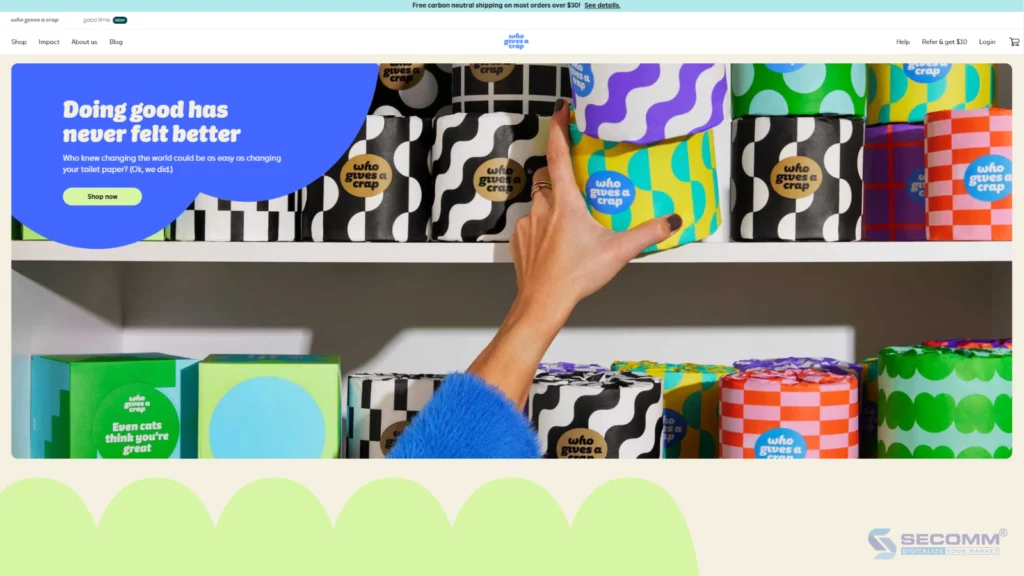
Who Gives a Crap is a brand specializing in manufacturing and supplying high-quality toilet paper with attractive designs. Initially, the brand adopted a direct-to-consumer (D2C) model and used the Shopify platform. However, as the brand aimed to transition to the next growth phase with a primary goal of international expansion, Who Gives a Crap needed more robust eCommerce capabilities. Additionally, the company targeted implementing a business-to-business (B2B) model for growth. However, with mostly manual B2B ordering processes, each new wholesale transaction meant additional time spent on administrative tasks like inventory reconciliation, making B2B scaling challenging.
Soon after, Who Gives a Crap upgraded to Shopify Plus to leverage the expansion store feature and swiftly set up three separate custom online stores for target markets in the US, UK, and Europe. The company also used the expansion store feature to launch B2B stores. By using B2B on Shopify, Who Gives a Crap enabled creating custom pricing for each wholesale customer, self-service ordering, and automated order fulfillment processes. This toilet paper brand also utilized Shopify Flow to create and customize automation workflows to optimize operations integrating both D2C and B2B.
Website: whogivesacrap.org
Industry: Groceries
Traffic: 2.247M/month
Rank: #5,310 (UK) & #66,212 (Global)

Saturday Club is a renowned fashion retailer based in Singapore, dedicated to providing customers with high-quality products and an engaging shopping experience. Starting as a B2B brand, Saturday Club has evolved over two decades to establish a large retail business with an extensive online presence spanning countries such as Malaysia, Japan, the USA, the UK, and Australia.
Saturday Club expanded its online operations to several other countries using the Adobe Commerce eCommerce platform and deployed PrestaShop in some markets. However, each country launch typically took over a month and incurred high costs, sometimes exceeding SGD 10,000 for markets served by the Adobe Commerce platform. Additionally, troubleshooting, complexities arising from integrations and backups, and data migration consumed significant time and budget for Saturday Club.
After transitioning to Shopify Plus, Saturday Club utilized the expansion store feature to scale up to 4 international stores and checkout extensibility to easily implement third-party payment gateway solutions, offering customers in different international markets more purchasing options. As a result, Saturday Club launched 9 international stores within 6 months, increased its global customer base by 5%, and achieved a 38% year-over-year revenue growth in Malaysia during the Chinese New Year 2024.
Website: https://sg.saturdayclub.com/
Industry: Fashion
Traffic: 435,965/month
Rank: #2,578 (Singapore) & #233,691 (Global)
Final Words
Expanding internationally is a significant milestone for any e-commerce brand, and as we’ve seen, Shopify Plus is a powerful ally in this journey. The success stories of Saturday Club, Who Give a Crap, Tineco, SodaStream, and Ruggable highlight how leveraging the right tools and strategies can overcome the complexities of entering new markets.
As we conclude Part 1 of this series, it’s clear that the potential for global e-commerce is immense. Whether you’re a budding entrepreneur or an established brand, the experiences of these companies provide valuable insights and inspiration. Stay tuned for Part 2, where we’ll continue to explore more brands thriving globally with the help of Shopify Plus.
 2
2
 3,049
3,049
 0
0
 1
1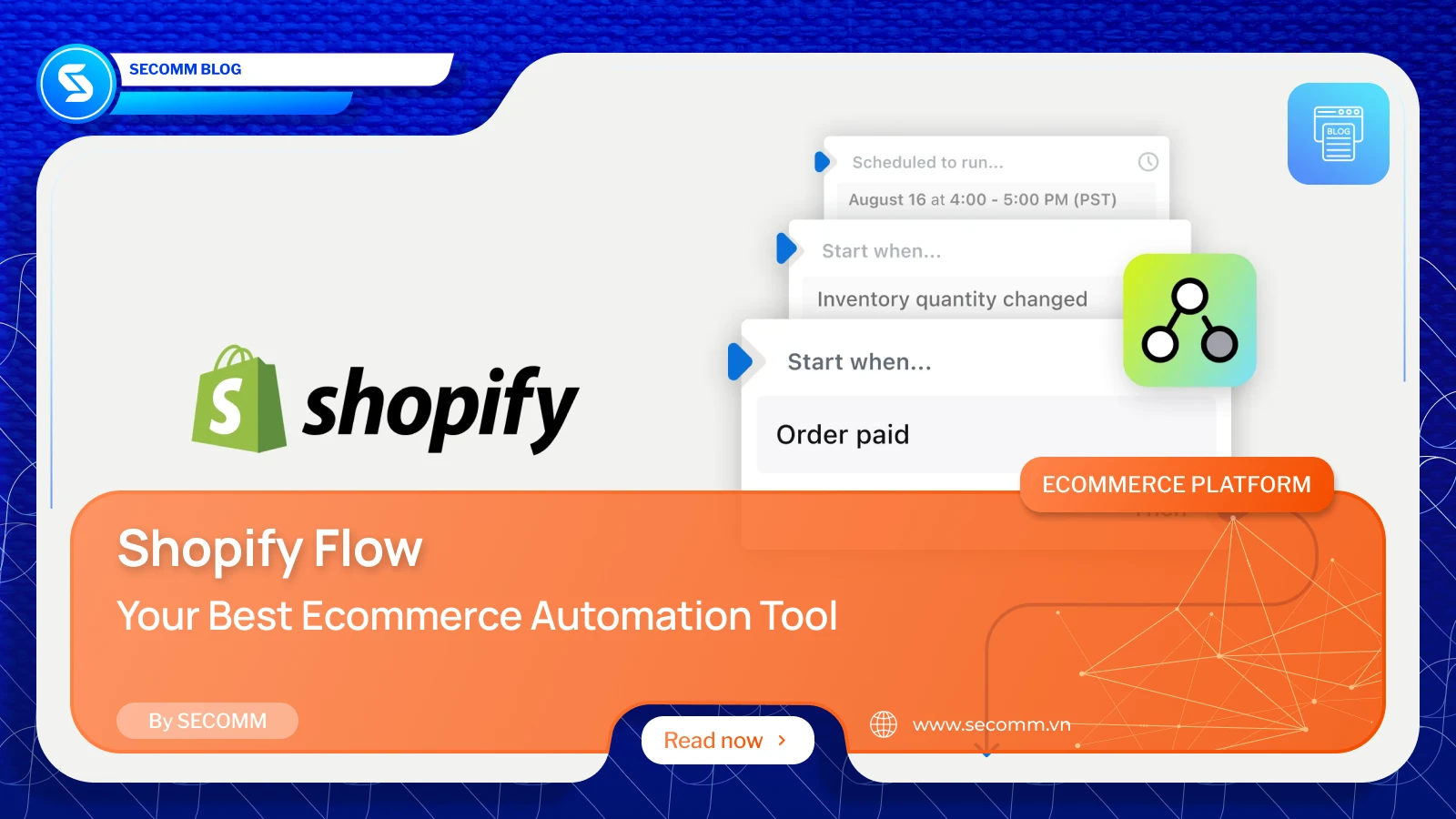
In the fast-paced digital world, eCommerce automation and efficiency are key to staying ahead of the competition. With countless tasks to manage, from inventory updates to customer engagement businesses need reliable tools to streamline their operations. Enter Shopify Flow, a powerful automation tool designed specifically for Shopify users. Shopify Flow allows merchants to automate repetitive tasks, freeing up valuable time and resources to focus on growing their business.
In this blog, we’ll explore how Shopify Flow works, its key features, and the benefits it can bring to your eCommerce operations. Whether you’re a seasoned Shopify user or new to the platform, understanding how to leverage Shopify Flow can be a game-changer for your business.
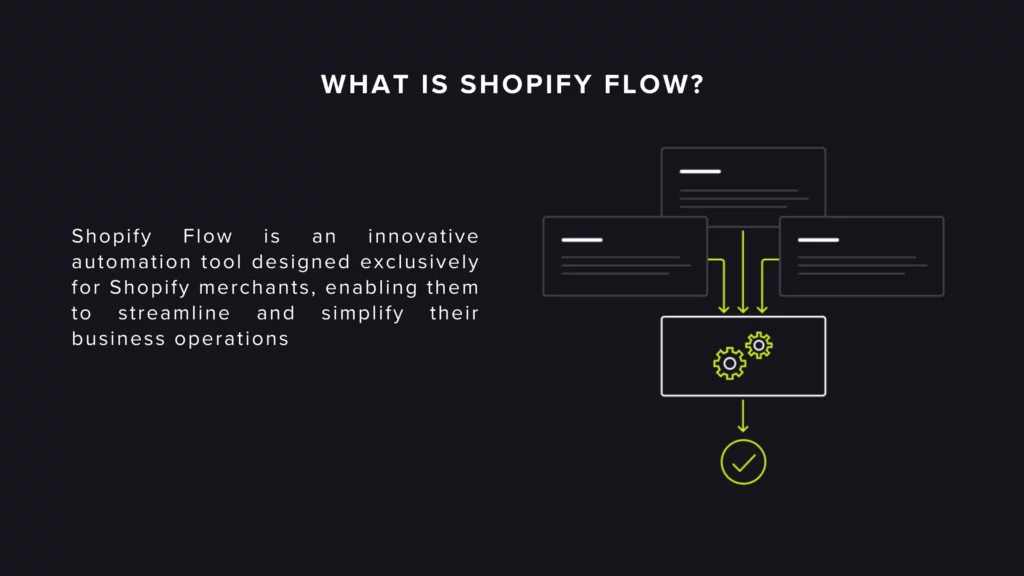
Shopify Flow is an innovative automation tool designed exclusively for Shopify merchants, enabling them to streamline and simplify their business operations. It provides a visual interface where users can create custom workflows to automate repetitive and time-consuming tasks without the need for any coding skills.
Shopify Flow is available at all plans: Basic, Shopify, Advanced and Plus.
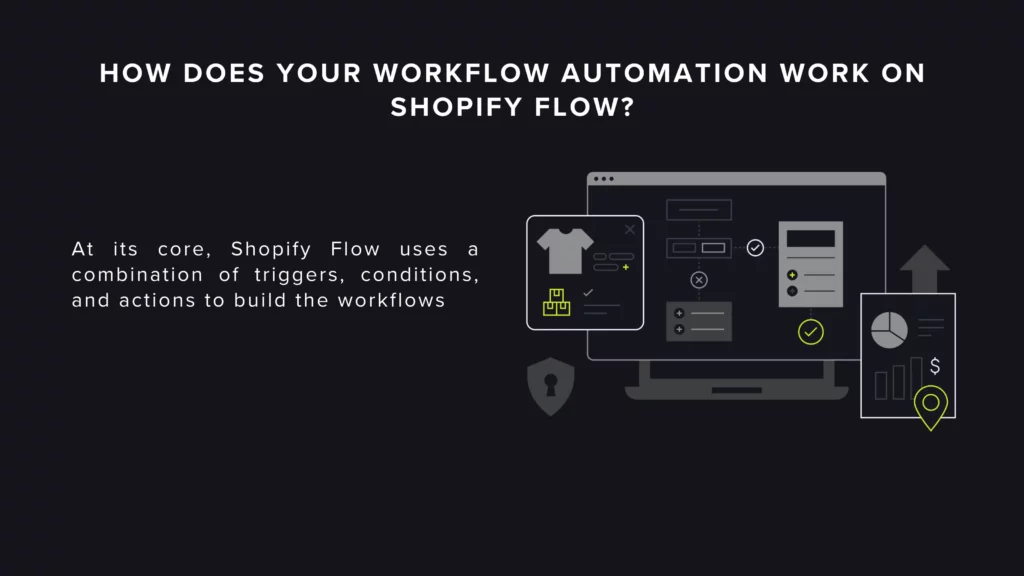
At its core, Shopify Flow uses a combination of triggers, conditions, and actions to build the workflows. A trigger initiates the workflow, a condition specifies criteria that must be met, and an action defines what happens when the criteria are met.
For example:
This tool is particularly valuable for automating processes such as inventory management, fraud prevention, loyalty and retention, fulfillment management and marketing campaigns. By automating these tasks, Shopify Flow helps businesses improve efficiency, reduce human error, and ensure consistent execution of key operations.
Shopify Flow also integrates seamlessly with a variety of Shopify apps and third-party tools, making it a versatile solution for businesses looking to optimize their workflows. Whether you’re running a small online store or managing a large eCommerce enterprise, Shopify Flow offers the flexibility and scalability to meet your automation needs.
Creating and managing workflow automation with Shopify Flow is a straightforward process that can significantly enhance your eCommerce operations.
Step 1: Open up the Shopify Flow editor, then select “Create workflow”
Step 2: Click “Select a trigger” from a searchable list of native triggers of Shopify or those from 3rd-party apps to start the workflow.
Step 3: Click on the Blue button to choose to add either condition or action
Step 4: Select “Condition” to set rules to determine if the action executes.
Step 5: Click “Then” to set action for the true condition. Or “otherwise” to set action for the false condition.
Step 6: Click “turn on”, the button in the top right corner will turn green and show is on.
You can also leverage the templates library. Here, you’ll find the pre-made workflows that you can use right away or edit to fit your business needs.
Step 1: To add new action items by clicking on any blank space in the editor, select the “Action” button. All of available options will appear
Step 2: Search specific action on the search bar and simply select the action
Step 3: Connect the new action to the existing workflow by selecting the “Then” button from your condition and linking it to your new action.
Step 1: Click on remove the action
Step 2: Some actions now no longer connected. You’ll need to link them back to the rest of your workflow.
Step 3: You can link them to the condition or to other actions.
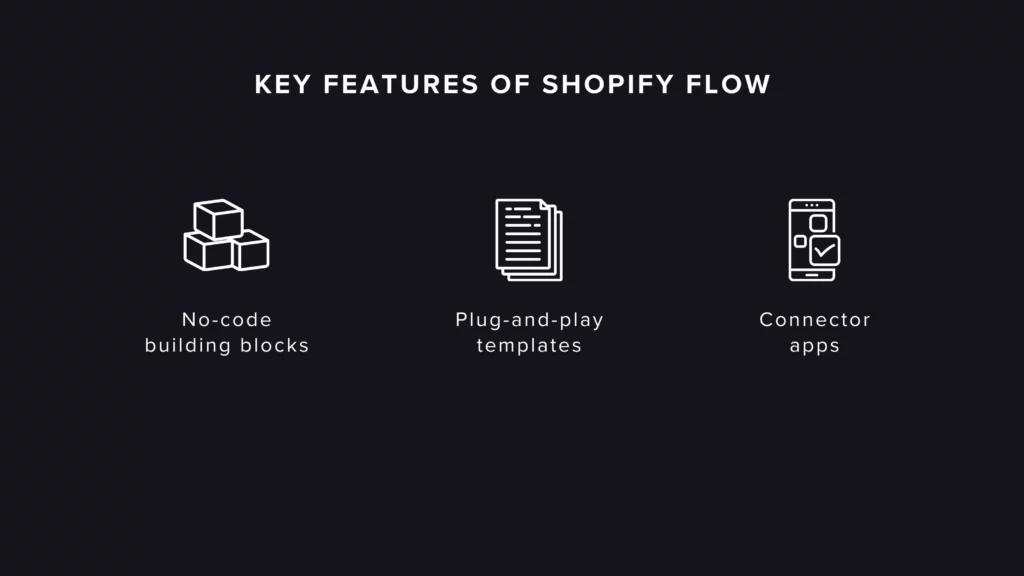
Shopify Flow is packed with features that make it a powerful tool for eCommerce automation. Here are 3 core features you should notice
At the heart of Shopify Flow are its intuitive building blocks: triggers, conditions, and actions, which allows you to create your custom eCommerce automation processes. Triggers initiate workflows based on specific events, conditions set criteria that must be met for the workflow to proceed, and actions define what tasks will be executed. This modular approach helps you create highly customized workflows tailored to your unique business needs, enabling precise automation of complex processes without any coding knowledge.
Shopify Flow offers a variety of pre-built templates that cover common eCommerce scenarios such as inventory management, customer segmentation, and order processing. These templates provide a quick and easy way to implement automation, allowing you to get started with minimal effort. Each template can be customized to fit specific requirements, making it an excellent starting point for those new to automation.
To extend its capabilities, Shopify Flow allows you to integrate seamlessly with numerous third-party apps. This feature allows you to automate workflows that span multiple tools and platforms. For example, you can connect Shopify Flow with email marketing apps, CRM systems, and inventory management software to create comprehensive, cross-functional automations. This integration capability ensures that all aspects of your eCommerce operations are synchronized and efficient.
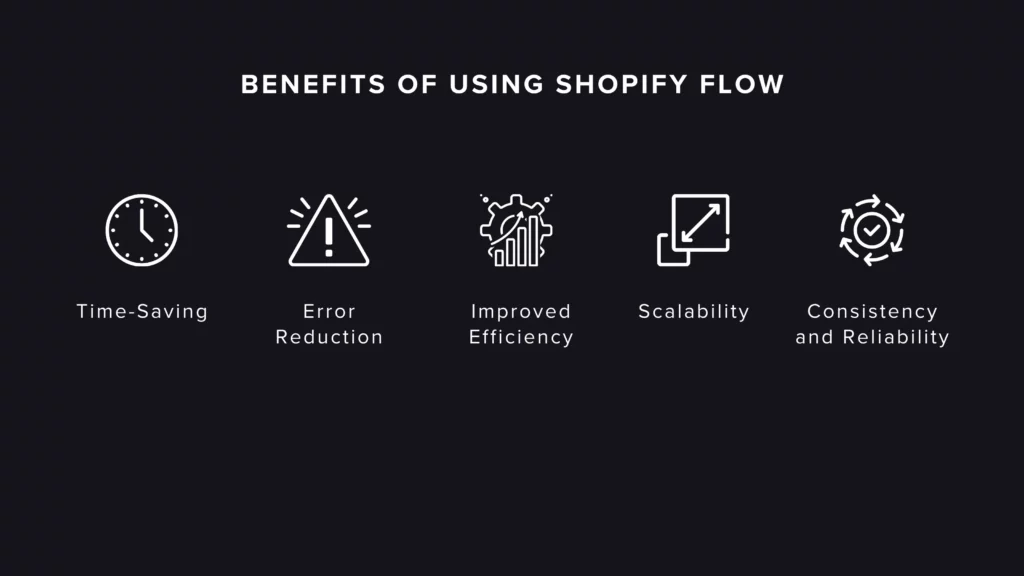
Utilizing Shopify Flow for eCommerce automation offers a multitude of advantages that can significantly enhance business operations. Here are some of them:
Shopify Flow automates repetitive and time-consuming tasks, such as inventory updates, order processing, and customer follow-ups. By automating these processes, you can save valuable time that can be redirected towards strategic activities, such as marketing, product development, and customer engagement.
Manual data entry and repetitive tasks are prone to human error, which can lead to costly mistakes. Shopify Flow minimizes these risks by ensuring that tasks are performed consistently and accurately. Automation reduces the likelihood of errors in critical processes like order fulfillment, inventory management, and customer communications.
Automation streamlines workflows, making business operations more efficient. With Shopify Flow, tasks are executed automatically based on predefined triggers and conditions, eliminating the need for manual intervention. This efficiency leads to faster processing times, better resource allocation, and improved overall productivity.
As your business grows, managing increasing volumes of orders, customers, and data can become challenging. Shopify Flow provides a scalable solution that can handle higher workloads without additional effort. Automated workflows can easily be adjusted and expanded to accommodate growth, ensuring that your business operations remain smooth and efficient as you scale.
Automated workflows ensure that processes are carried out consistently, adhering to the same standards every time. This reliability is crucial for maintaining high levels of customer satisfaction and operational excellence. Consistent execution of tasks also helps in building trust with customers and partners.
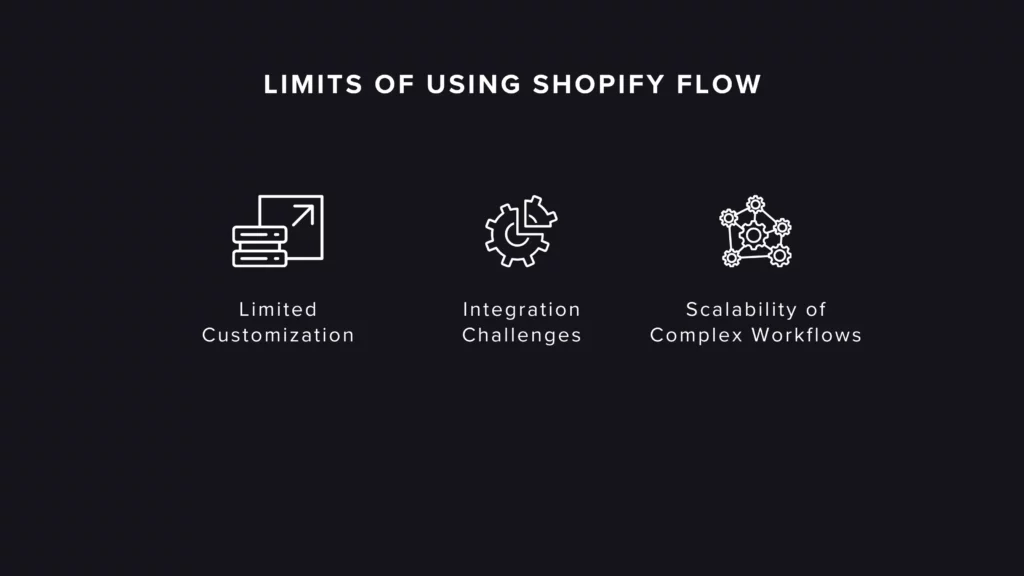
While Shopify Flow is a powerful tool for automating eCommerce operations, it’s important to be aware of its limitations and challenges. Here are some key considerations:
Although Shopify Flow offers a variety of triggers, conditions, and actions, there may be scenarios where the available options do not fully meet specific business needs. Advanced customization might require additional development work or third-party apps to fill in the gaps. This can lead to increased complexity and potential costs.
While Shopify Flow integrates with many third-party apps, there can be limitations in compatibility or functionality with certain tools. Businesses relying on specialized software may find it challenging to create seamless workflows without encountering integration issues. In some cases, additional middleware or custom API development may be necessary.
As businesses grow and their operational needs become more complex, managing a large number of workflows can become challenging. Ensuring that workflows are optimized and do not conflict with each other requires careful planning and ongoing maintenance. Overly complex workflows might also become difficult to troubleshoot and update.
Several successful businesses have leveraged Shopify Flow to streamline their operations and achieve impressive results. Here are a few real-world examples:
Good American, a leading fashion brand co-founded by Khloé Kardashian, uses Shopify Flow to automate various aspects of their eCommerce operations. By implementing workflows that manage inventory levels, segment customers, and trigger personalized marketing campaigns, Good American has been able to enhance efficiency and improve customer engagement. These automations have allowed the brand to focus more on growth and less on manual administrative tasks.
Cozykids, an online retailer specializing in children’s furniture and decor, utilizes Shopify Flow to streamline their order processing and inventory management. Automated workflows ensure that stock levels are updated in real-time, reducing the risk of overselling and improving order fulfillment accuracy. Additionally, Cozykids uses Shopify Flow to send automated follow-up emails to customers, enhancing their post-purchase experience and increasing customer satisfaction.
Mandaue Foam, a furniture and home decor company, has adopted Shopify Flow to manage their complex supply chain and customer service processes. With automated workflows in place, Mandaue Foam can efficiently handle large volumes of orders, track shipments, and manage customer inquiries. This automation not only improves operational efficiency but also provides a seamless shopping experience for their customers, contributing to higher customer retention and satisfaction.
Final Words
In this blog, we explored Shopify Flow’s capabilities, including its automation of workflows and key features such as building blocks, templates, and connector apps. We also discussed its benefits like time-saving and improved efficiency, as well as potential limitations.
Need more advice? Contact SECOMM today!
 2
2
 2,513
2,513
 0
0
 1
1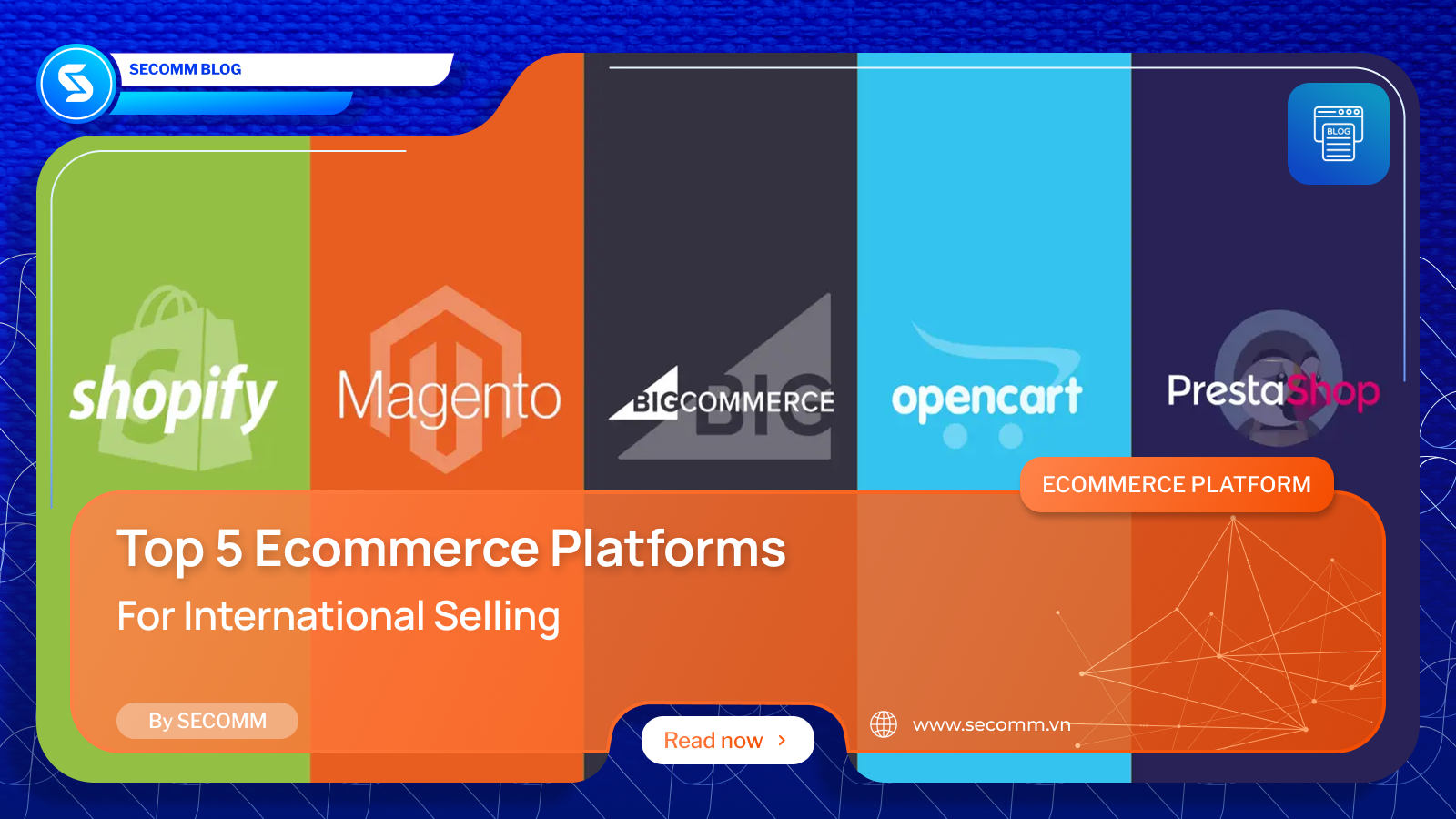
International eCommerce platforms are shaping the shopping trends of modern consumers worldwide, where geographical boundaries are no longer barriers to business activities. With the continuous development of technology and the internet, businesses have the opportunity to reach millions of customers around the globe more easily than ever. However, to succeed in the international market, choosing the right eCommerce platform is crucial.
In this article, let’s explore the top 5 platforms that effectively meet the needs of many businesses for implementing international eCommerce.
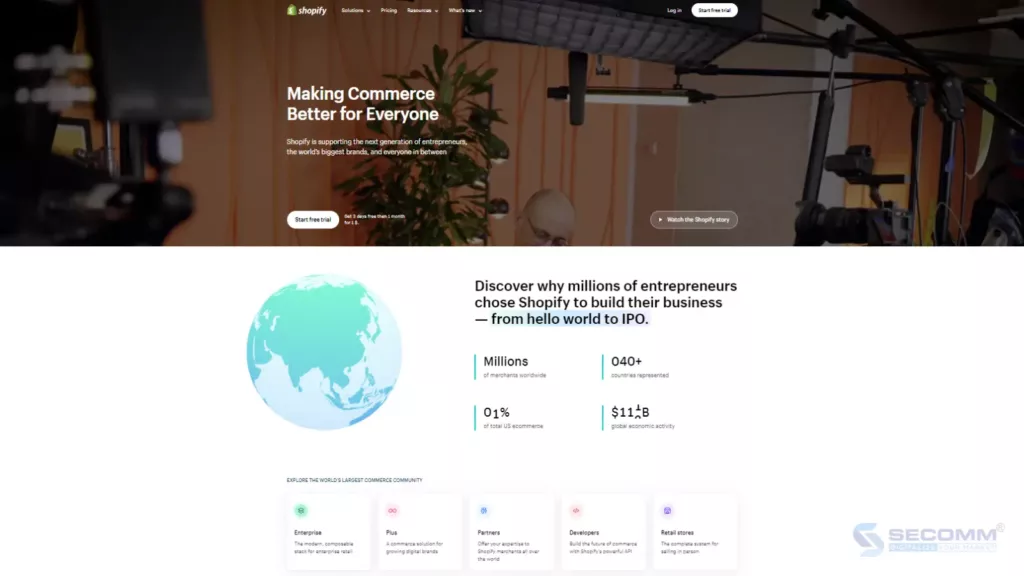
Shopify is a well-known SaaS eCommerce platform for businesses worldwide. It offers an all-in-one solution called Shopify Markets, allowing businesses to start selling in over 150+ different markets and manage efficiently on a single dashboard. Shopify Markets comes in two versions:
Integrated into all Shopify plans, providing core features including:
Fees are incurred per international transaction, including:
Includes all core features plus additional advanced features such as:
The cost of Markets Pro is 6.5% per transaction, including local payment processing fees, so businesses do not need to pay this fee separately. Additionally, businesses will pay 2.5% per transaction for currency conversion fees.
Advantages:
Disadvantages:
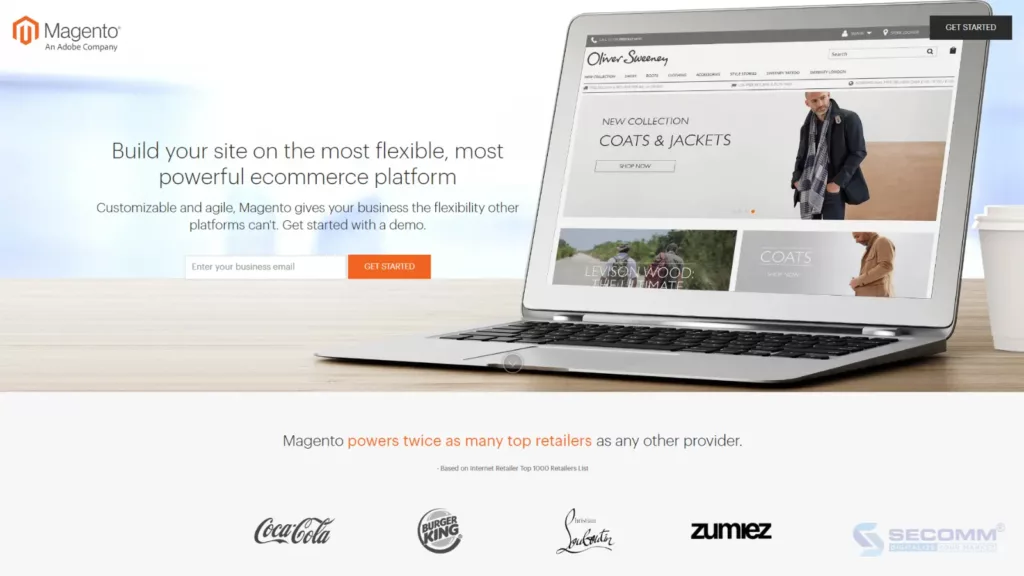
Implementing international eCommerce involves many challenges related to language, currency, and taxes, requiring websites to be optimally customized to provide the most engaging customer experience. This is why Magento is on this list.
Some standout features of Magento that support international commerce include:
Advantages
Disadvantages:
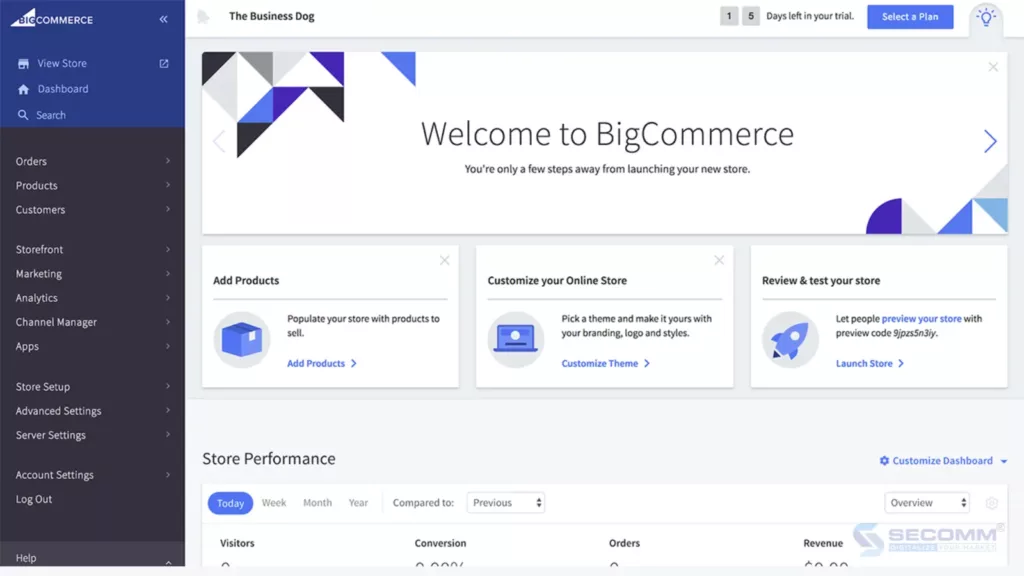
Similar to Shopify, BigCommerce is also a SaaS eCommerce platform that provides international eCommerce solutions. The platform offers features and tools to help businesses expand their operations in the international market simply and effectively.
Some standout features of BigCommerce supporting international eCommerce include:
Advantages:
Disadvantages:
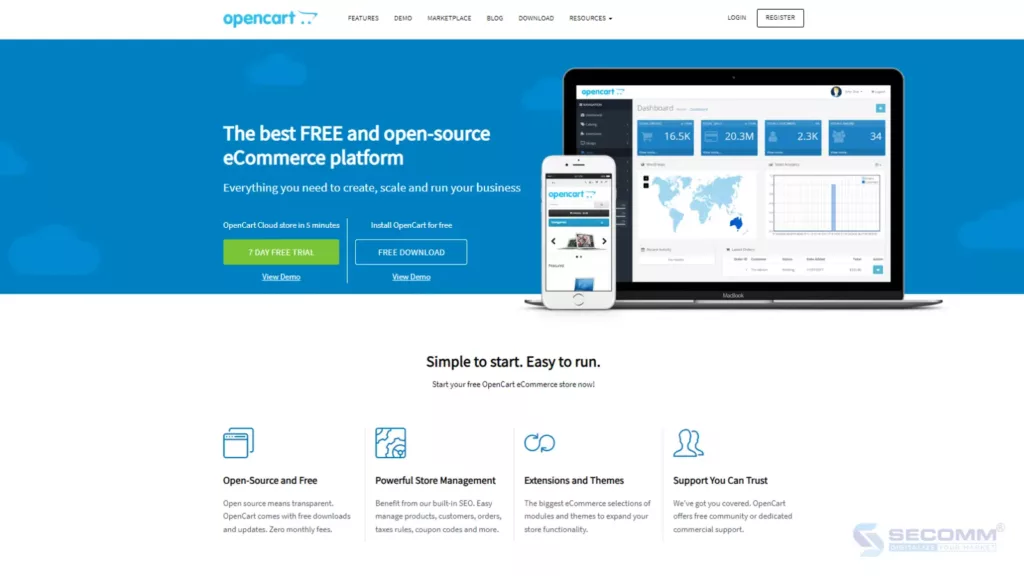
Similar to Magento, OpenCart is a popular open-source eCommerce platform used for international eCommerce implementation. This platform offers many useful features and tools, allowing businesses to better serve global customers.
Some standout features of OpenCart supporting international eCommerce include:
Advantages:
Disadvantages:
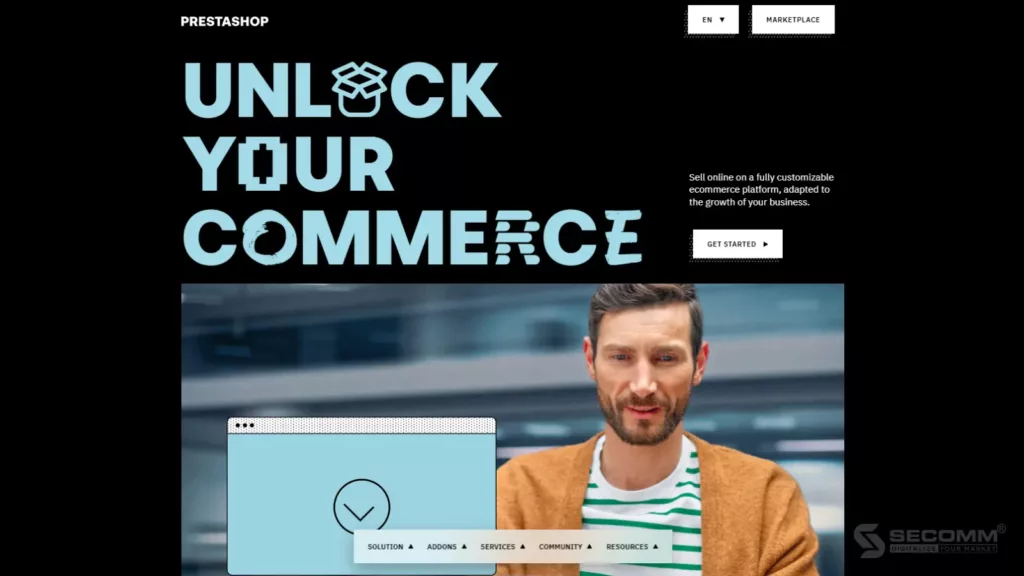
Another widely used open-source eCommerce platform for international e-commerce implementation is PrestaShop. With excellent customization and scalability, as well as outstanding tools and features, PrestaShop is the perfect choice for businesses looking to expand globally.
Some standout features of PrestaShop supporting international eCommerce include:
Advantages:
Disadvantages:
The Bottom Line
The above provides an overview of the top 5 platforms for implementing international eCommerce, each with its advantages and disadvantages. Depending on the scale, budget, and technical requirements, businesses can choose the most suitable platform for themselves.
Regardless of the choice, investing in a robust and flexible eCommerce platform will help businesses effectively reach international markets, increase sales, and expand their scale.
Need advice on implementing international eCommerce? Contact SECOMM today!
 152
152
 1,829
1,829
 0
0
 1
1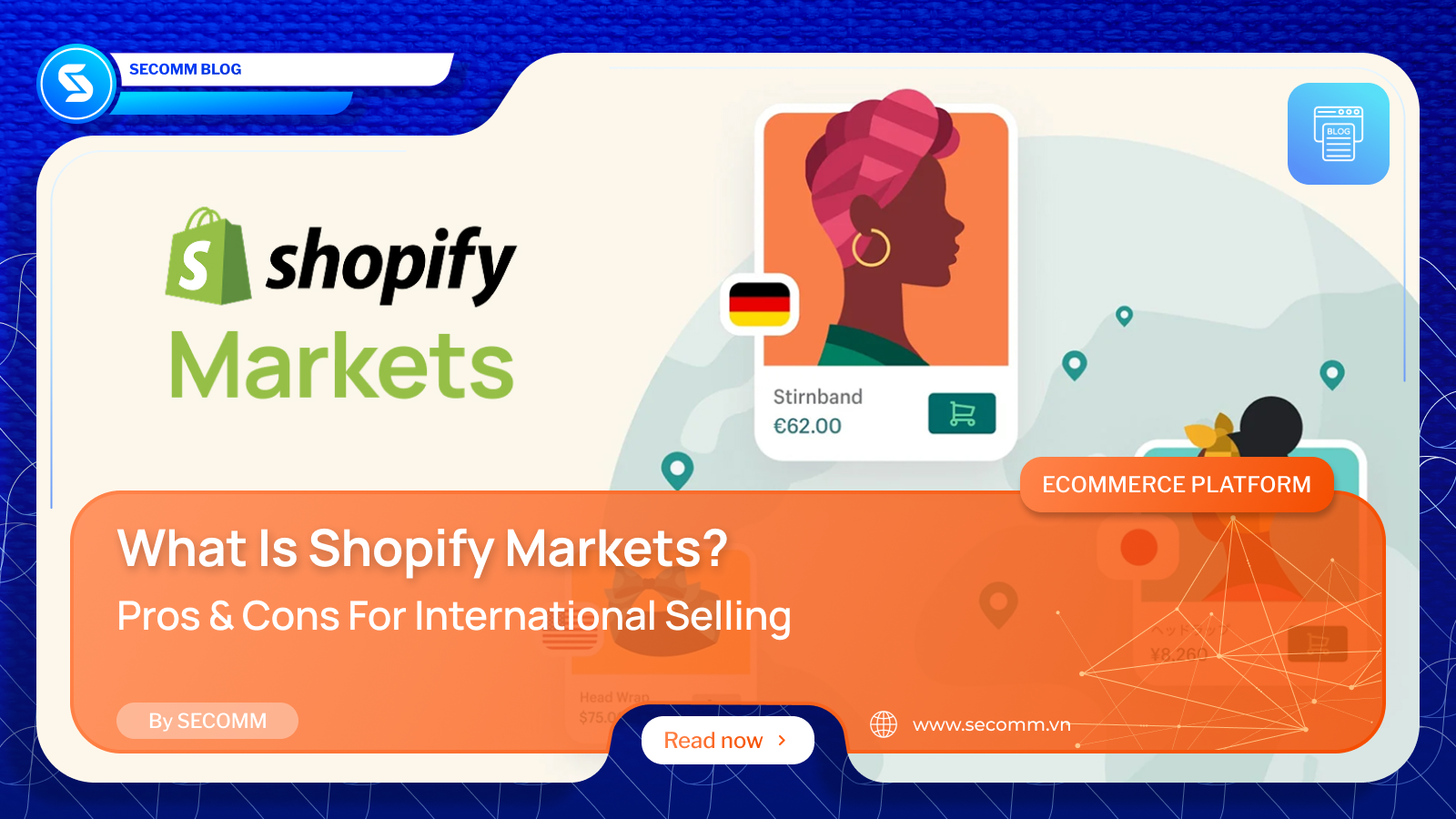
In the digital age, eCommerce is the key to helping businesses quickly and effectively reach global customers. Shopify, a renowned SaaS platform supporting online business, has launched the Shopify Markets solution to assist businesses in expanding into global markets. So, what is Shopify Markets? What benefits and challenges does this solution bring to your business when implementing international eCommerce? Let’s explore in the article below.
Shopify Markets is a new solution from the Shopify platform, designed to help you easily and efficiently expand your business into global markets. This tool allows you to manage multiple stores from a single dashboard, customizing each market with specific settings for language, currency, taxes, and payment methods. Moreover, Shopify Markets integrates with international shipping and logistics services, enabling you to optimize your operations and meet the demands of global customers.
Previously, multi-store setups have been done by using Shopify Plus, allowing merchants to establish and operate separate Shopify stores for each target market. This approach gave merchants full control over individual stores, such as running market-specific marketing campaigns, promotions, and inventory management.
However, this approach had several drawbacks. First, operating multiple standalone stores meant discrepancies in inventory levels, requiring data synchronization between stores. This process was time-consuming and prone to errors. Many merchants addressed this issue by integrating systems like PIM or ERP. Second, the workload increased due to the need to update content for each store individually. Third, many merchants complained about having to pay for the same app or integration across multiple stores, leading to inefficiencies in financial management.
Thus, the advent of Shopify Markets serves as a remedy for these three issues. Now, you can apply multi-language, multi-currency, international pricing, domain or subdirectory, and Geolocation features for the stores, all managed efficiently from a single dashboard.
When deploying international eCommerce, the importance of multi-language support cannot be overstated. According to CSA Research, 76% of online shoppers prefer to purchase products with information displayed in their native language. Meanwhile, 40% will never buy from eCommerce websites in a different language.
By using Shopify Markets and the built-ịn Translate & Adapt app, your website can be automatically translated into the languages of your target markets. Beyond mere translation, Shopify’s Translate & Adapt app can customize store content to better connect with local customers. This ensures that your eCommerce website maintains cultural, regional, and seasonal relevance—even when markets share the same language—the app can adjust for variations in vocabulary, spelling, and messaging.
Global customers want to see product prices in their own currency when shopping on eCommerce websites. A PayPal report supports this, showing that 76% of survey participants prefer to pay in their local currency. Shopify Markets can automatically convert product prices into over 130 different currencies to cater to your target customers. From product pages to shopping carts, and from checkout to refunds, Shopify Markets can create a seamless multi-currency shopping experience for customers, which will boost conversion rates and sales.
Shopify Markets can help create localized domains linked to specific languages and countries. For example, “myshop.com” could be the main site operating in the US, “myshop.ca” for the Canadian market, and “myshop.co.uk” for the UK. This not only increases credibility and optimizes SEO but also enhances brand recognition in each market.
Shopify Markets allows the setup of subdirectories for each language or region under the same main domain, such as “myshop.com/en” for English, “myshop.com/fr” for French, and “myshop.com/de” for German. Using subdirectories helps easily manage local versions of the store, improve user experience, and optimize costs related to maintaining multiple domains.
Payment methods significantly influence purchasing decisions. According to a Worldpay report, 27% of users will abandon the checkout process if they cannot find their preferred payment method.
With Shopify Markets, you can offer your customers a variety of local payment options, alongside familiar choices like credit/debit cards, PayPal, Apple Pay, and Google Pay. Some examples of local payment method integrations include:
When selling in international markets, pricing can be affected by duties and import tax. In many cases, unexpected costs for customers can lead to a negative shopping experience.
The Shopify Markets solution can help address this issue. This tool can calculate taxes based on the shipping address and the legal regulations of each country, including value-added tax (VAT), sales tax, and other import duties. When customers proceed to checkout, the system clearly displays these taxes, helping them understand the total shopping cost and avoid unpleasant surprises.
Shopify Markets also collects and remits these taxes to the appropriate tax authorities, saving your time and effort in handling tax procedures. This feature also integrates with shipping services to ensure all tax-related costs are accurately reflected, allowing you to plan expenses more effectively. Therefore, you can comply with legal regulations, enhance the customer shopping experience, and optimize your operations.
Shopify Markets is included in all Shopify plans, but the features available to merchants vary by plan. Here are the core features that all Shopify merchants can use when embracing Shopify Markets:
For the higher-tier plans, Advanced and Plus, merchants can access exclusive features. This is particularly beneficial for larger enterprises looking to establish and maintain a strong, competitive presence in international markets:
Shopify Markets Pro is the upgraded version of Shopify Markets, designed to offer more advanced features. This solution aims to support large-scale merchants in efficiently and flexibly managing complex international operations. The “Pro” version helps sell in over 150 different markets, providing powerful tools to optimize operations, manage taxes and costs, and enhance the international customer experience.
Some special features exclusive to the Pro version include:
Final Words
Shopify Markets is truly a robust solution for going globally and manage target stores efficiently and flexibly. However, alongside its strengths, this solution also has several notable limitations.
Depending on the scale, number of target stores, and the need to create a customized shopping experience, you can weigh the standard version against the Pro version. Nevertheless, you must carefully consider cost factors and management capabilities to ensure these solutions align with your strategies.
Need more advice? Contact SECOMM today!
 30
30
 2,218
2,218
 0
0
 2
2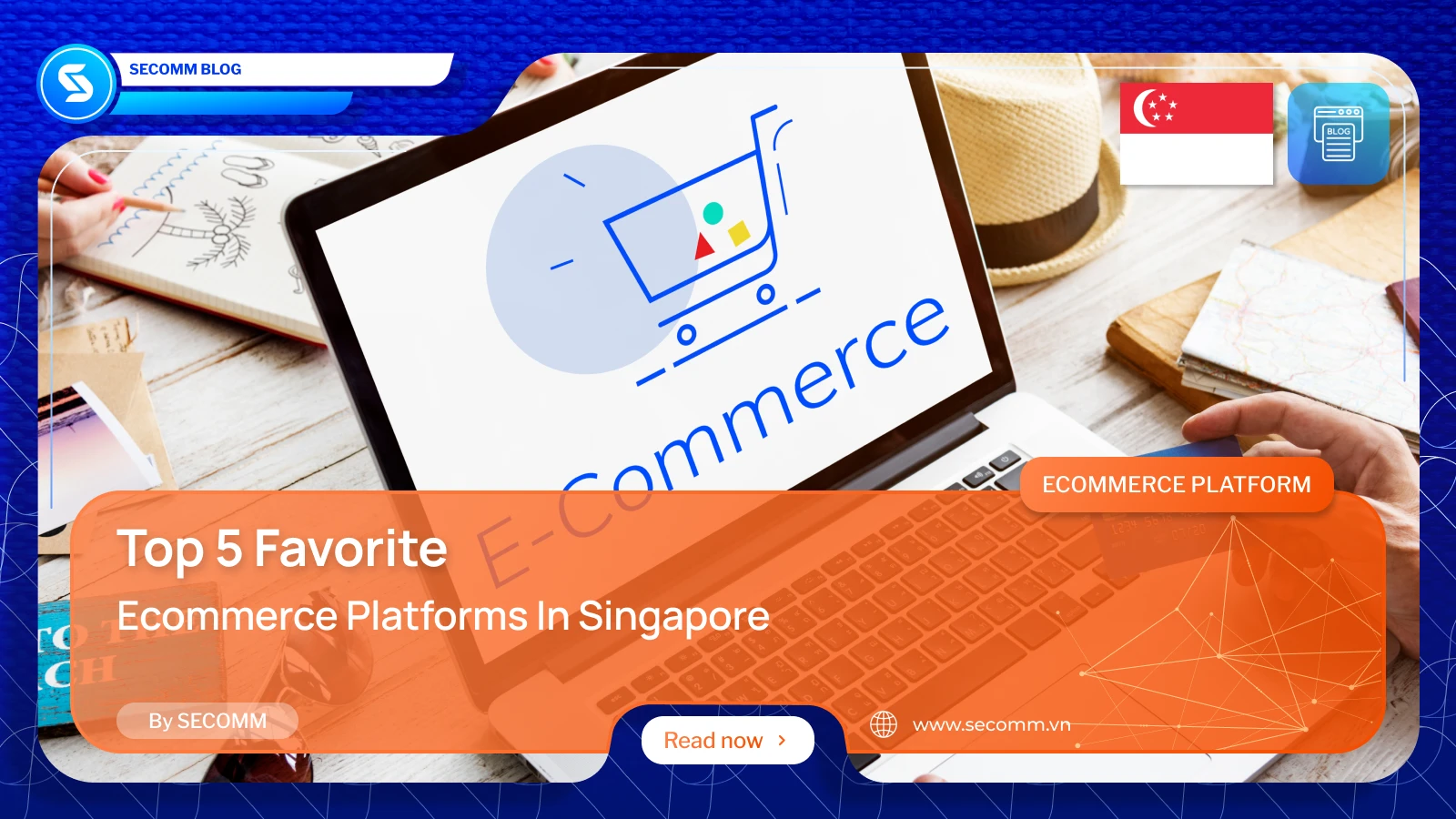
eCommerce in Singapore is continuously evolving with the emergence of new technological solutions. As a result, the options for eCommerce platforms are becoming increasingly abundant and diverse. This presents both opportunities and challenges for every merchant, as selecting the right platform to build an eCommerce website is a crucial first step.
Here are the five most commonly used eCommerce platforms in the Lion City.

Shopify is a popular SaaS eCommerce platform with over 4.8 million active websites. In Australia alone, over 8 thousands live stores are operating on the Shopify platform.
Recently, the premium version of Shopify, ‘Plus,’ has garnered attention from businesses across various sectors in Singapore. These merchants may have previously deployed different eCommerce platforms and later switched to Shopify Plus to seek a superior solution. Some merchants initially launched websites with standard Shopify packages and later upgraded to ‘Plus’ to optimize their operations.
Key features:
Pros:
Cons:
Shopify Pricing

Magento is a globally popular open-source platform, and its prevalence extends to Australia as well. According to BuiltWith, there are currently about 661 e-commerce websites operating on the Magento platform in the Lion Island.
With its high flexibility, merchants can effortlessly tailor features and scale the system according to their unique business requirements.
Presently, Magento provides two versions: Open Source (Free) and Adobe Commerce (Paid).
Key features:
Pros:
Cons:
Pricing:
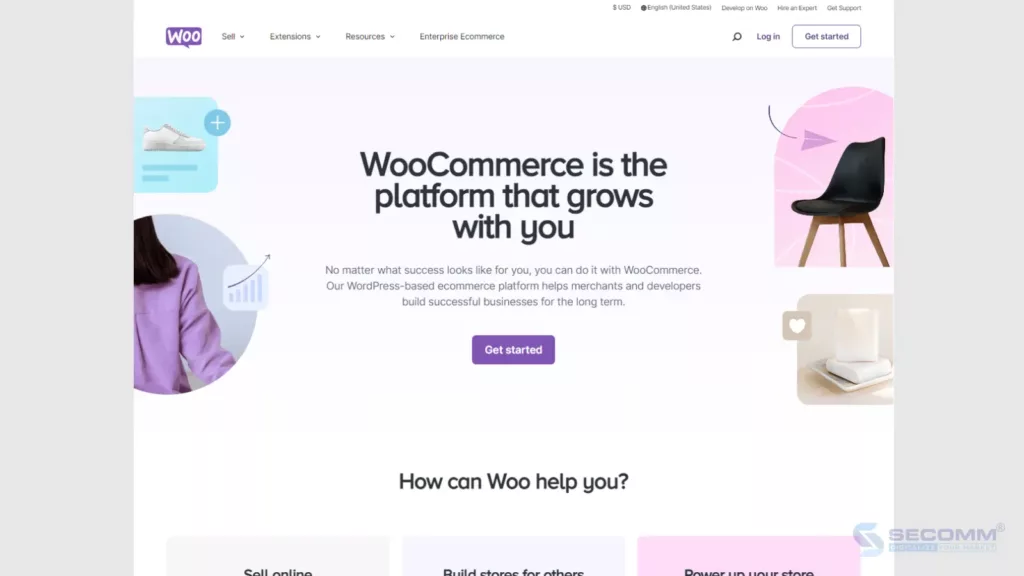
WooCommerce, a free and open-source WordPress plugin, enables brands to integrate eCommerce functionality into their existing WordPress websites. With just a few clicks, the WooCommerce plugin helps convert a standard WordPress site into a fully-featured eCommerce platform, complete with essential features and easy customization. At the time of writing, there are over 13,000 WooCommerce eCommerce websites operating effectively in Singapore.
Key features:
Pros:
Cons:
Pricing: Free to use. However, some integrations with other plugins may incur charges.
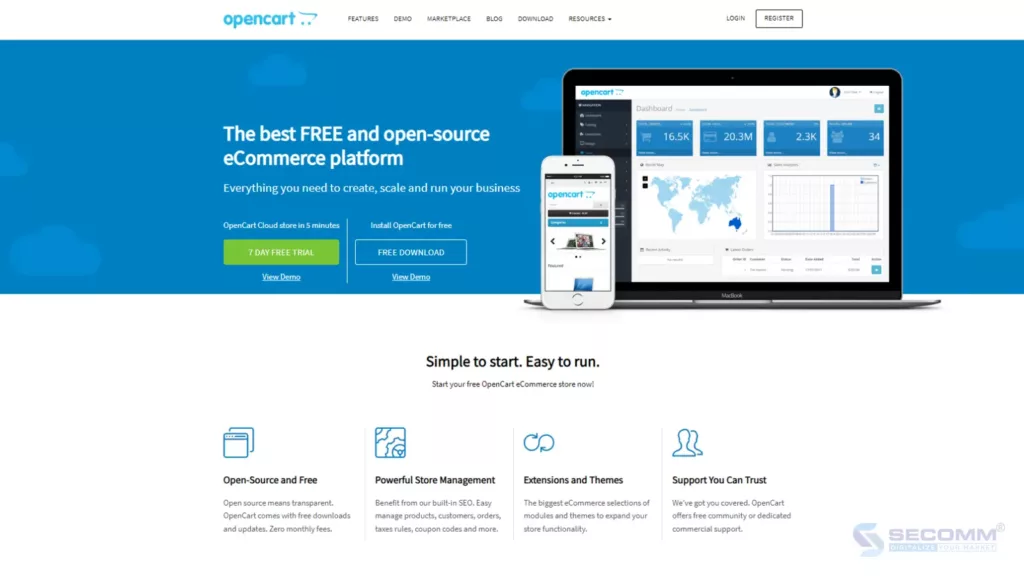
OpenCart is a globally popular open-source eCommerce platform, powering over 900 thousand active websites worldwide. In Singapore, it has gained popularity with more than 1,600 live OpenCart sites, establishing itself as a favored open-source platform in the country, following Magento.
Founded by Daniel Kerr in 1998, OpenCart operates as open-source software, utilizing the PHP programming language. It currently offers two versions: Free (Free-to-use version) and Cloud Store (Paid version).
Key features:
Pros:
Cons:
Pricing:
Free for the Free version. For the Cloud Store version, the specific costs are as follows: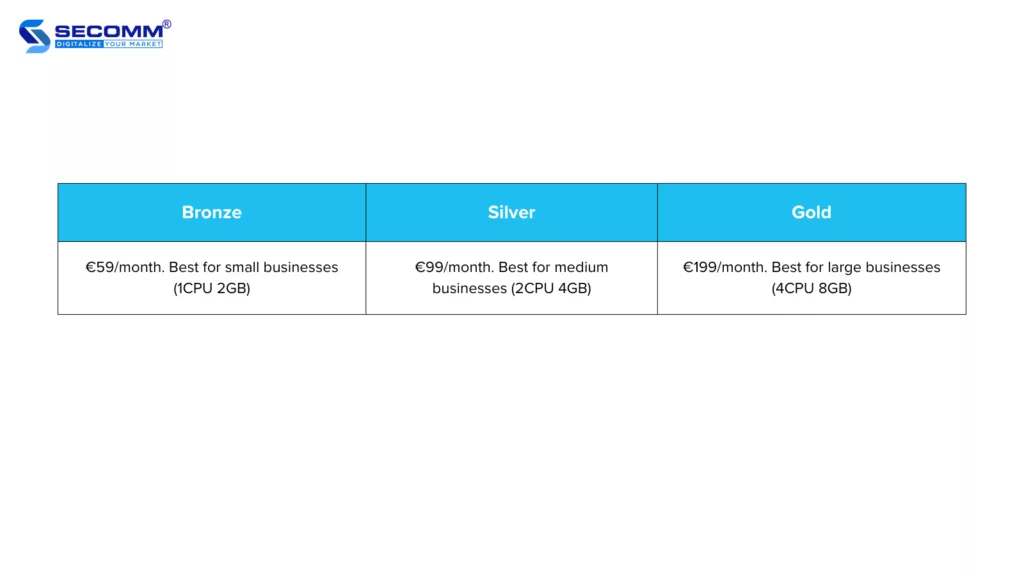
The ‘Cloud Store’ version pricing plan

Another open-source platform that is equally popular in Singapore is PrestaShop, with over 270 eCommerce websites currently in operation. The strength of PrestaShop lies in its flexibility and high customization capabilities, allowing users to easily adjust functionalities and interfaces to meet their specific needs. Additionally, with a vibrant developer community and thousands of available modules and themes, PrestaShop not only provides a comprehensive eCommerce solution but also continuous support to ensure that websites run smoothly and efficiently.
Key features:
Pros:
Cons:
Pricing: Free to use, but charges apply for complex requirements
These are the five popular eCommerce platforms in Singapore that many merchants choose to build their eCommerce websites. Depending on specific implementation needs, businesses can consider the most suitable platform.
Need more advice? Contact SECOMM today!
 2
2
 1,934
1,934
 0
0
 1
1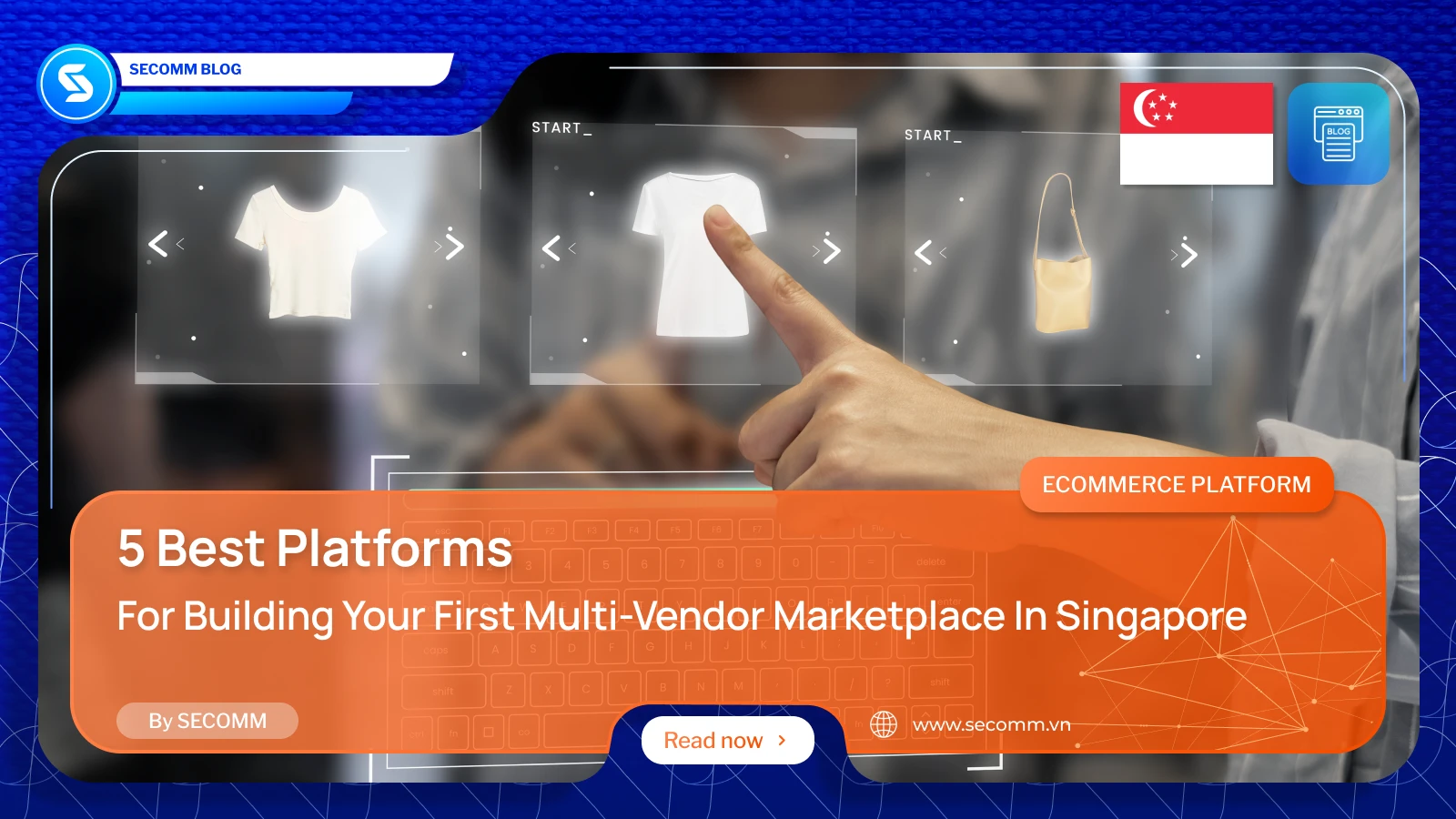
Shopping on multi-vendor marketplaces has become an essential part of modern life, particularly in Singapore, one of the busiest commercial hubs in Asia. As such, building and efficiently managing an eCommerce marketplace is crucial for businesses. However, selecting the right platform can be challenging. This article will introduce the five most reliable platforms that many businesses in Singapore use to build their own.
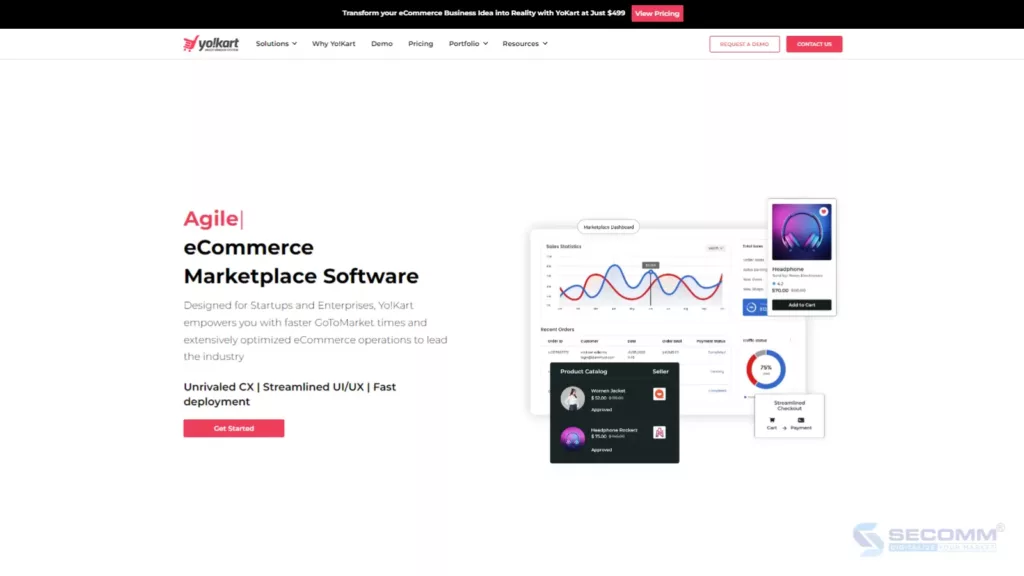
Yo!Kart is a leading self-hosted eCommerce solution that businesses can consider for building a custom multi-vendor marketplace. Designed to be user-friendly, Yo!Kart allows businesses to have full control, customization, and flexible scalability to manage and operate their eCommerce platform more effectively.
Key features:
Pros:
Pros:
Price: Starting from $1099/year. However, costs may vary based on specific requirements.
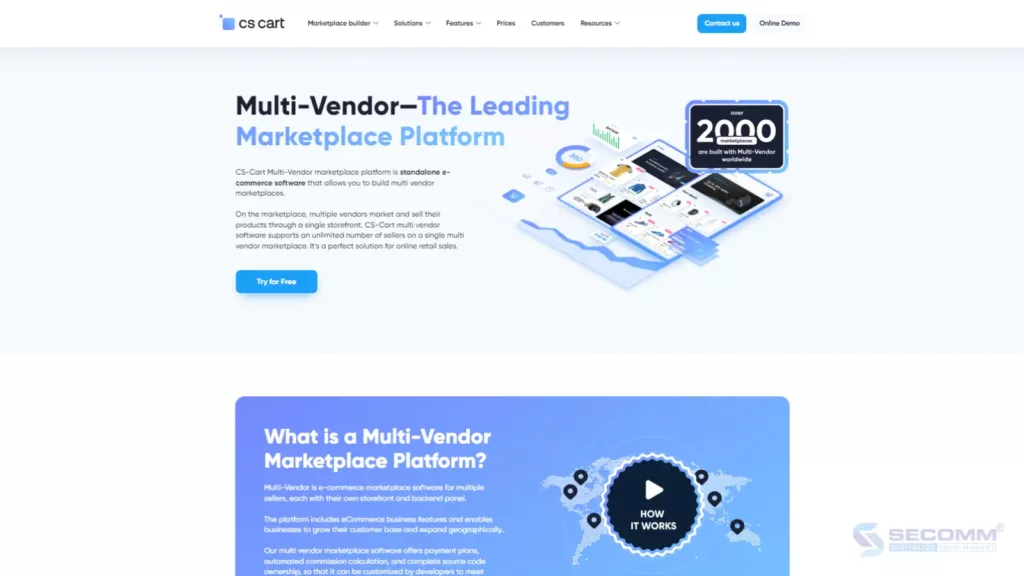
CS-Cart Multi-Vendor is known as a specialized platforms for building multi-vendor marketplaces with robust customization and scalability. With over 26 integrated languages and numerous unique features, this platform is an all-in-one solution suitable for various industries and deployment needsneeds.
Key features:
Pros:
Cons:
Price: Pricing may vary depending on specific needs
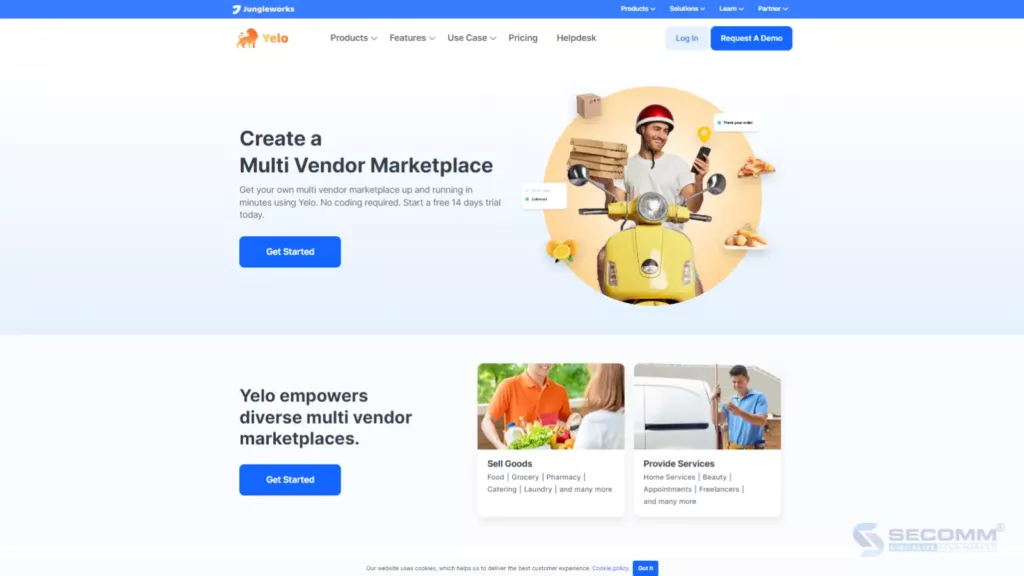
Yelo is flexible multi-vendor marketplace designed to help businesses of all sizes easily create and manage their online store. With Yelo, businesses can quickly build custom eCommerce marketplaces equipped with comprehensive features for administrators, sellers, and buyers.
Key features:
Pros:
Cons:
Giá: Costs start at $12/month
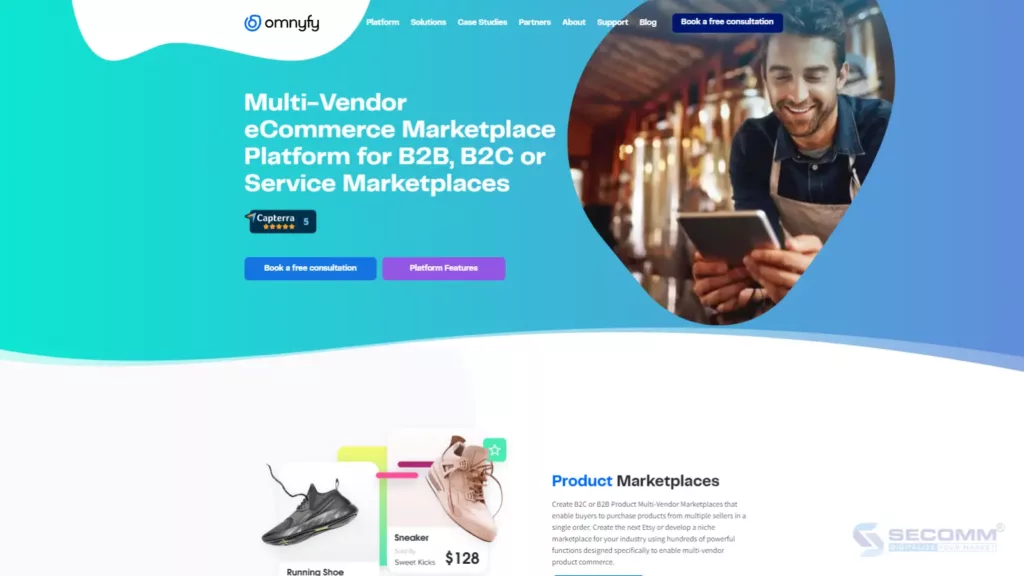
Omnyfy is a powerful multi-vendor marketplace designed to meet the needs of both B2B and B2C businesses. With its multi-channel management support and flexible integrations. Omnyfy enables businesses to create a comprehensive eCommerce ecosystem, from product management to customer service.
Key features:
Pros:
Cons:
Price: Pricing may vary depending on specific needs
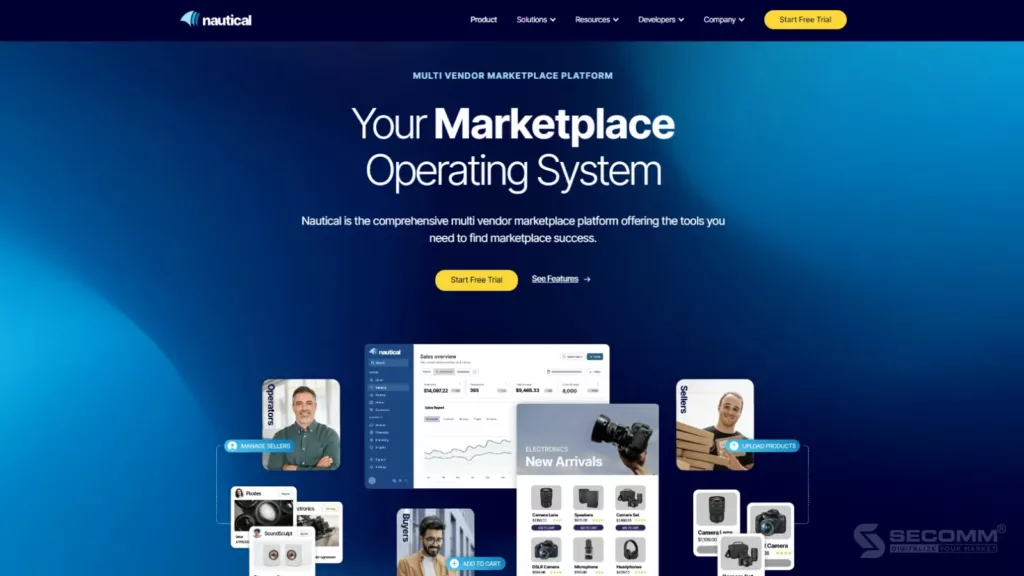
Nautical Commerce is favored by businesses in Singapore for providing a range of comprehensive solutions to make managing and operating multi-vendor marketplaces easier. With Nautical Commerce, businesses can leverage the latest technologies to improve business efficiency and enhance user experience.
Key features:
Pros:
Cons:
Price: Pricing may vary depending on specific needs but 14-day free trial available
Final Words
Here are 10 popular and reliable multi-vendor marketplace platforms widely deployed in Singapore. From Yo!Kart, CS-Cart Multi-Vendor, Yelo to Omnyfy and Nautical Commerce, each platform has its own pros and cons, suitable for different needs.
Need advice on deploying an eCommerce marketplace? Contact SECOMM today!
 2
2
 1,661
1,661
 0
0
 1
1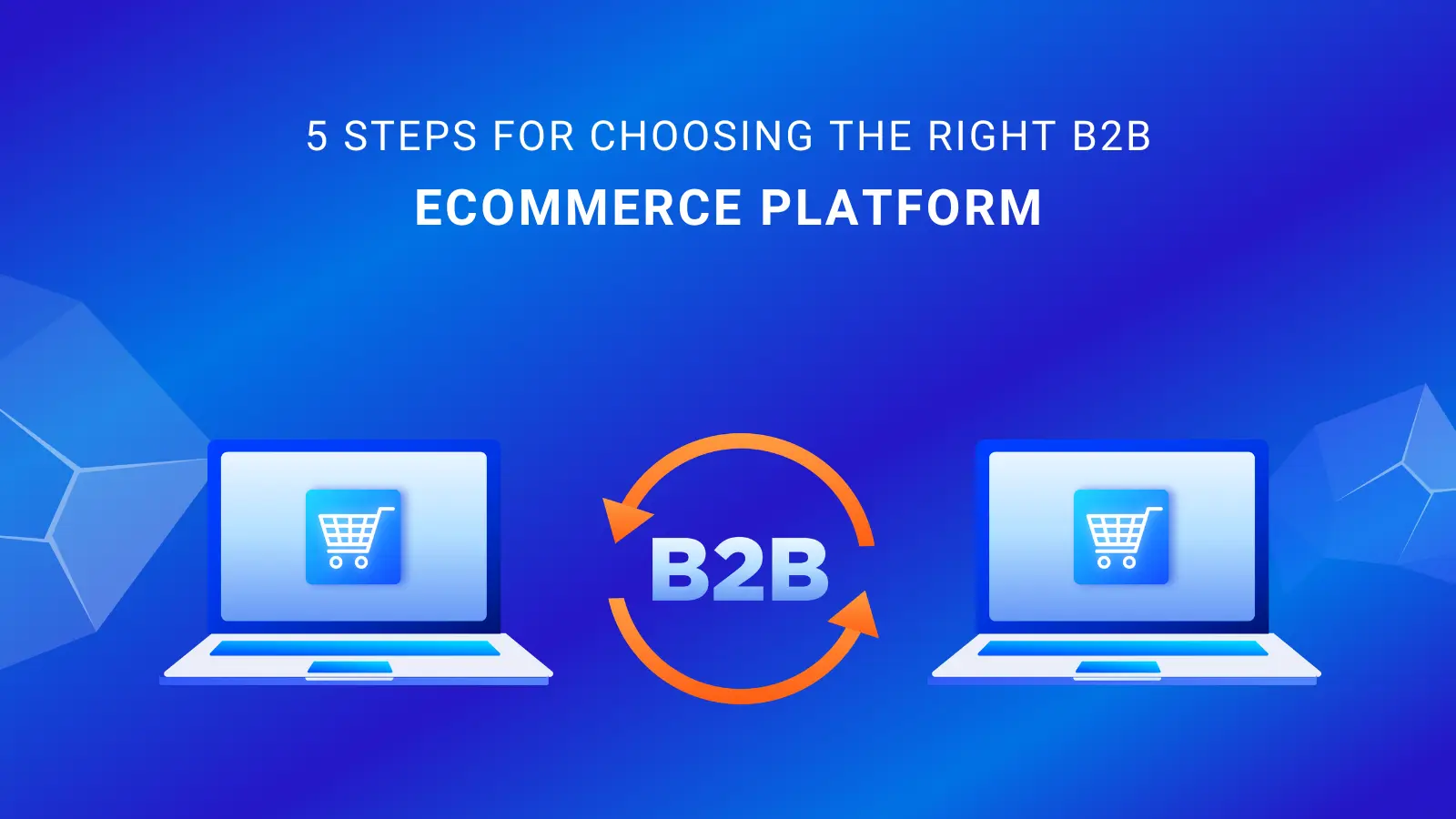
B2B eCommerce represents a vast opportunity, often likened to a sizable cake sliced evenly for every business. Bobby Morrison, Shopify’s Chief Revenue Officer, echoes this sentiment, suggesting that this business model will be a significant opportunity for enterprises of all sizes in 2024 and beyond.
Selecting the appropriate B2B eCommerce platform is pivotal for success, yet with the multitude of options available, it’s not always a straightforward decision. Let’s delve into the key considerations when choosing a B2B eCommerce platform and explore the essential steps to ensure that the chosen platform aligns best with the business’s needs.
Read more: B2B eCommerce: The next big opportunity in 2024 and beyond
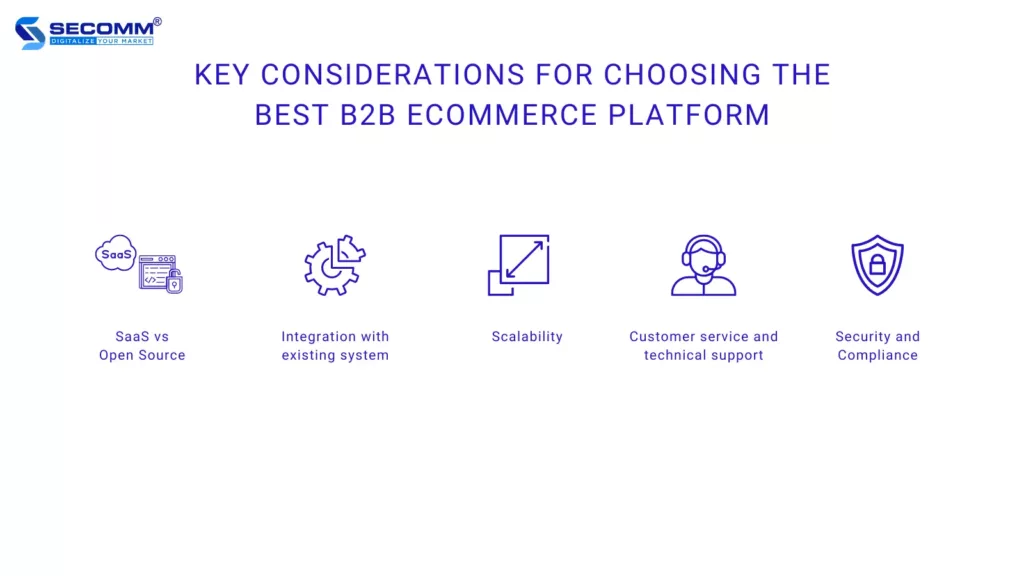
When confronted with various B2B eCommerce platforms, making an accurate decision requires careful consideration of the following important factors:
These are the two most common deployment models when it comes to eCommerce in general and B2B eCommerce in particular. B2B eCommerce SaaS platforms are services provided over the internet and run on the service provider’s cloud infrastructure. Some familiar service providers are Shopify and BigCommerce. Data is stored on the service provider’s servers, and they will directly manage it. This ensures high flexibility, low initial costs, and easy scalability, but businesses will face some limitations regarding customization and data control.
On the other hand, Open Source platforms like Magento or OpenCart are publicly available source code, and developers can modify them. This allows for optimized control and freedom to customize as needed. However, managing open-source code also requires high technical knowledge and may pose some security risks.
Choosing a B2B eCommerce platform capable of seamless integration with existing systems will optimize business operations and create a better experience for both the enterprise and its customers. Several aspects need to be considered when evaluating integration capabilities:
The scalability of a B2B eCommerce platform is extremely important to ensure that a business can grow flexibly and efficiently. The platform needs to be able to handle large volumes of traffic, manage data effectively, integrate with expandable services, and be flexible in customization and adjustments. This helps businesses optimize costs and enhance productivity, while also preparing for future growth.
This is an essential component of any B2B eCommerce platform. It ensures that the business has the necessary resources and support to address technical issues and challenges, as well as to ensure that customers are best supported. Services need to provide quick, quality responses, offer diverse communication channels, detailed support documentation, and continuous training to ensure an optimal experience for all parties involved.
Protecting the vital information of customers and businesses is extremely crucial, especially in the eCommerce industry where sensitive data such as payment information and personal details are exchanged regularly. B2B platforms must adhere to safety standards like GDPR or PCI DSS. Safeguarding server infrastructure and networks is essential to ensure system security against attacks like DDoS, for instance.
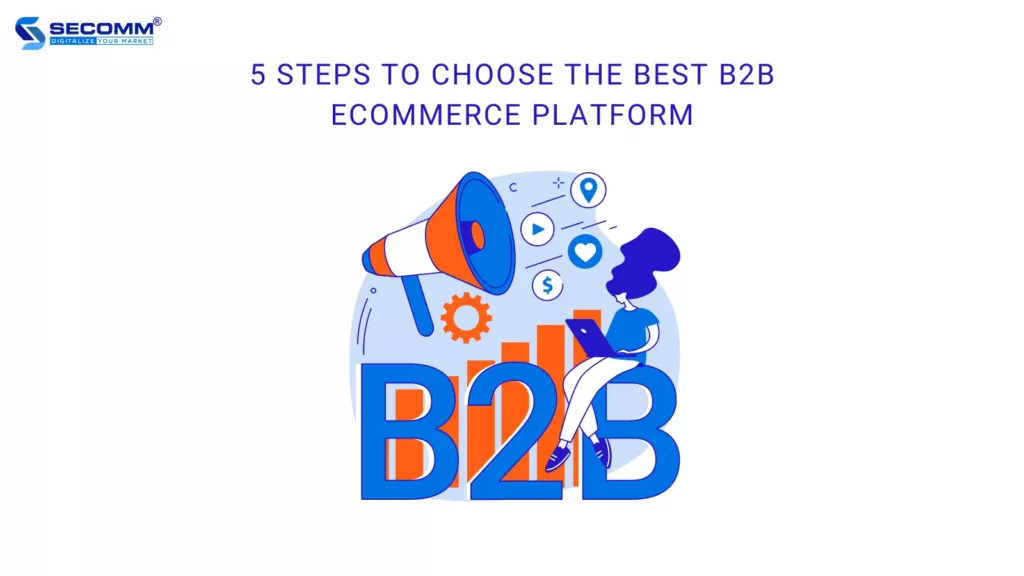
Once you have a clear understanding of the important factors to consider when choosing a B2B eCommerce platform, the next step is to identify specific steps to select the platform that best suits the needs and business objectives of the enterprise. Here are some basic steps that may be helpful in this process:
Starting by partnering with a reputable and experienced development partner in the eCommerce field can make the deployment process smoother. Developers like SECOMM have professional teams with experience deploying various B2B platforms, enabling them to advise and propose the most suitable solutions for specific business needs. Deep understanding of technical aspects and business processes ensures that the deployment project runs smoothly and achieves desired results.
This is a crucial step where the business and development partner need to clearly define short-term and long-term business goals, determine whether to integrate B2C and B2B sales within the same system, and establish criteria for selecting a platform. Additionally, listing the features to be implemented in the B2B eCommerce system is essential for quickly finding a platform that meets the business requirements.
The business needs to make decisions considering both budget and timeline to complete the project.
Regarding budget, implementing a B2B eCommerce project will involve various related costs, so when choosing, the business needs to consider whether the platform’s price will affect the overall budget. In particular, the deployment costs of SaaS and Open Source platforms differ significantly and will also impact the business’s decision.
Next, the business needs to determine the desired go-live time – the moment when the B2B eCommerce website goes live. This will depend on the complexity of the project and the business’s chosen platform model. While typical projects deployed on SaaS take about 3 to 4 months to go live, with Open Source, it takes around 6 months to 1 year.
This step requires a thorough research process on the available B2B eCommerce platforms in the market and conducting comparisons based on specific criteria such as price, features, performance, security, scalability, and customization, as well as user feedback. Businesses can collaborate with development partners to carry out this process. By conducting careful research and comparisons, businesses gain a comprehensive picture and deep understanding of each option to make the most appropriate decision.
Based on the results of the research and comparison process, the business proceeds to select the platform that best fits its needs and business objectives. Next, the business and its partner need to develop a detailed plan for the deployment process with that platform, including specific deployment steps for each phase in the short and long term, as well as the resources and estimated time for each phase.
Read more: Top 5 platforms for B2B eCommerce
3. Final Words
Above are the specific 5-step process and factors to consider for businesses to select the B2B eCommerce platform that best aligns with their goals. Throughout the research and platform selection process, the development partner plays a role as a reliable companion, providing necessary suggestions and support in the platform selection and deployment planning process.
Need advice on choosing your right platform? Contact SECOMM today!
 2
2
 1,781
1,781
 0
0
 1
1Subscribe to get the latest eBook!
Hotline